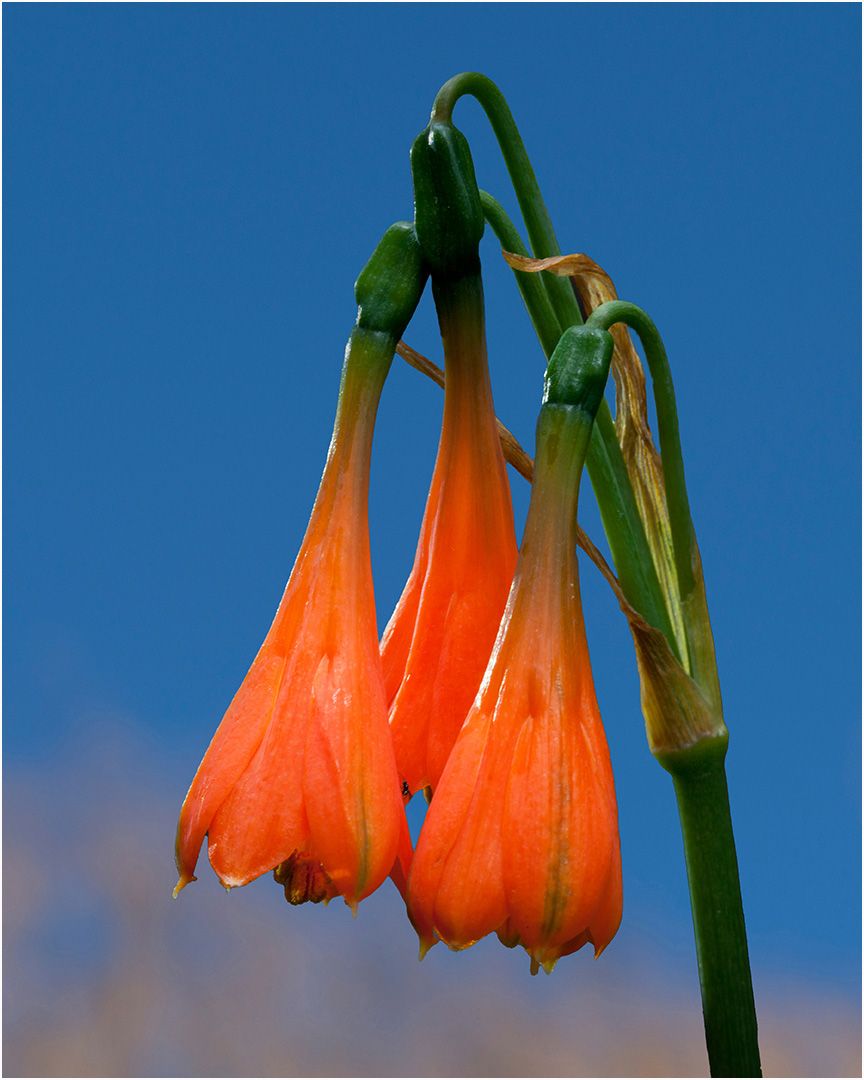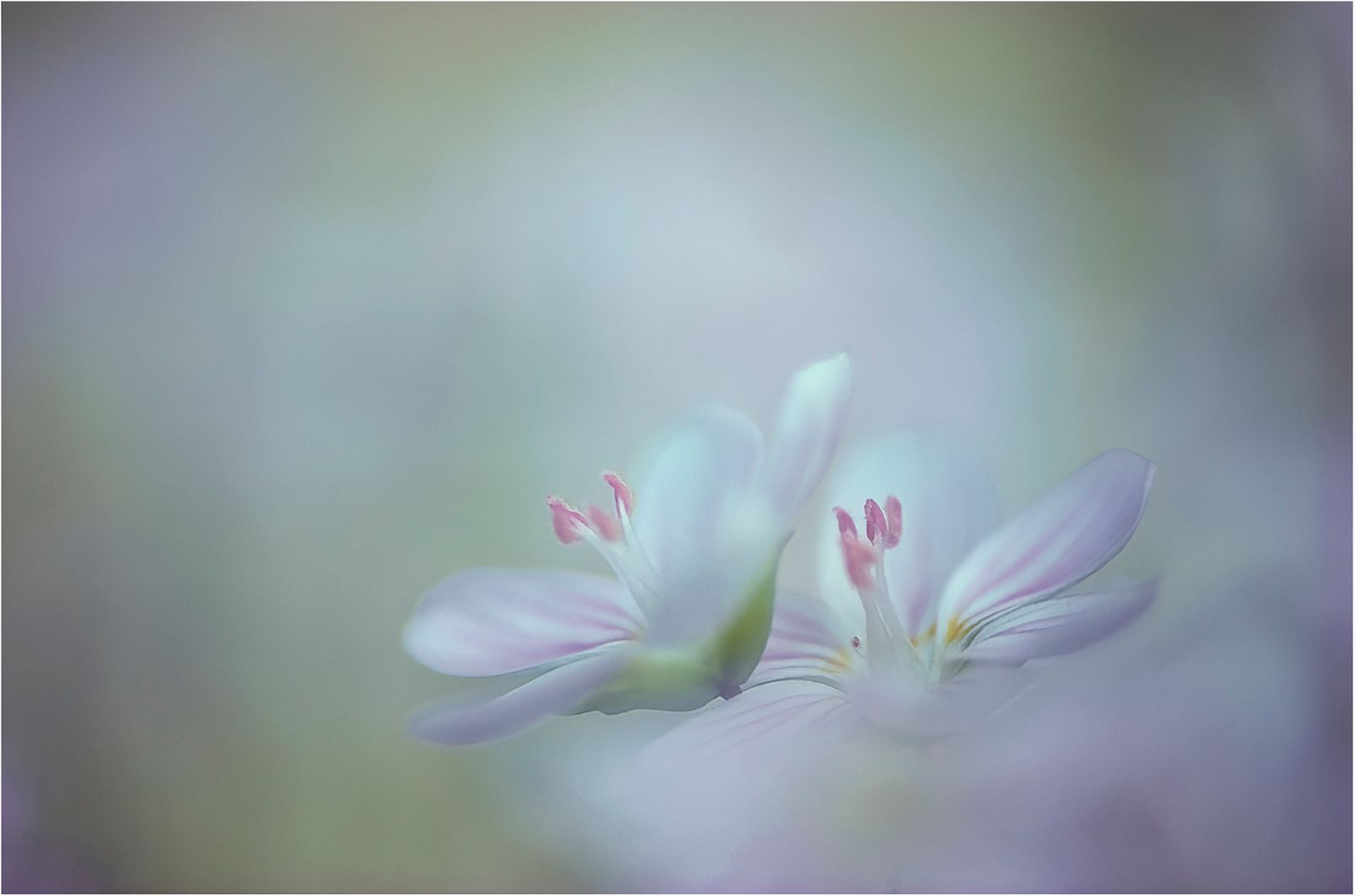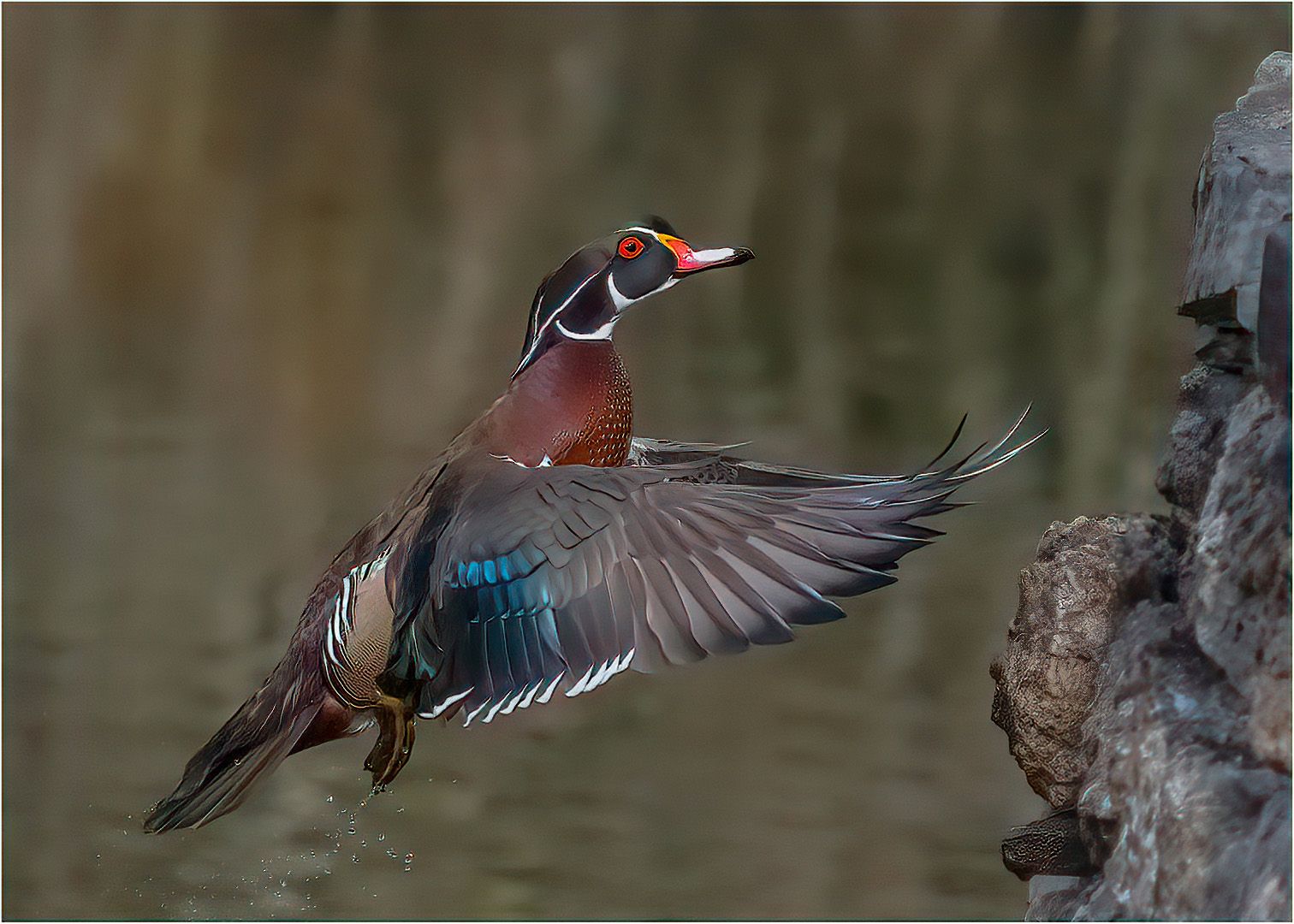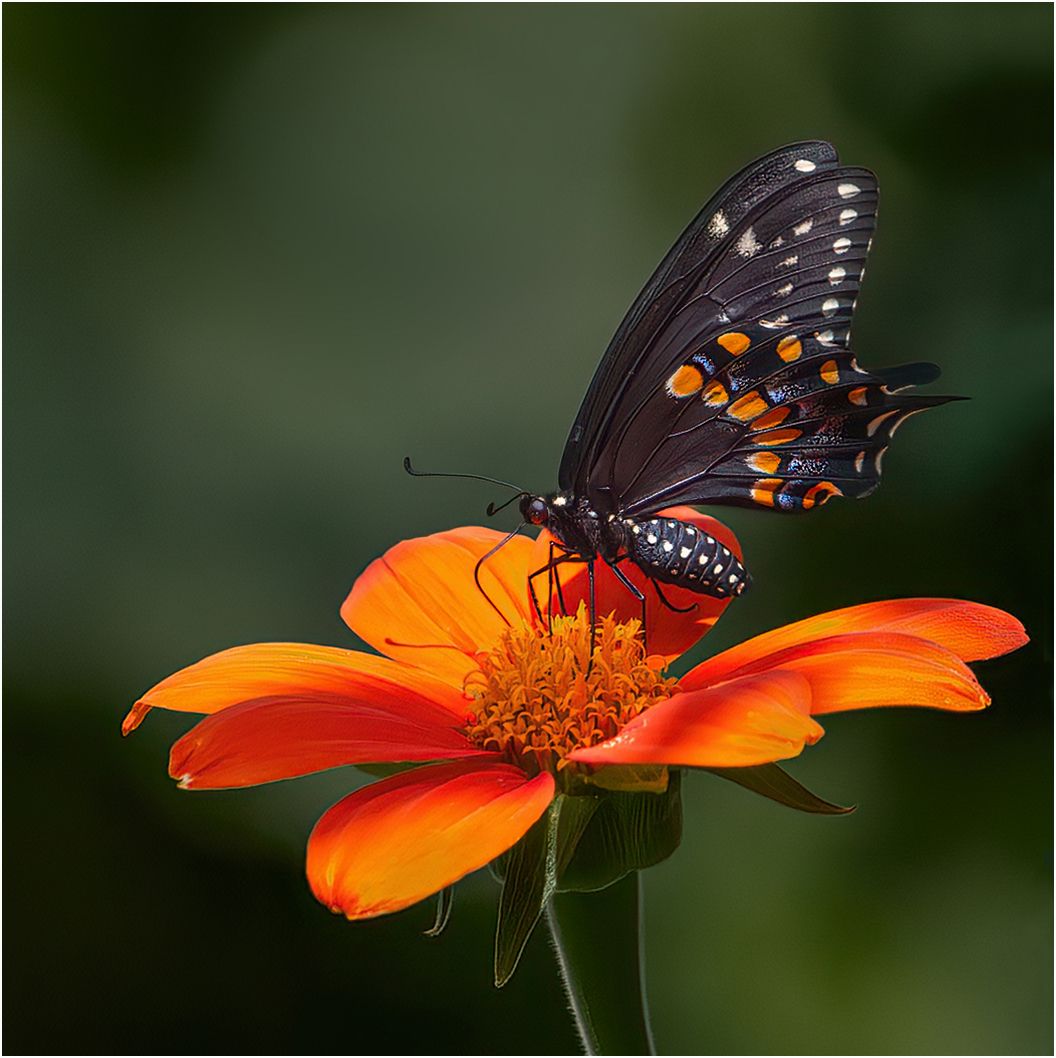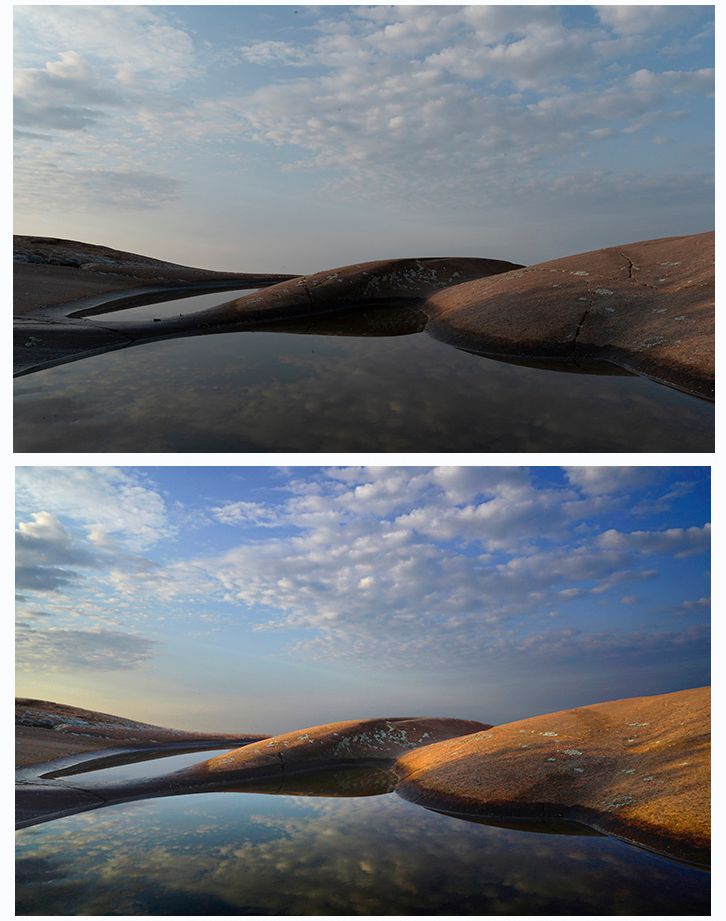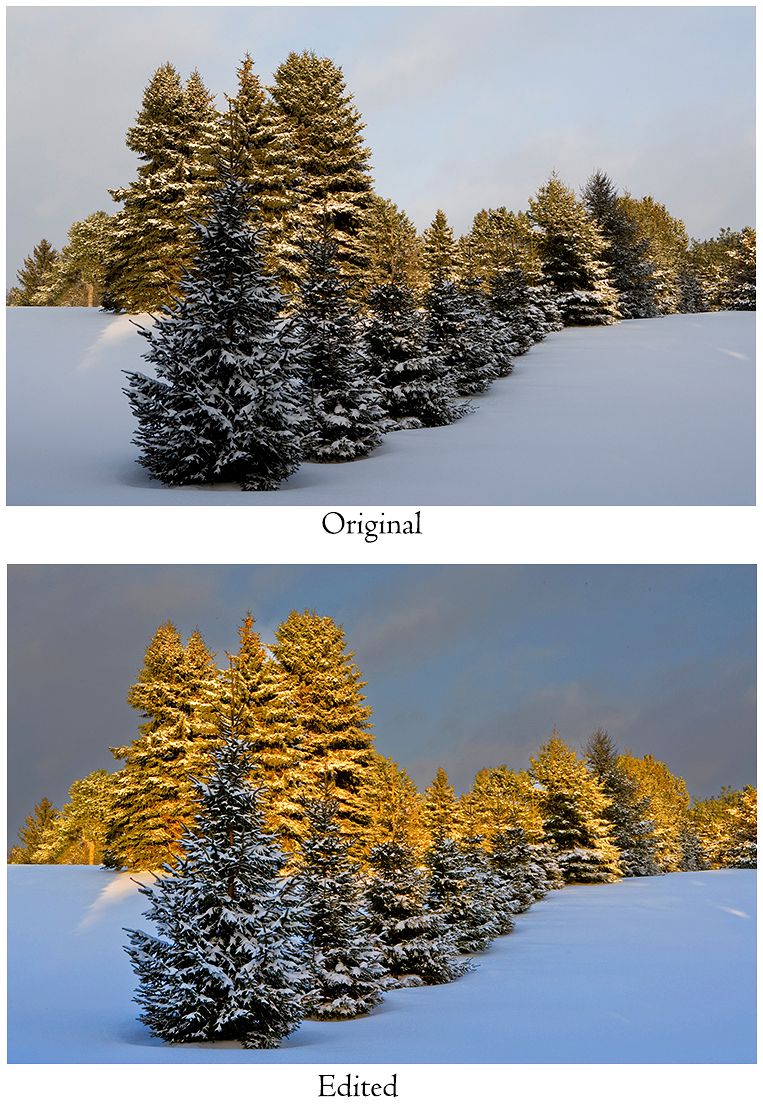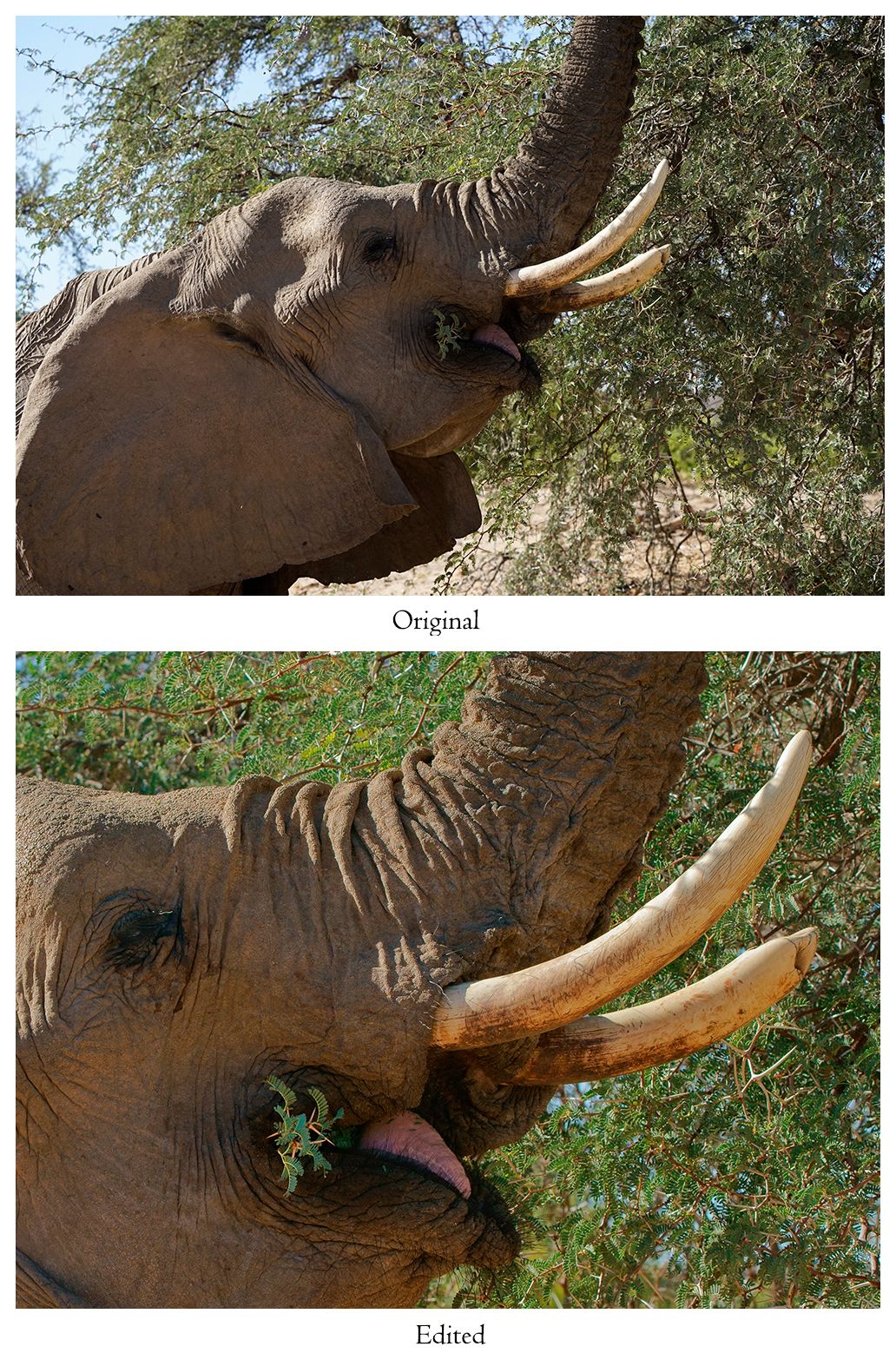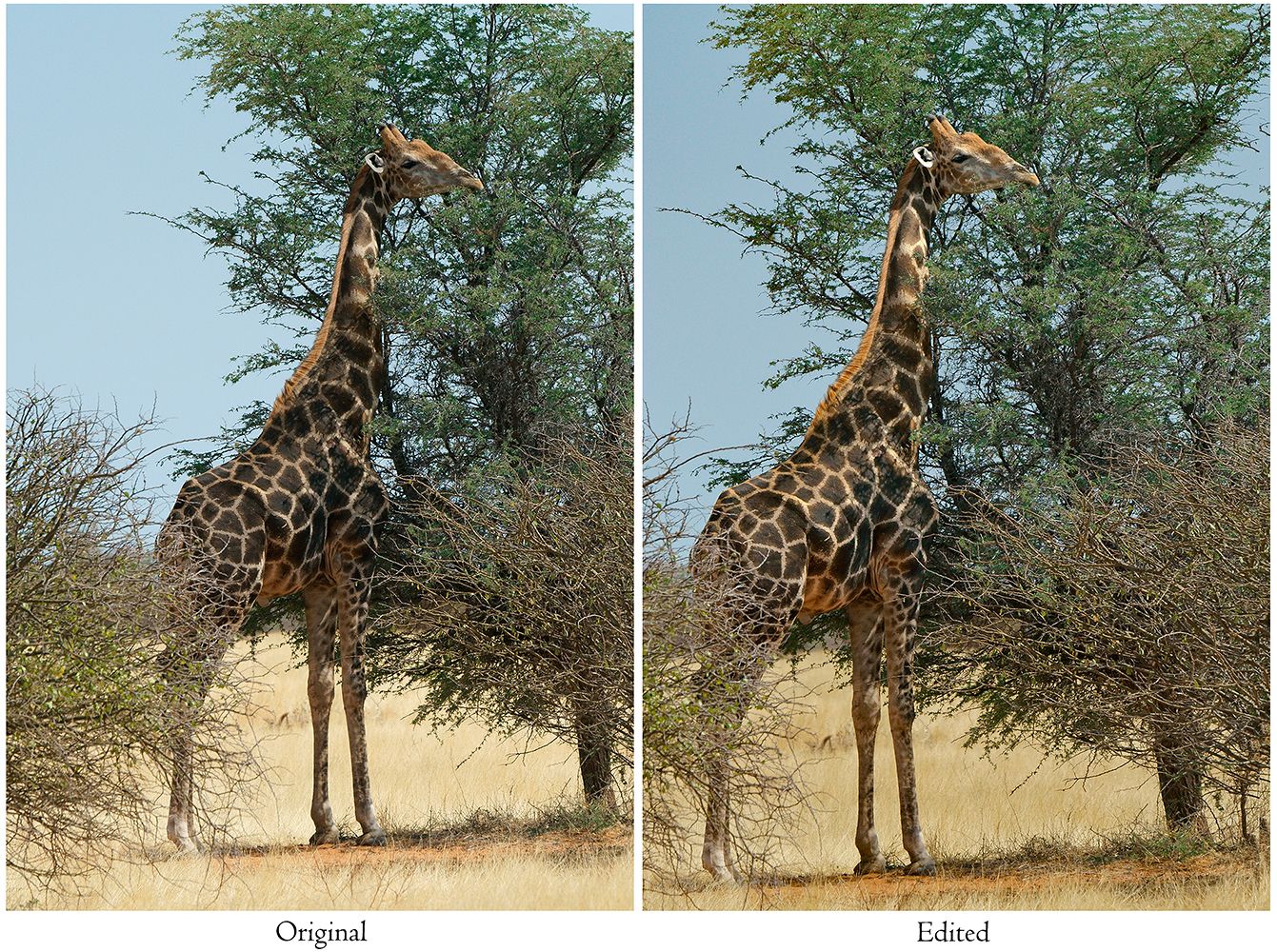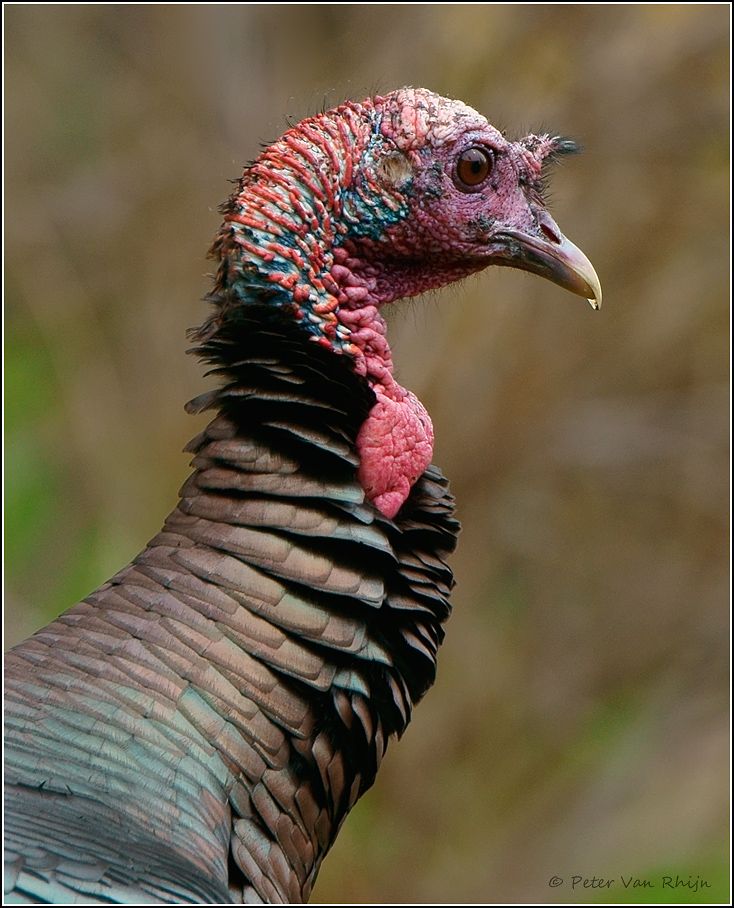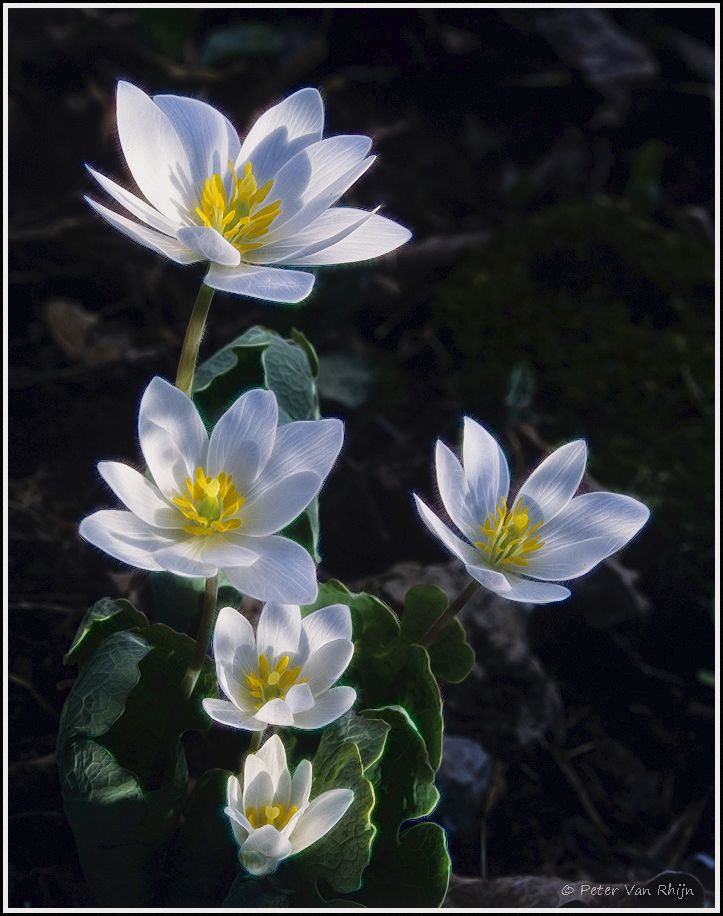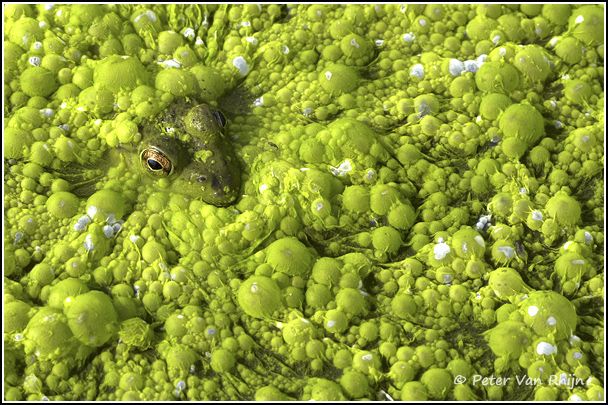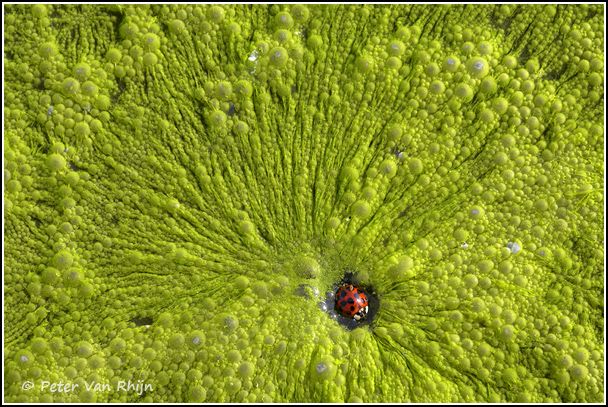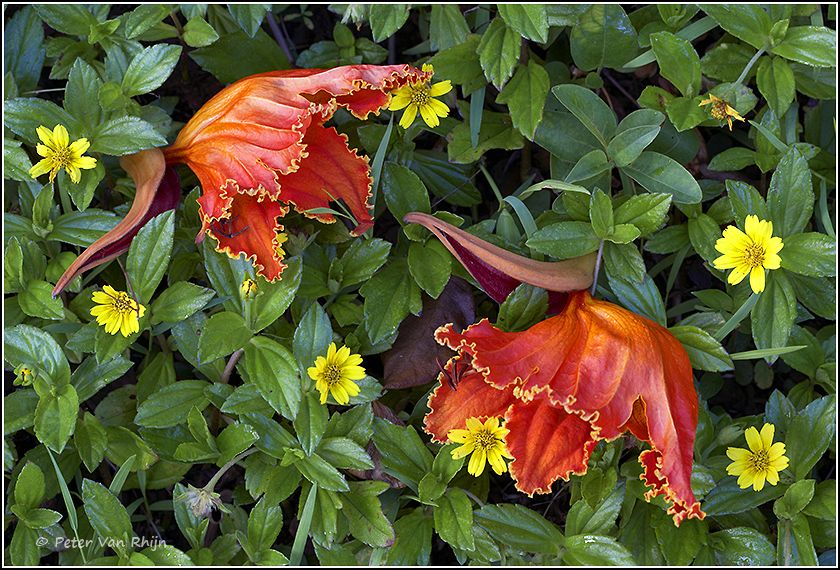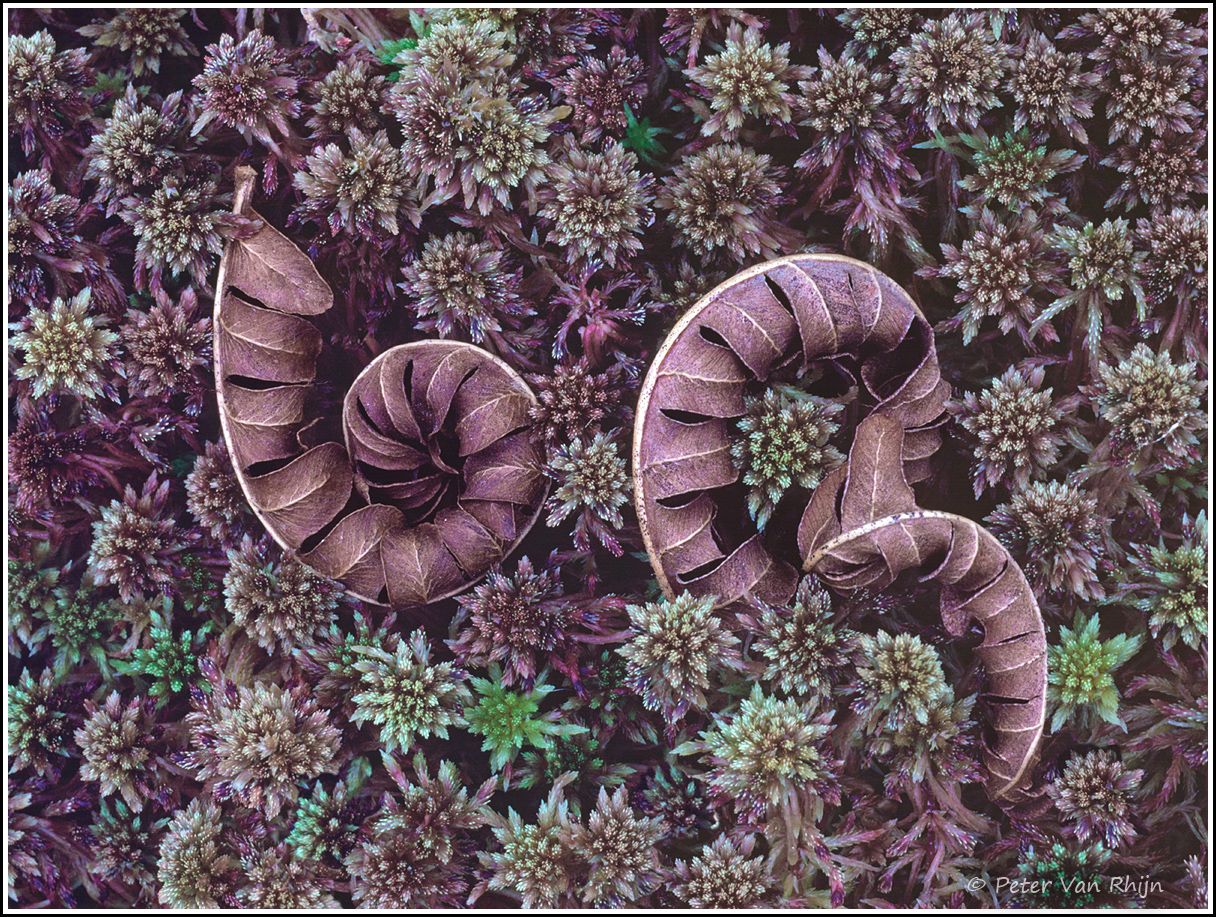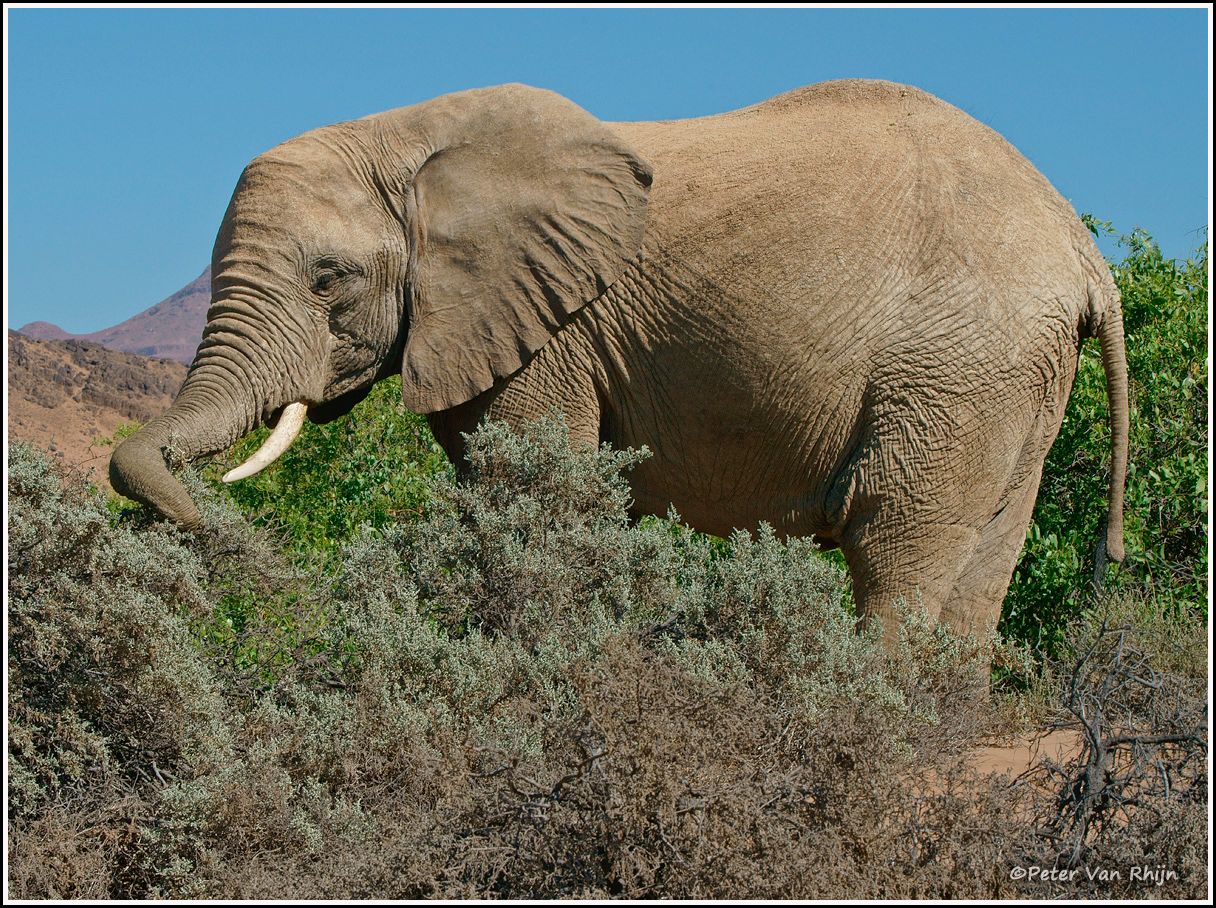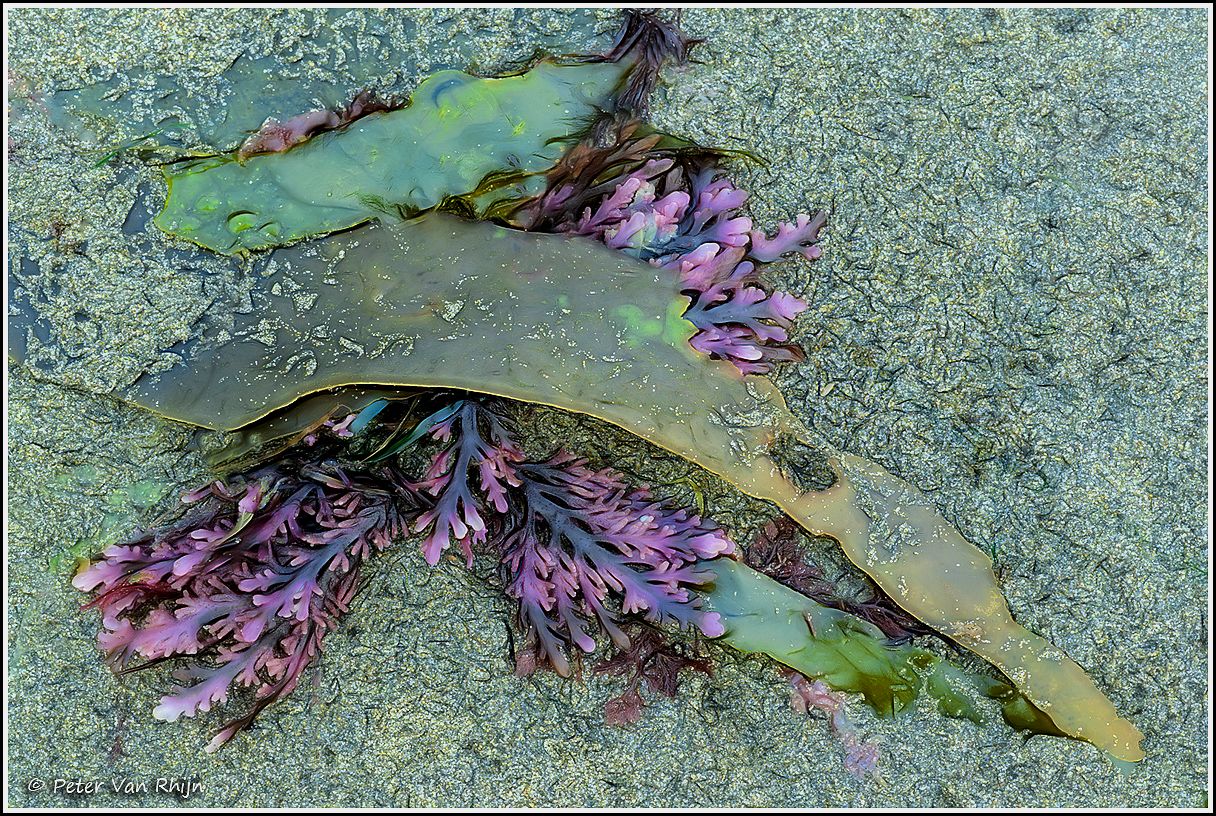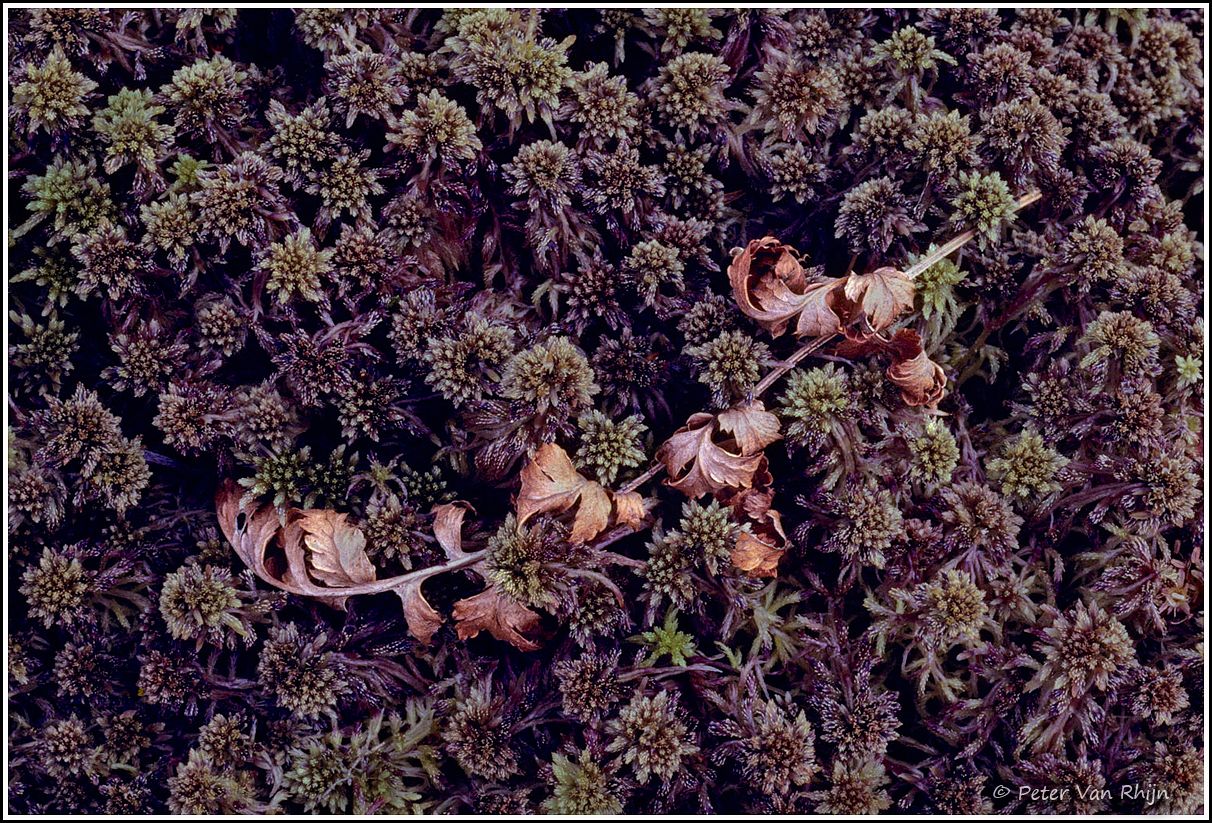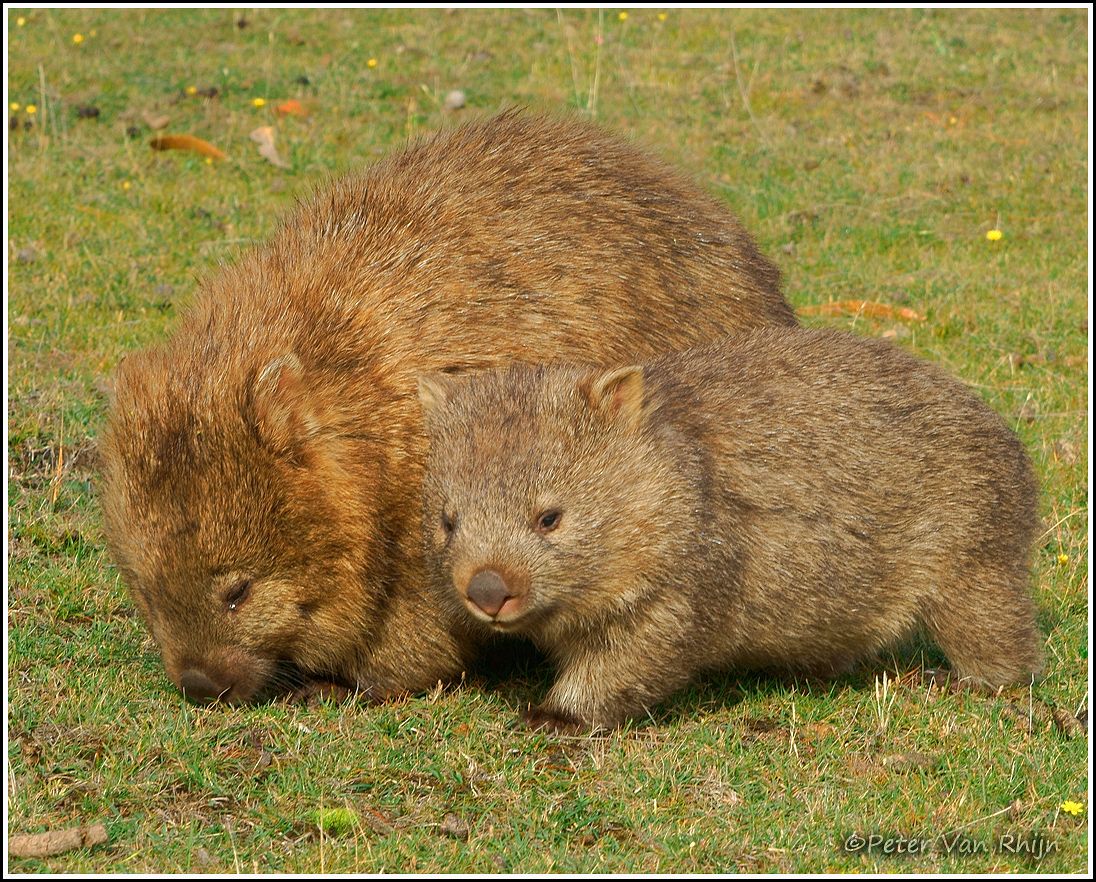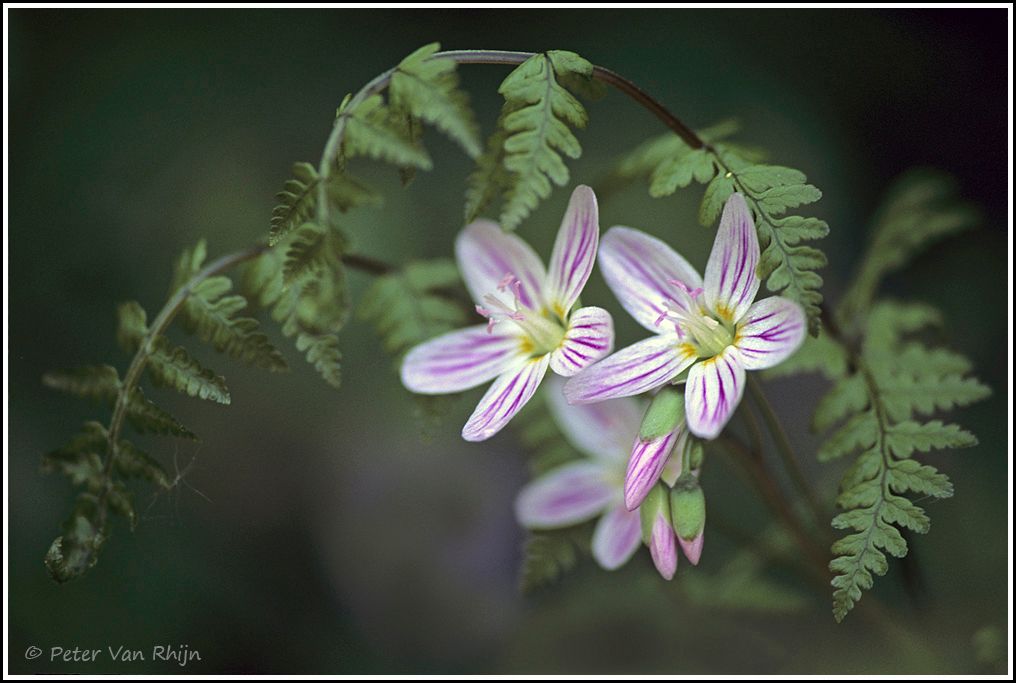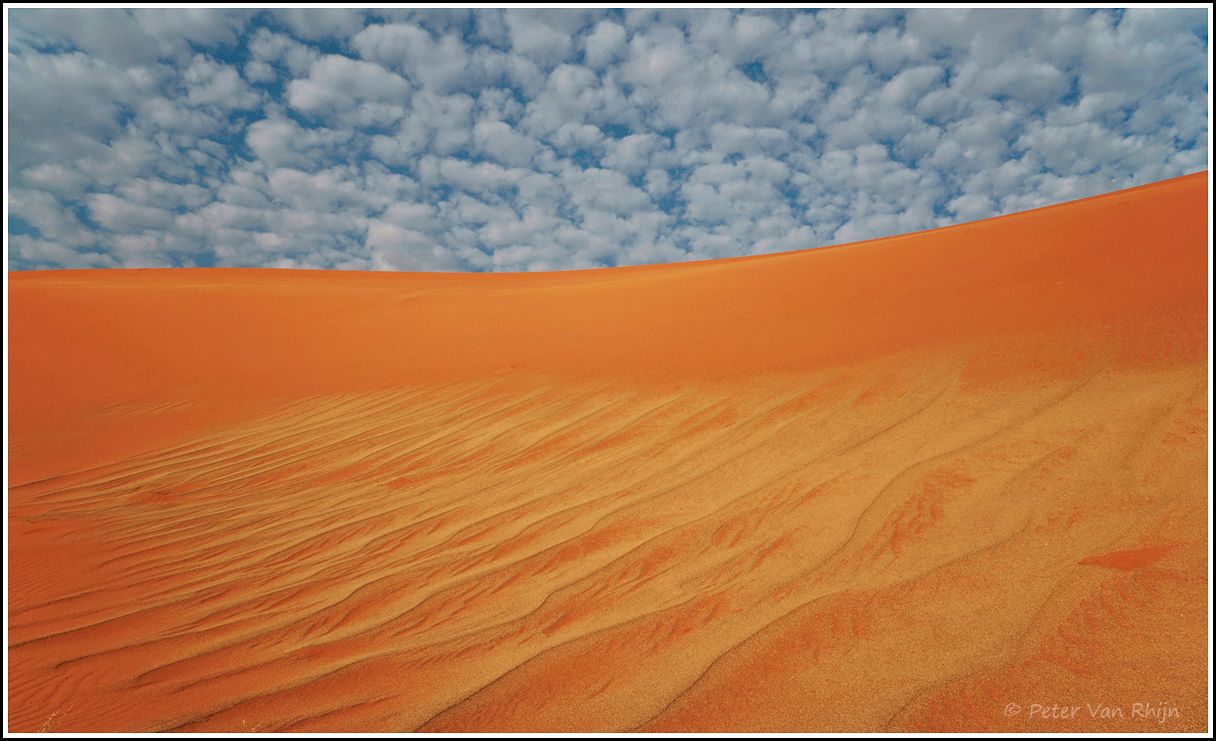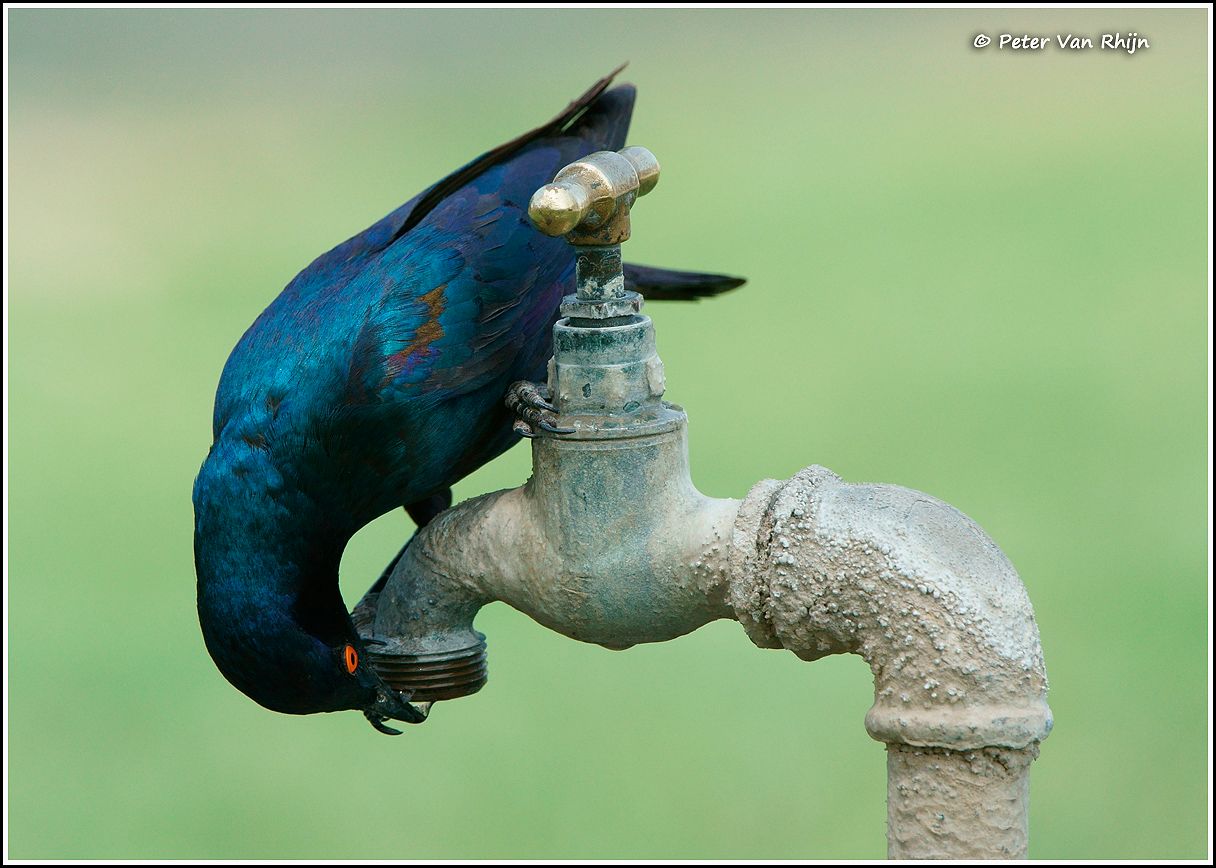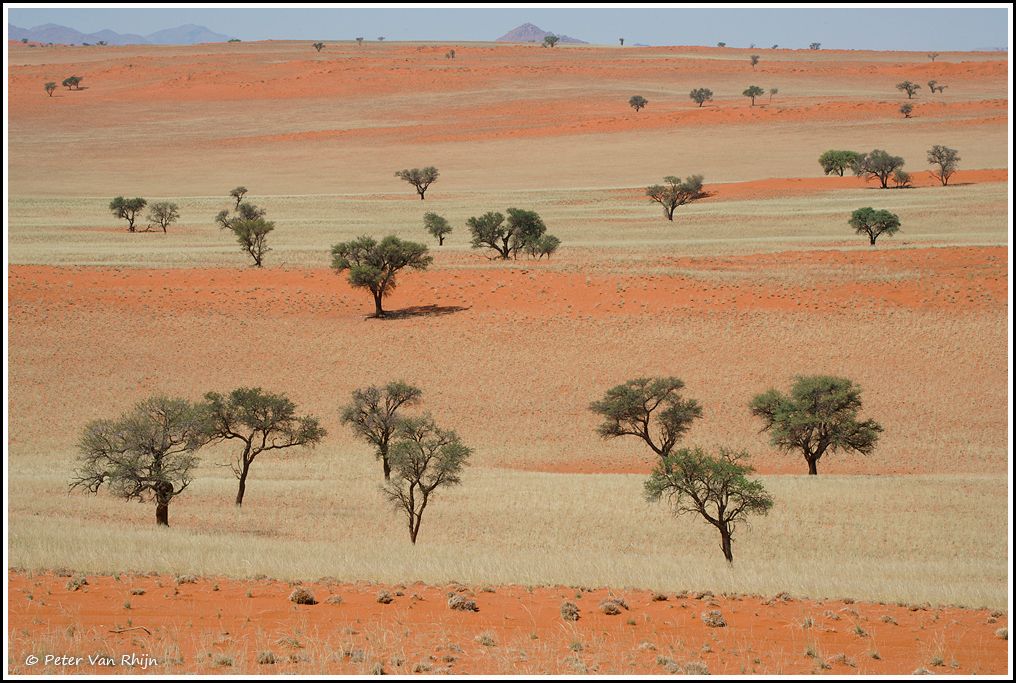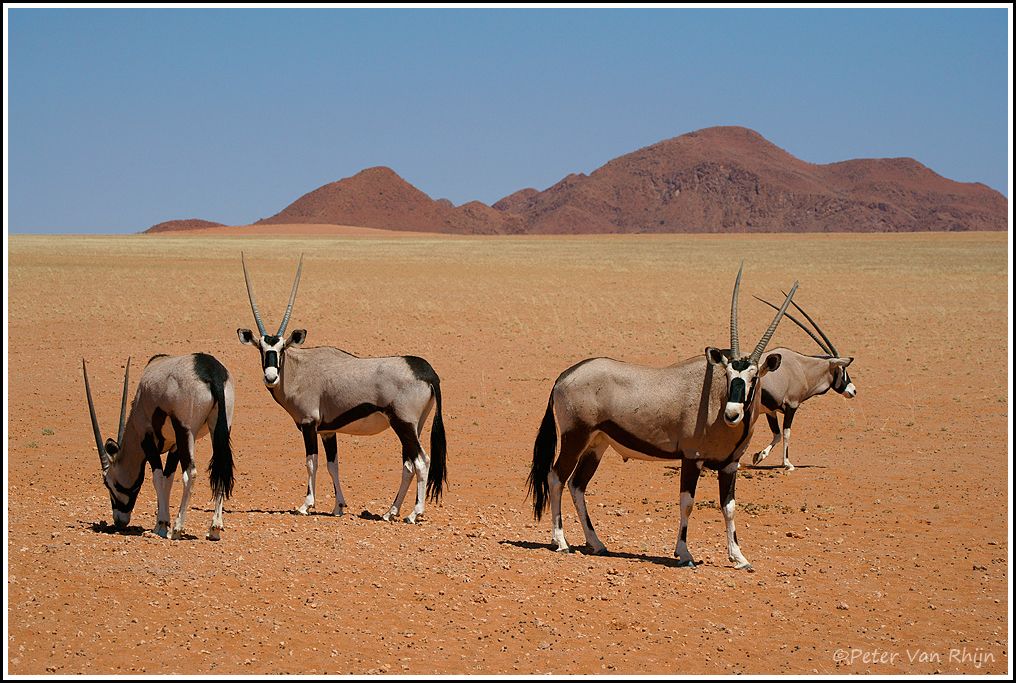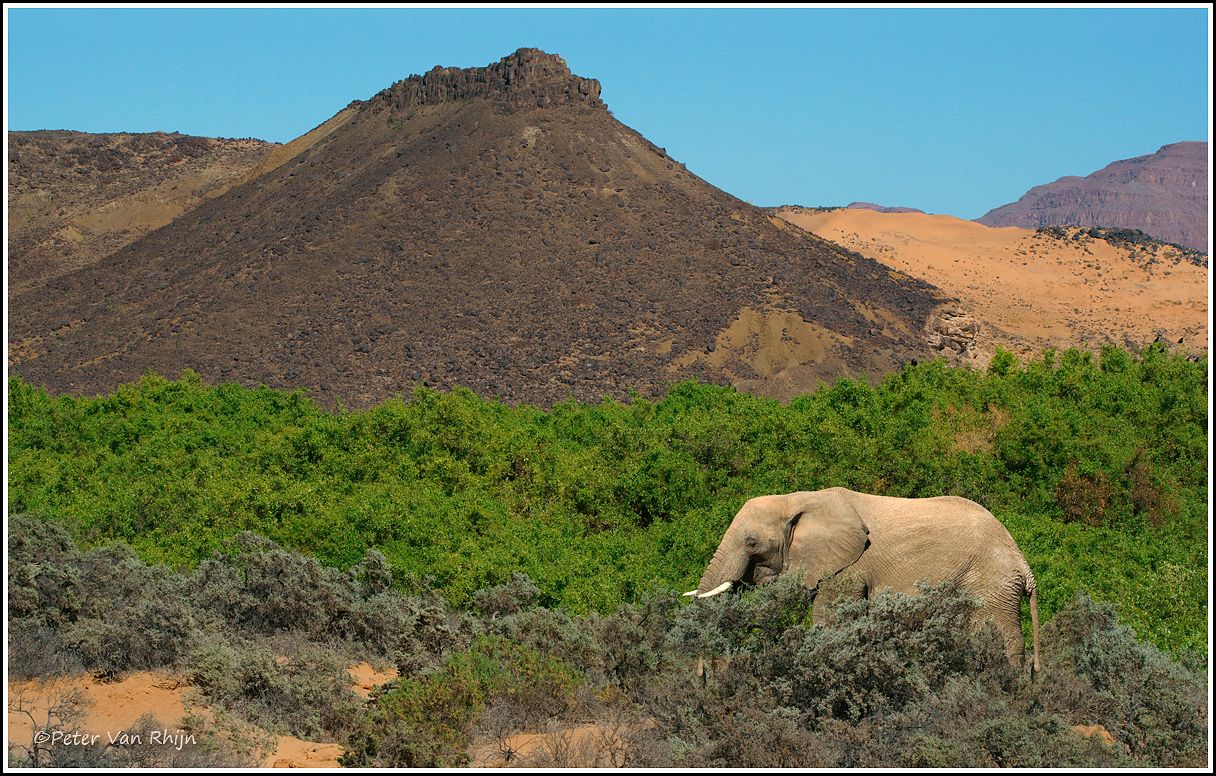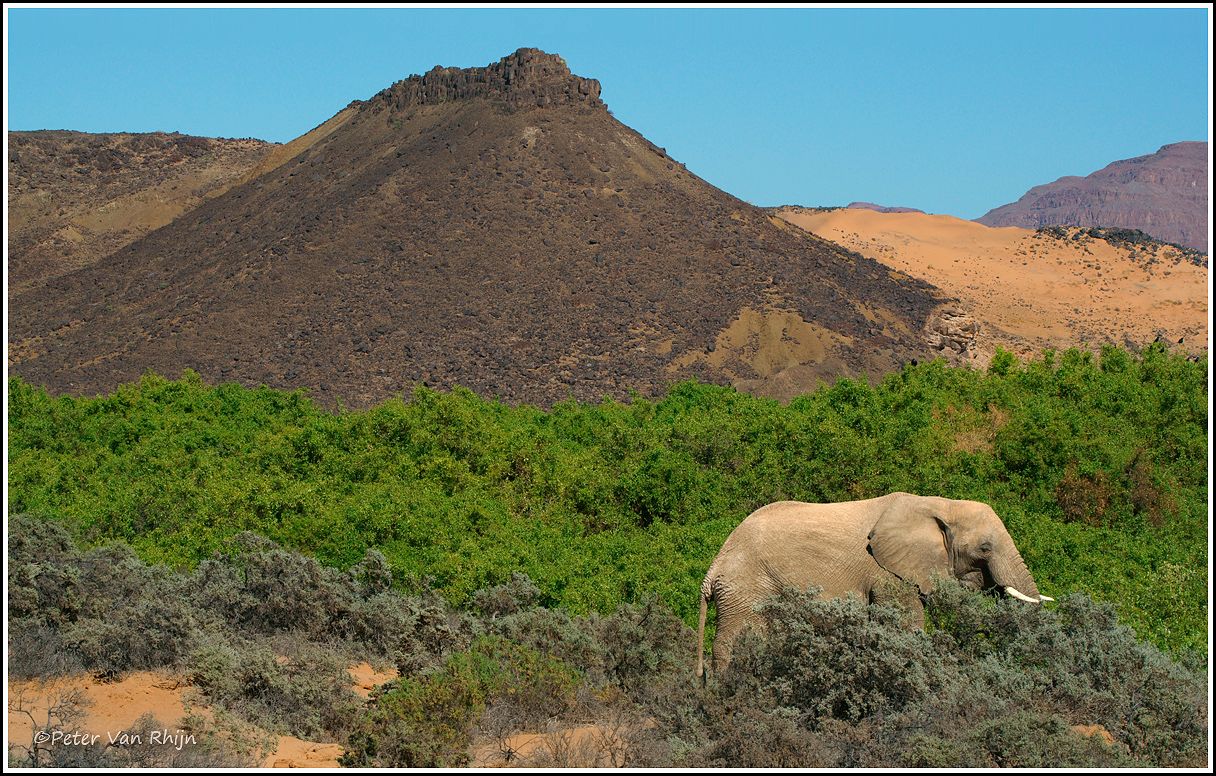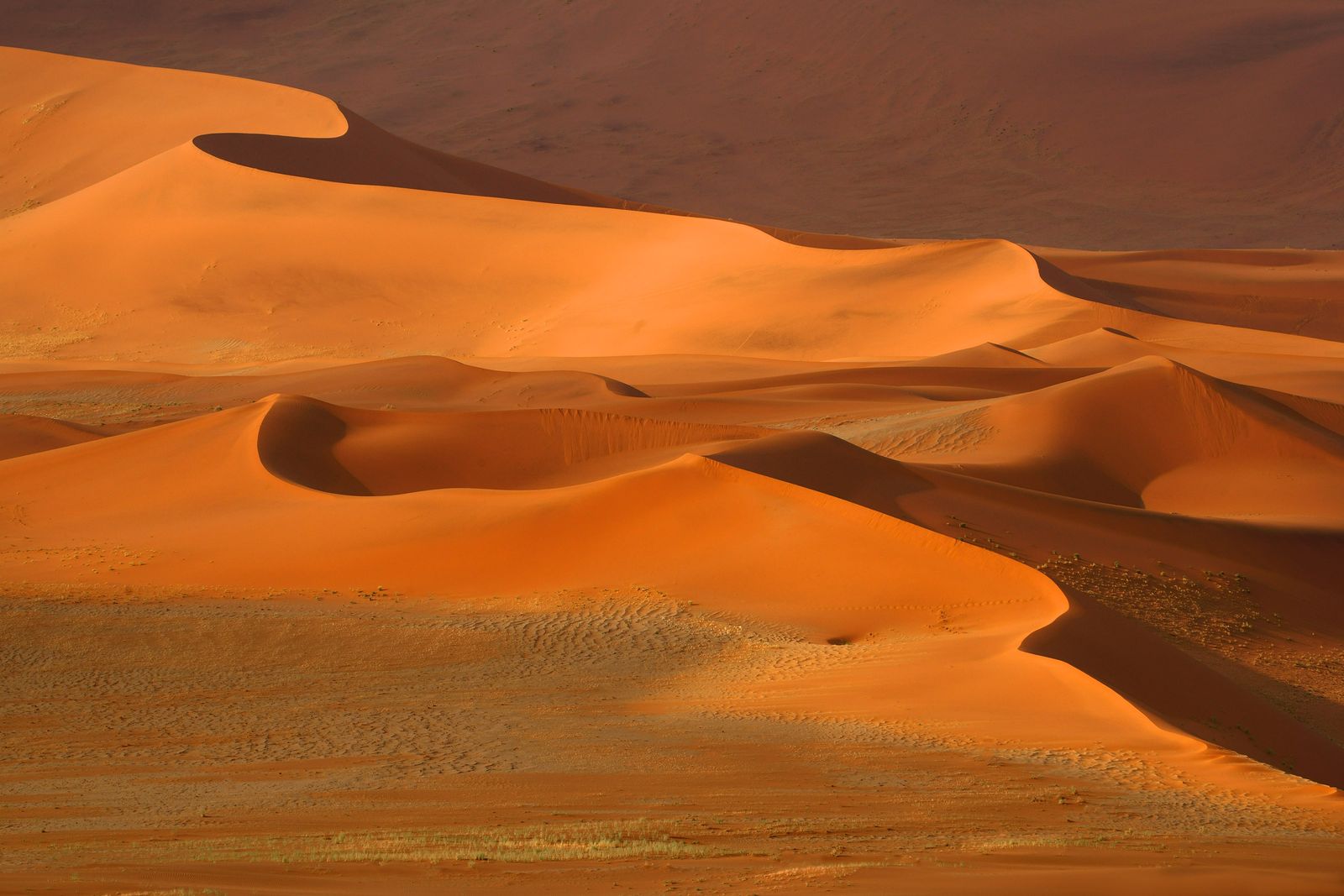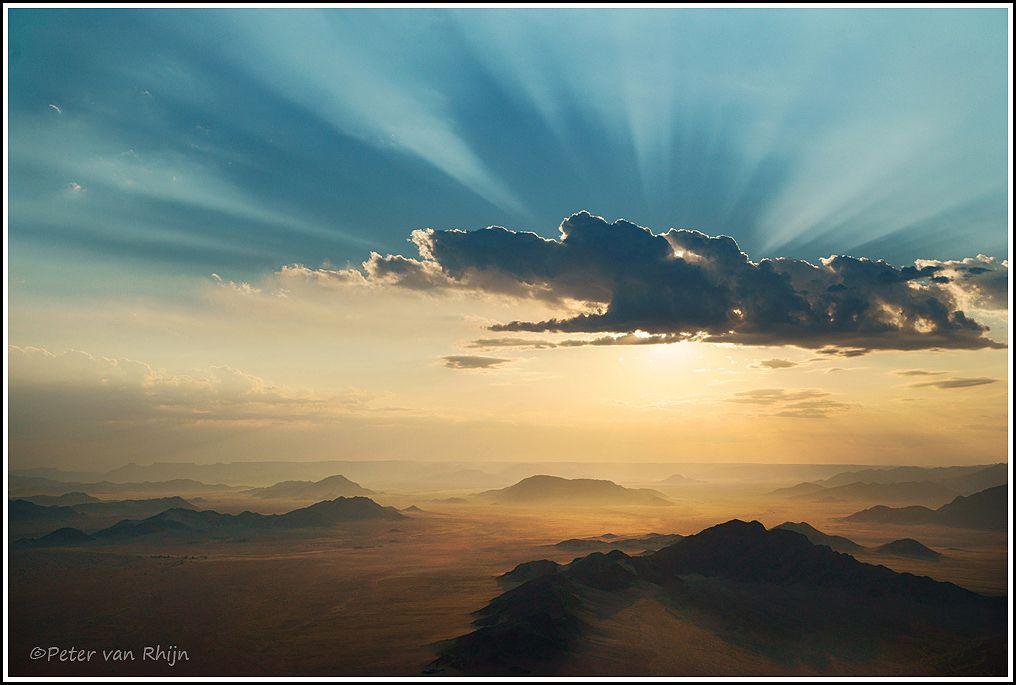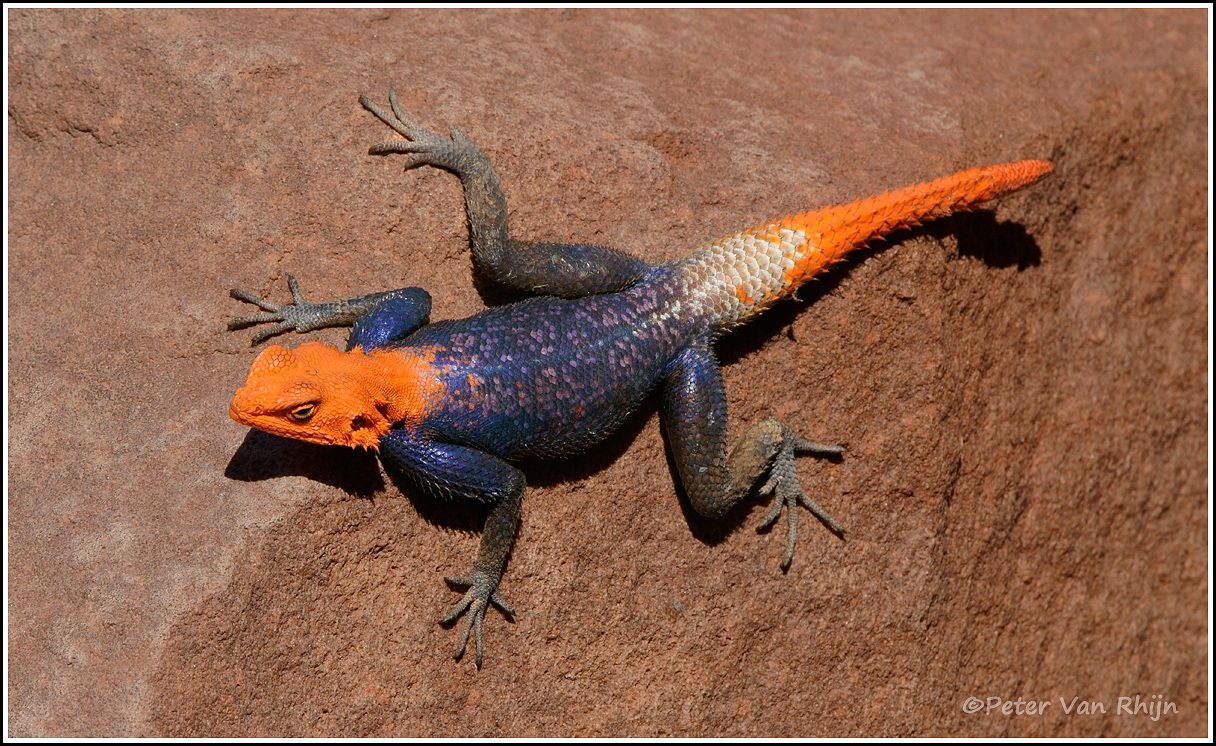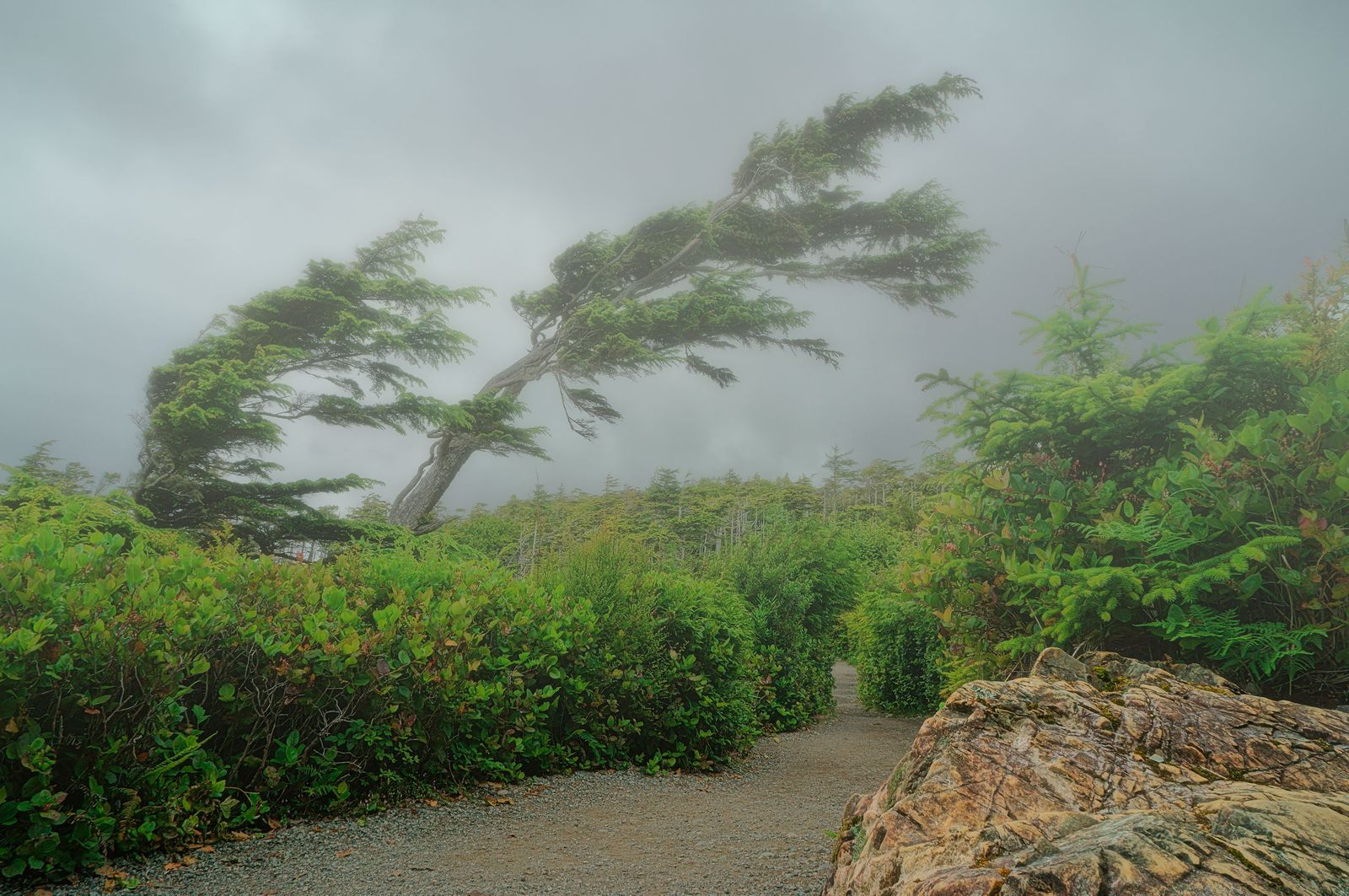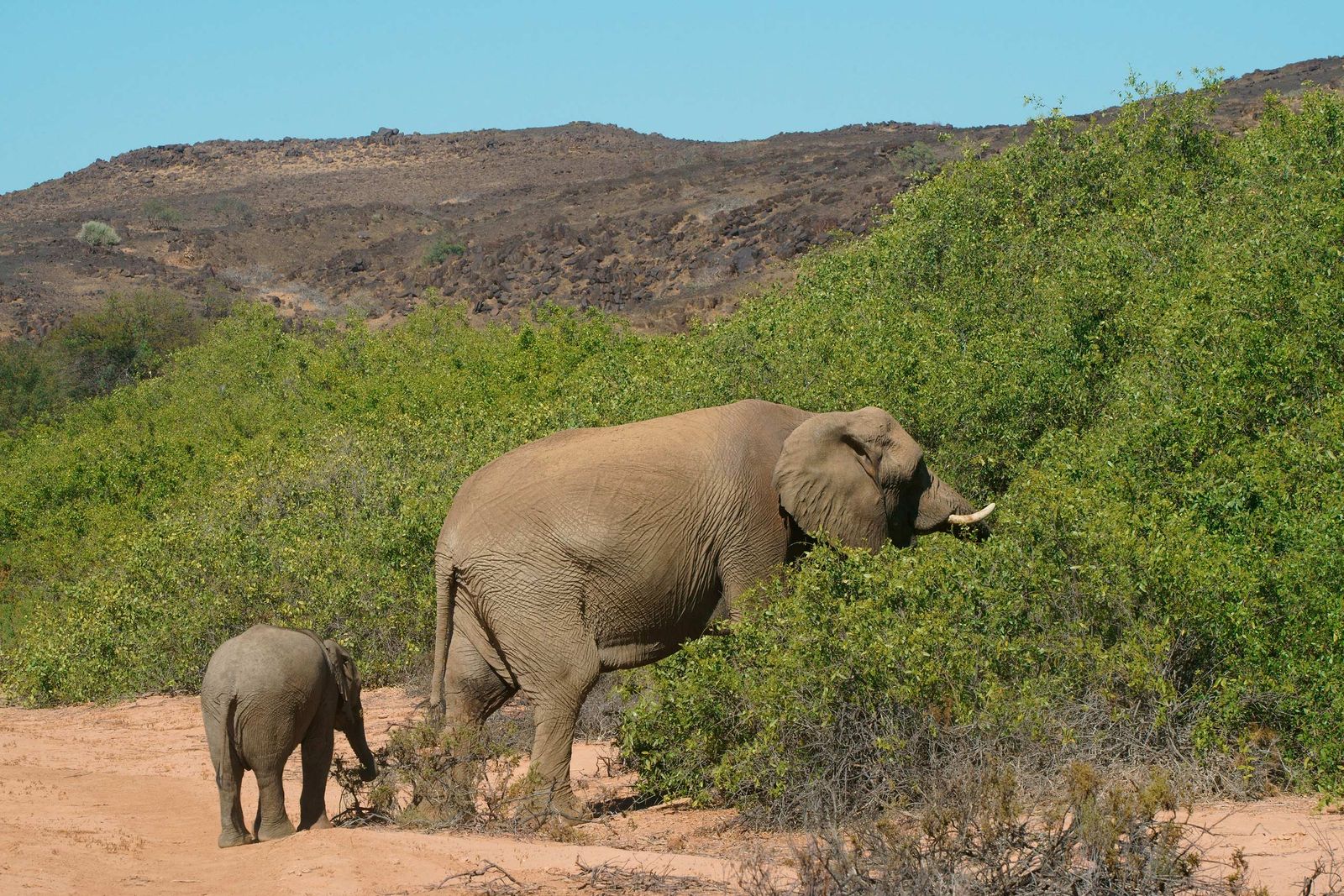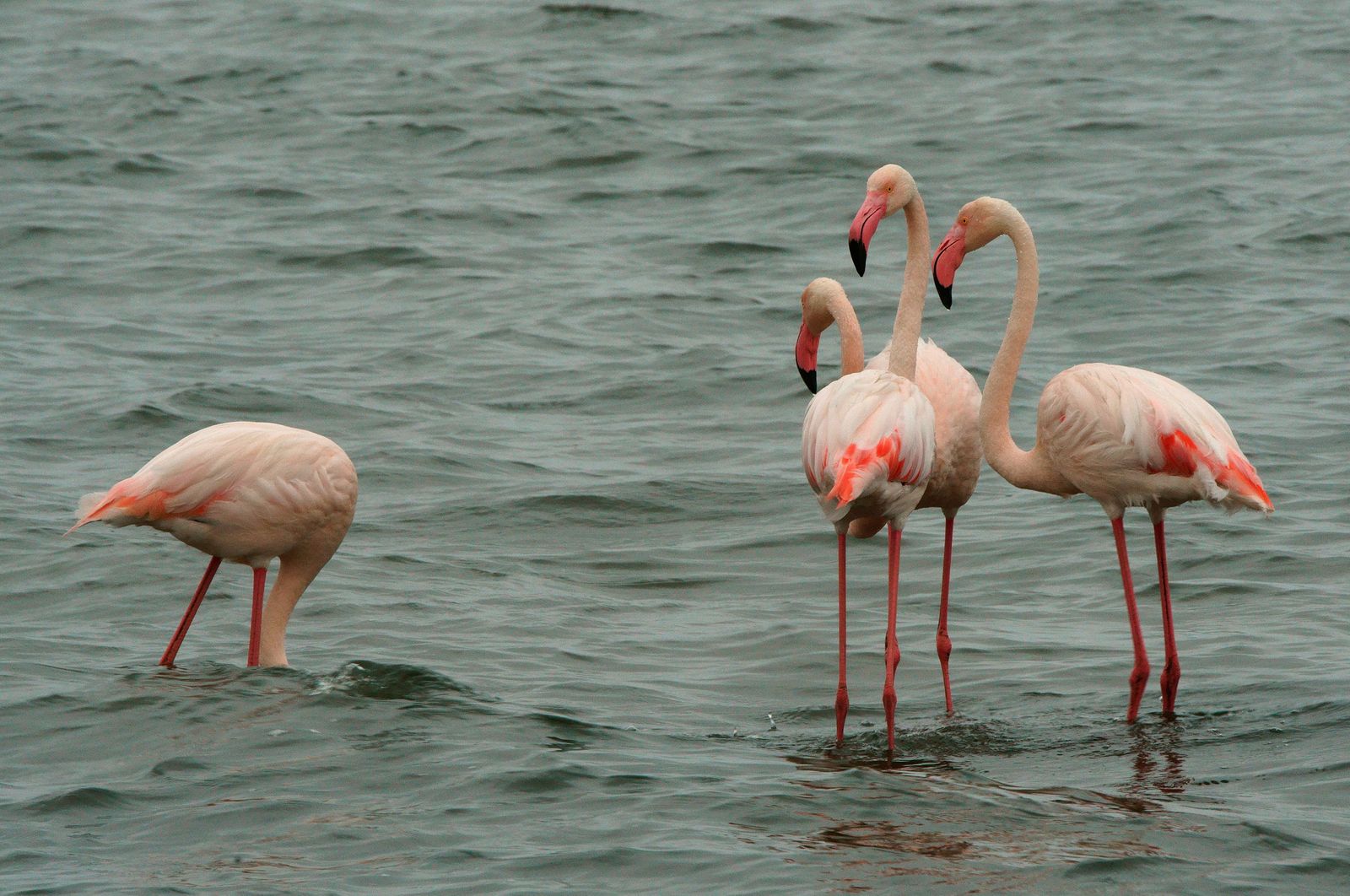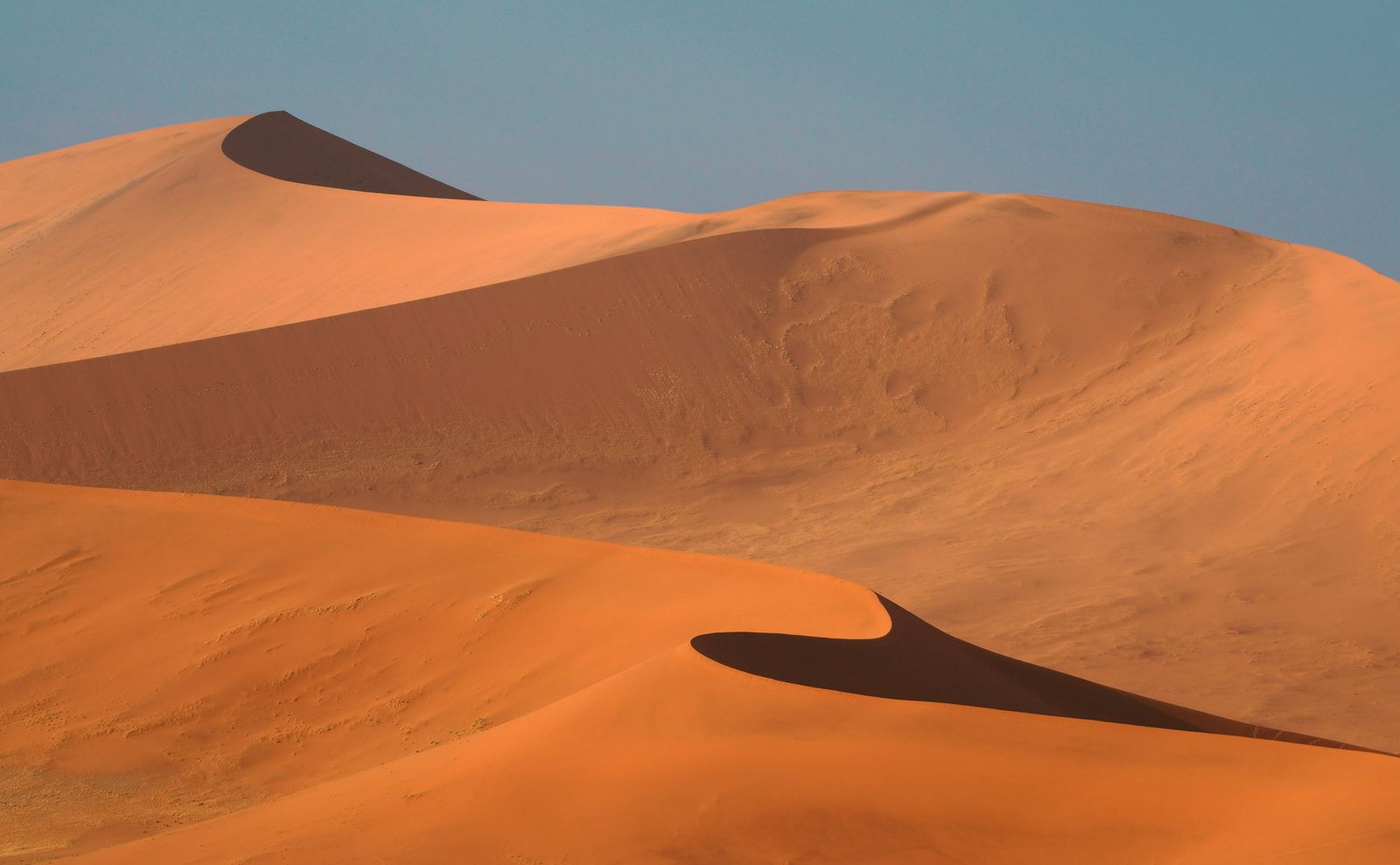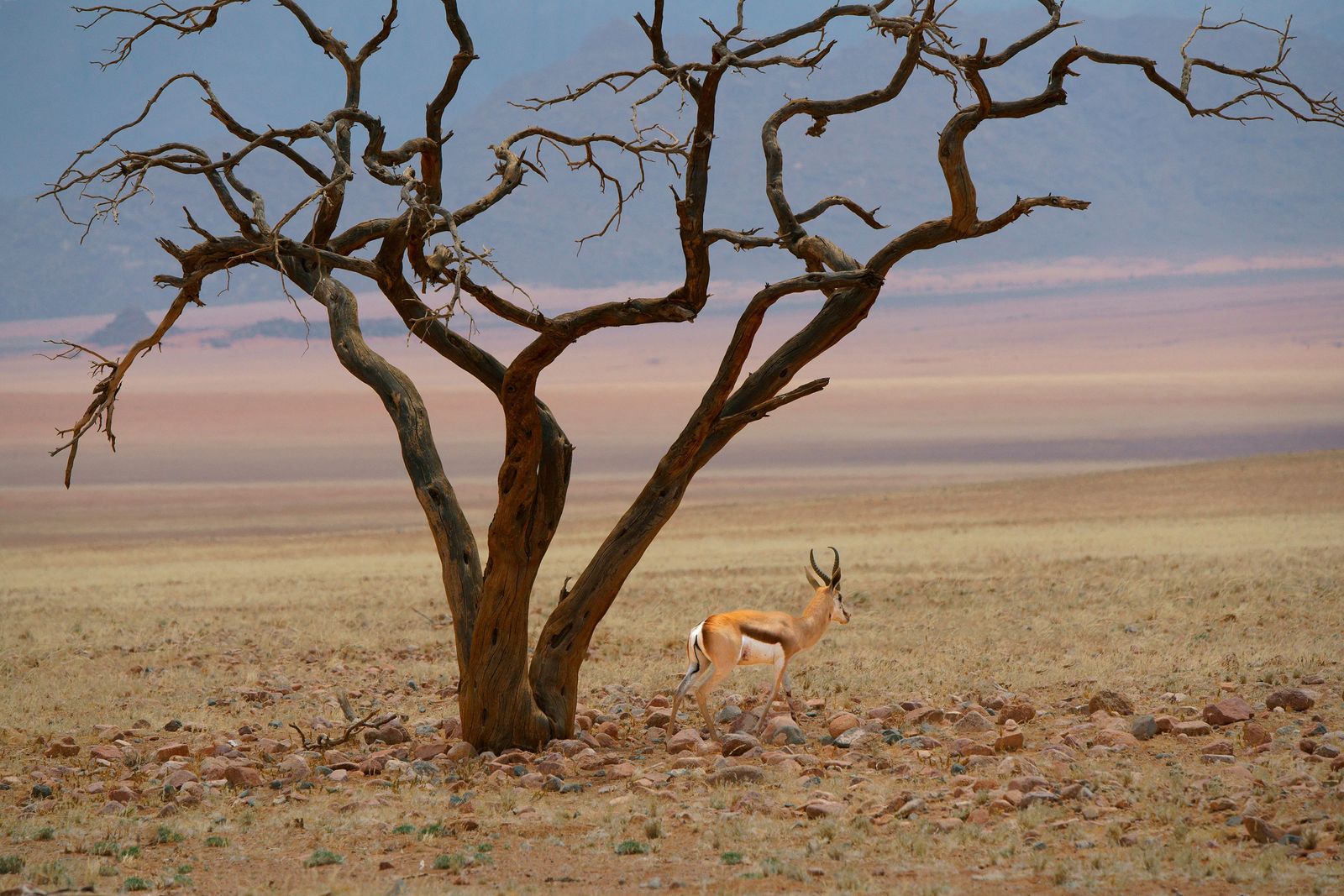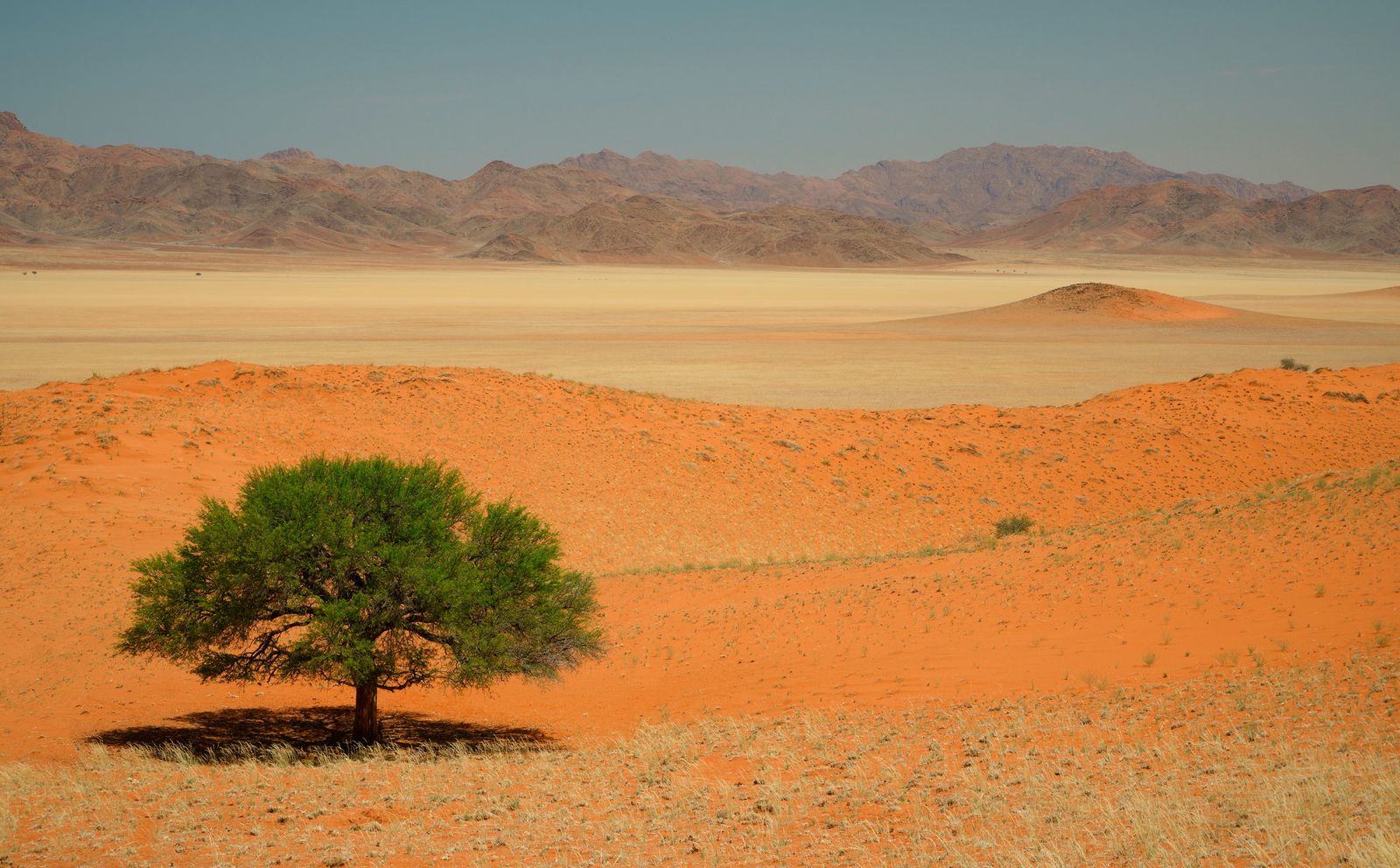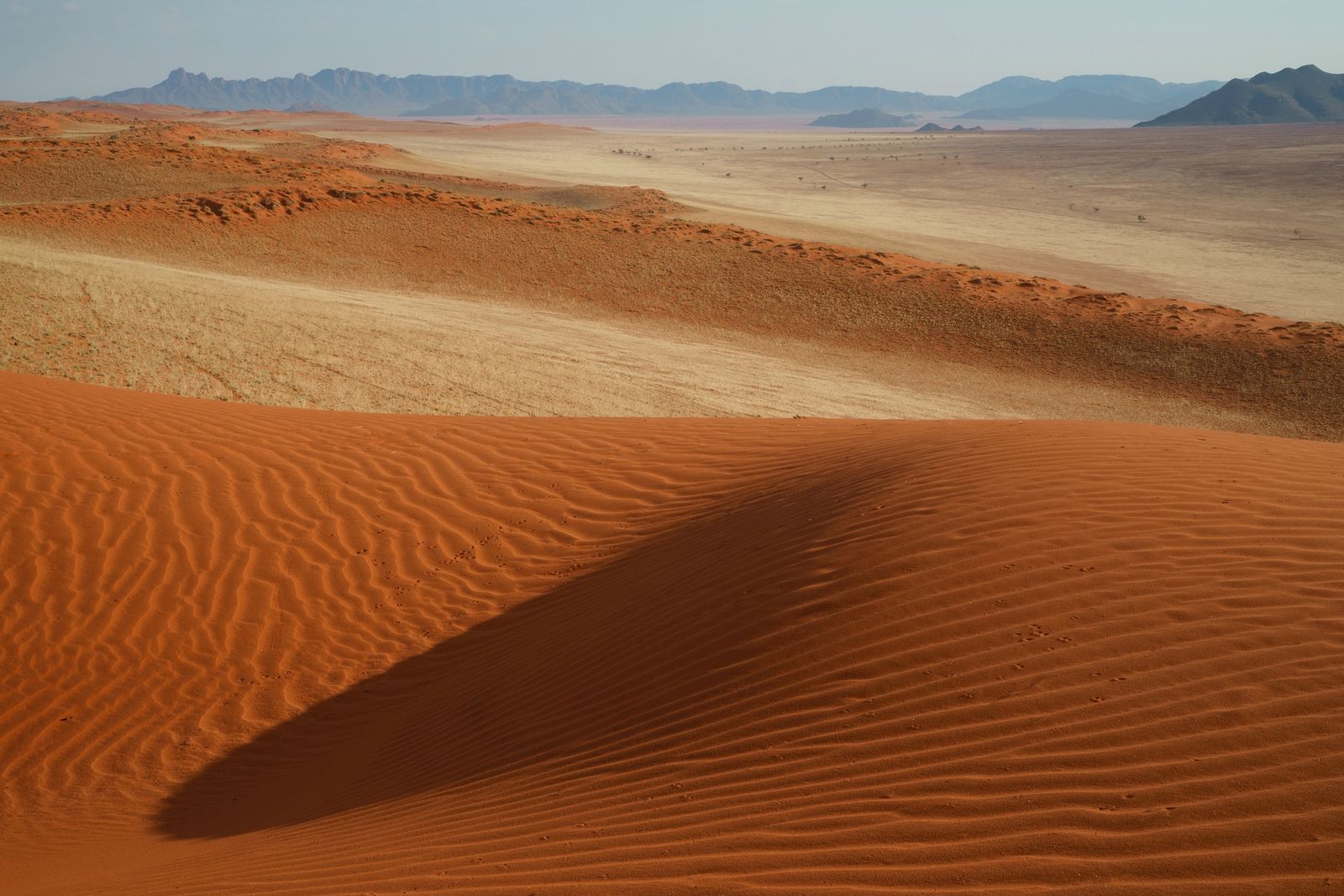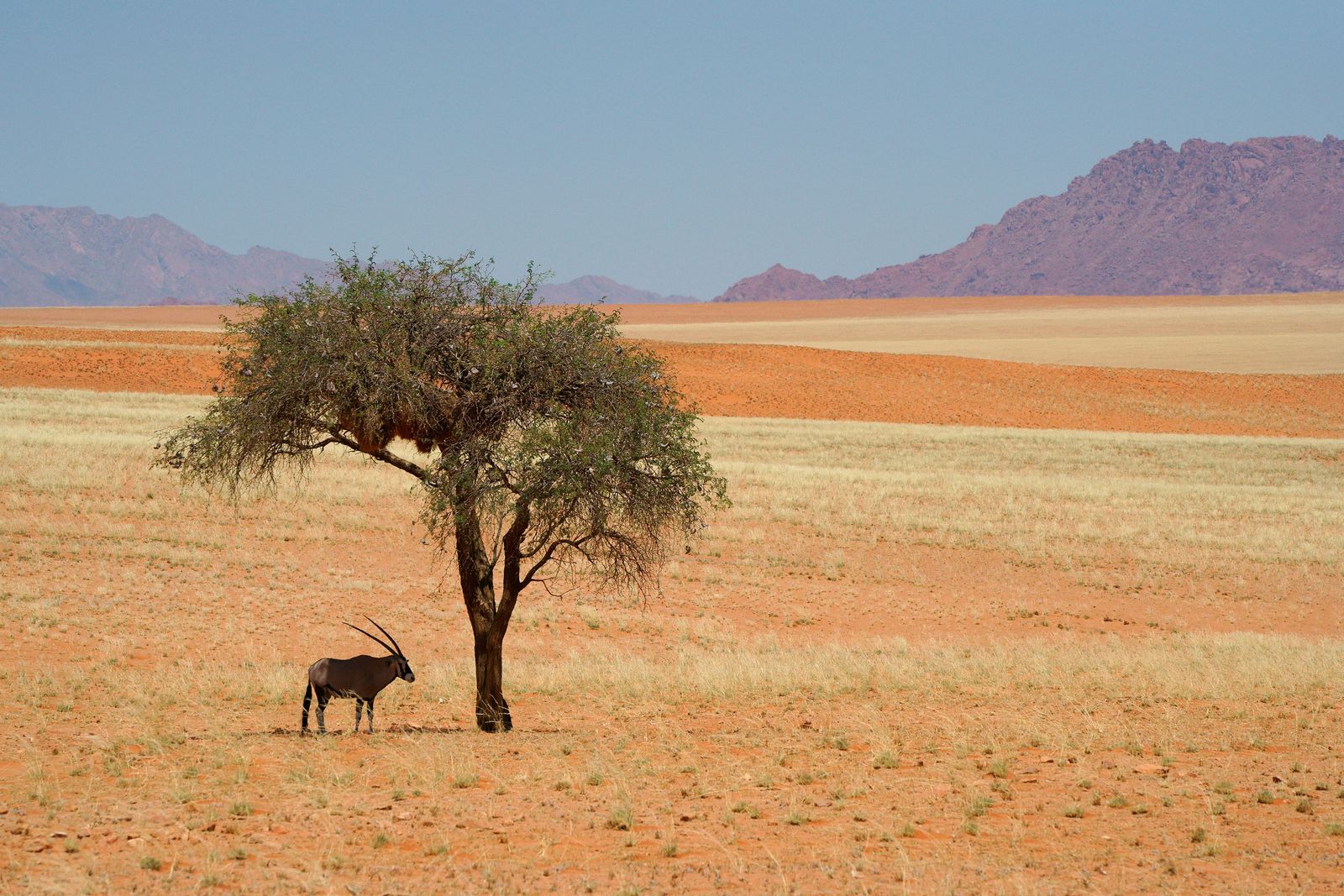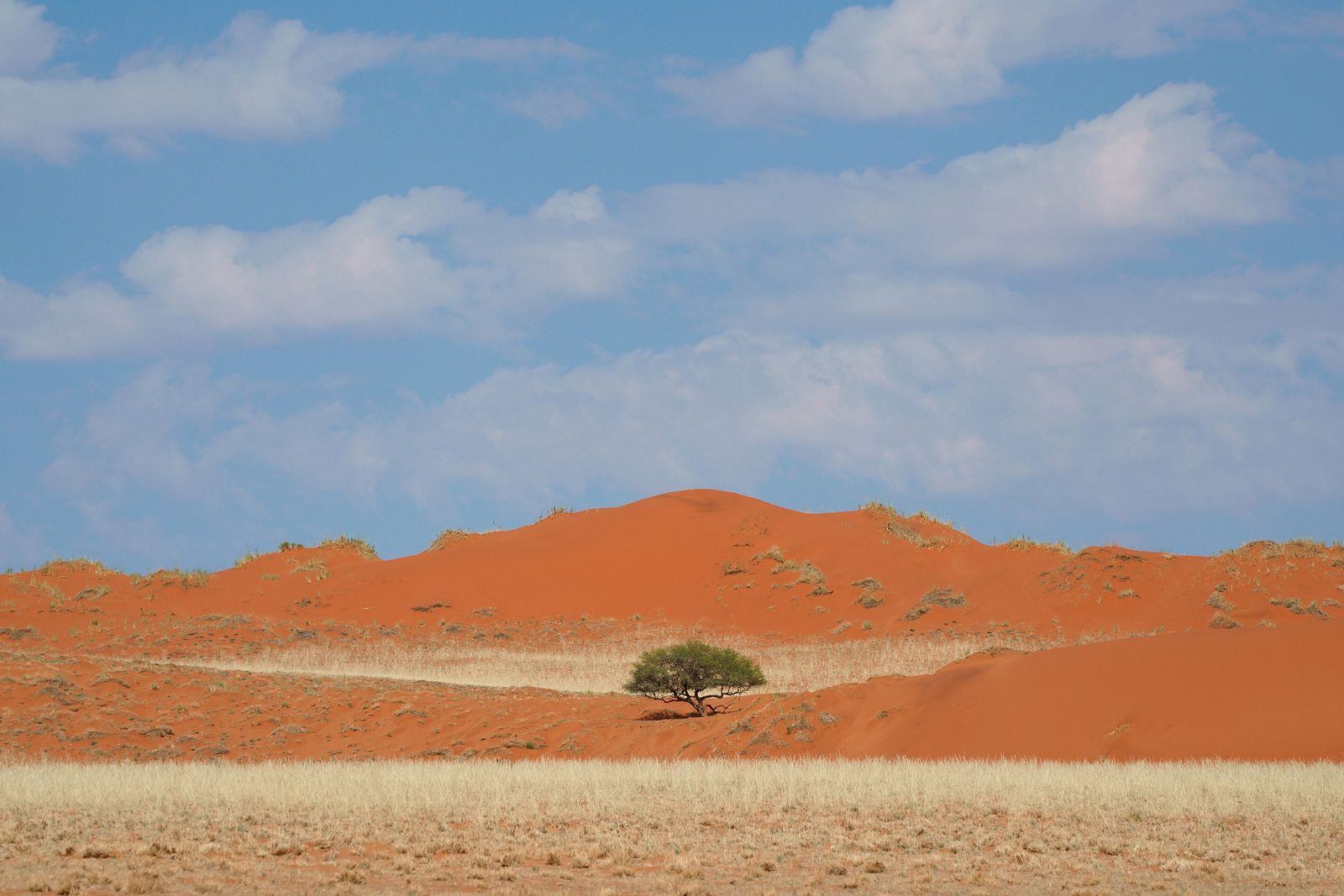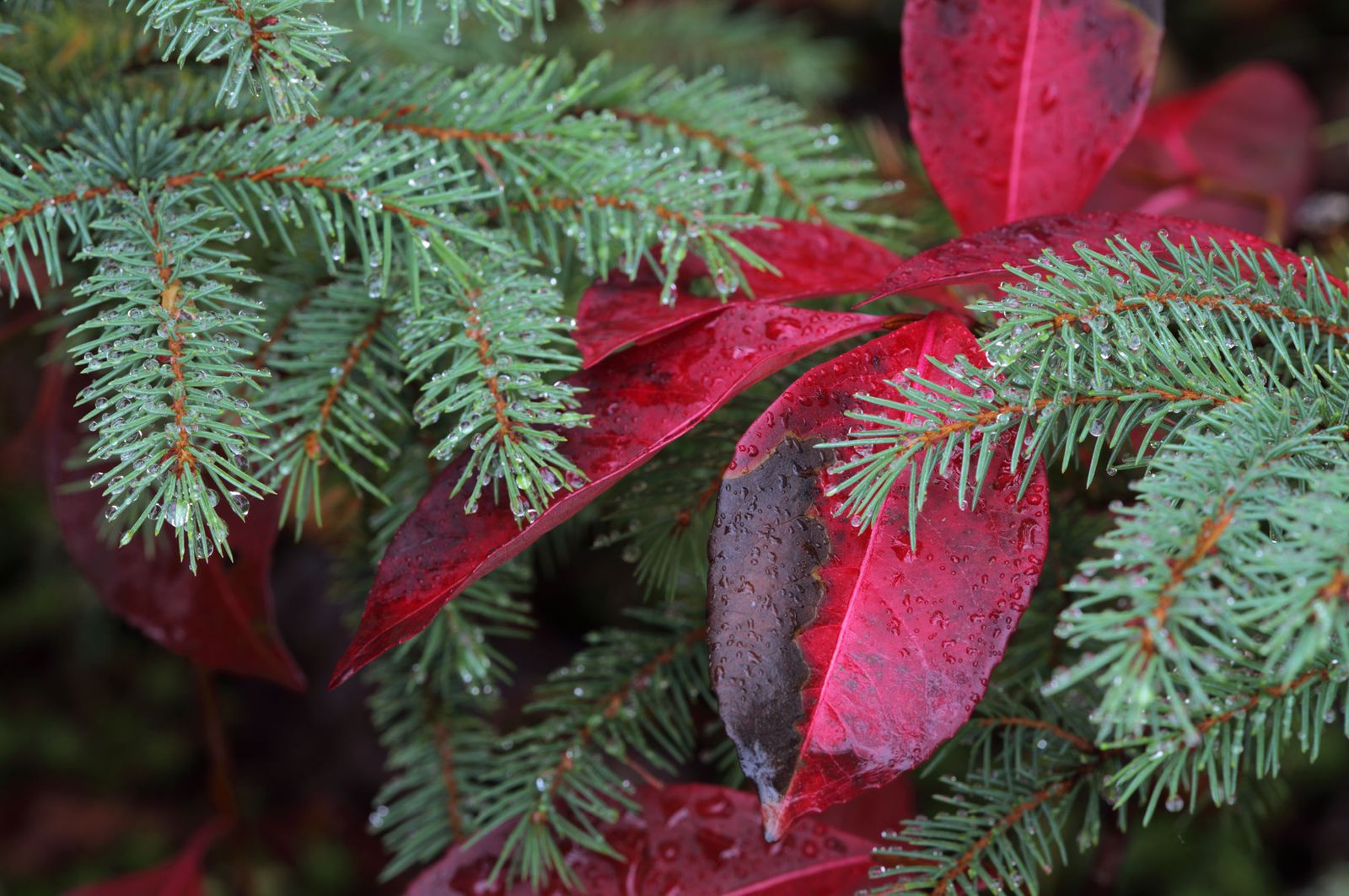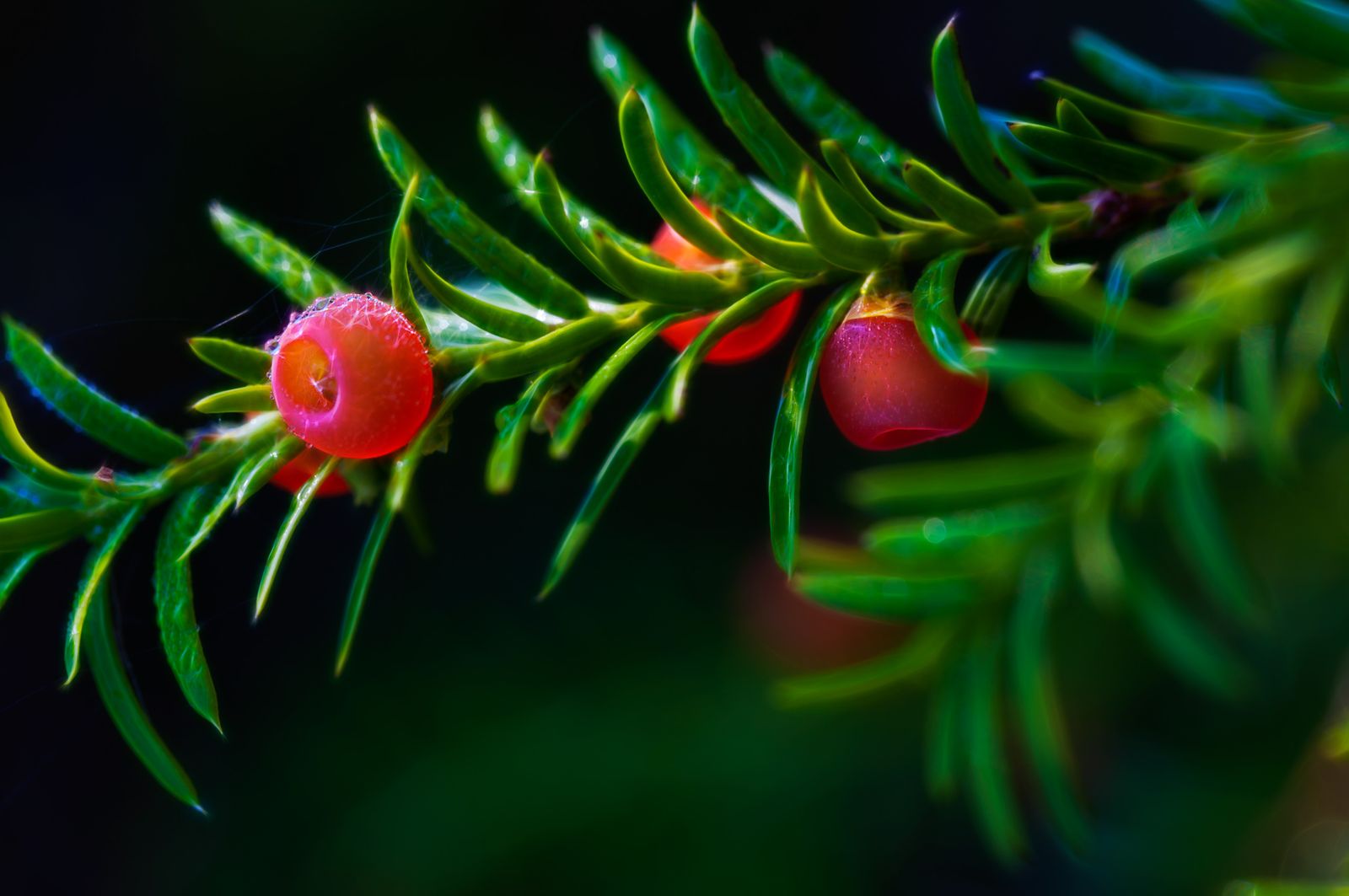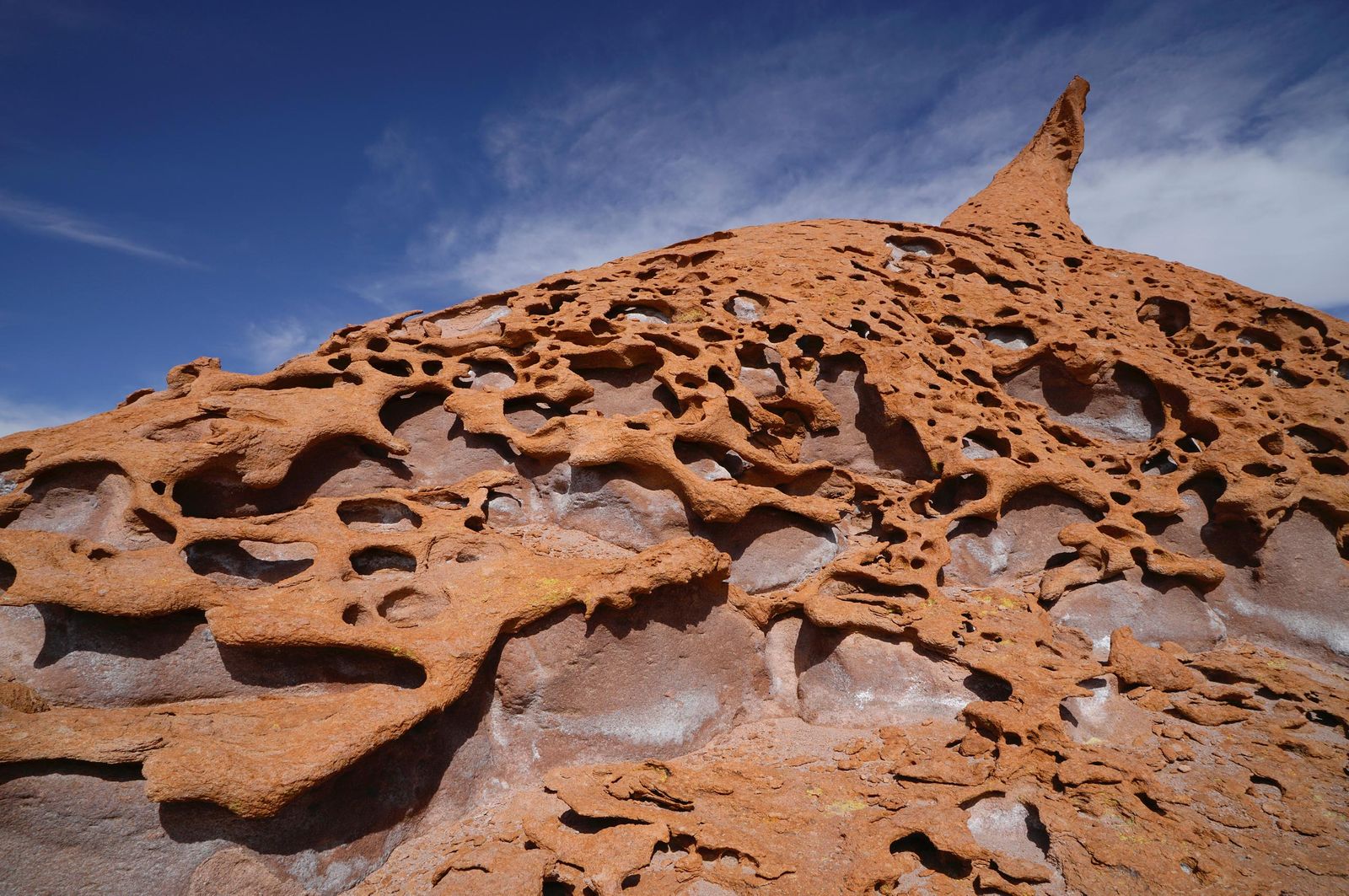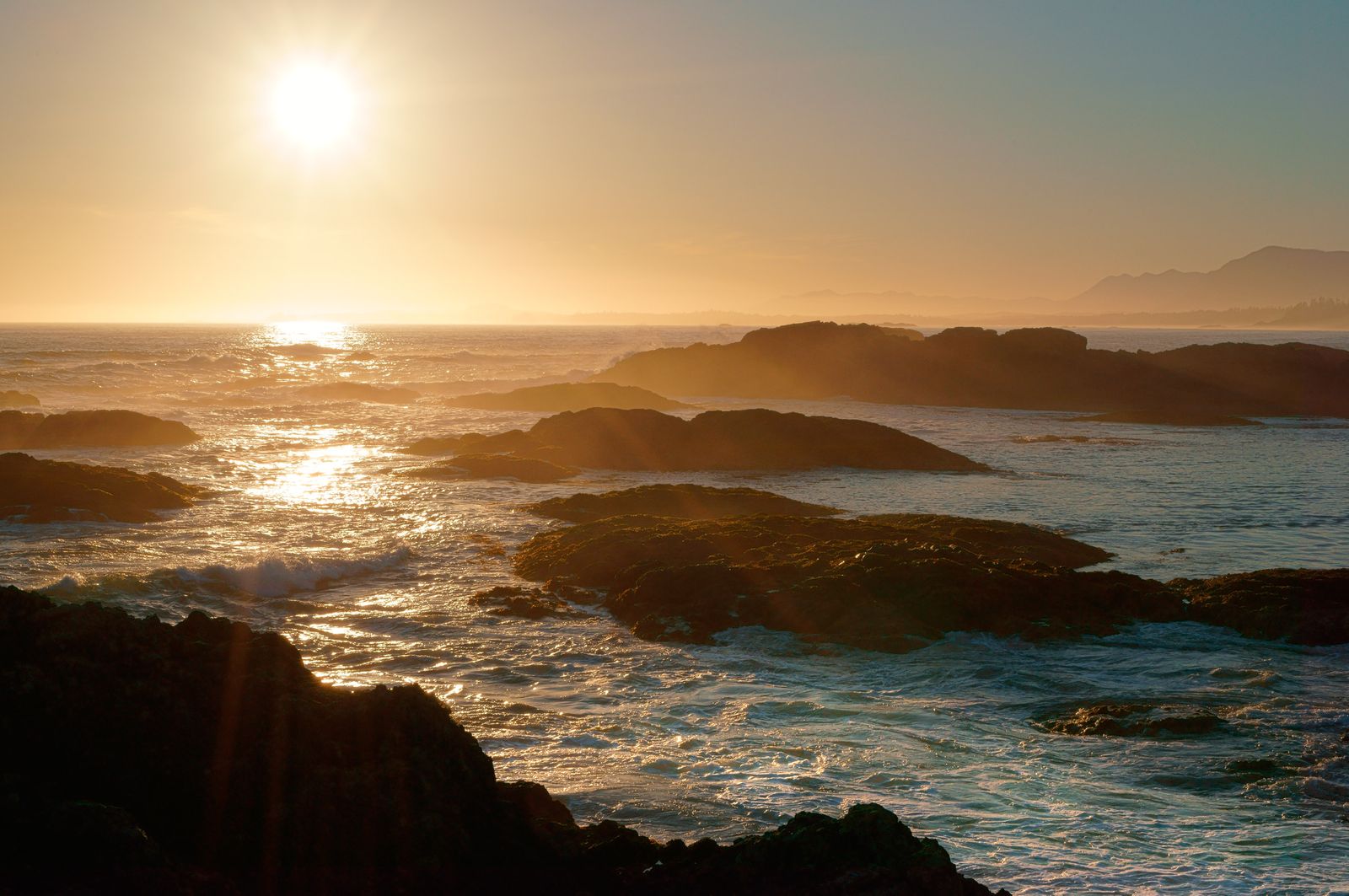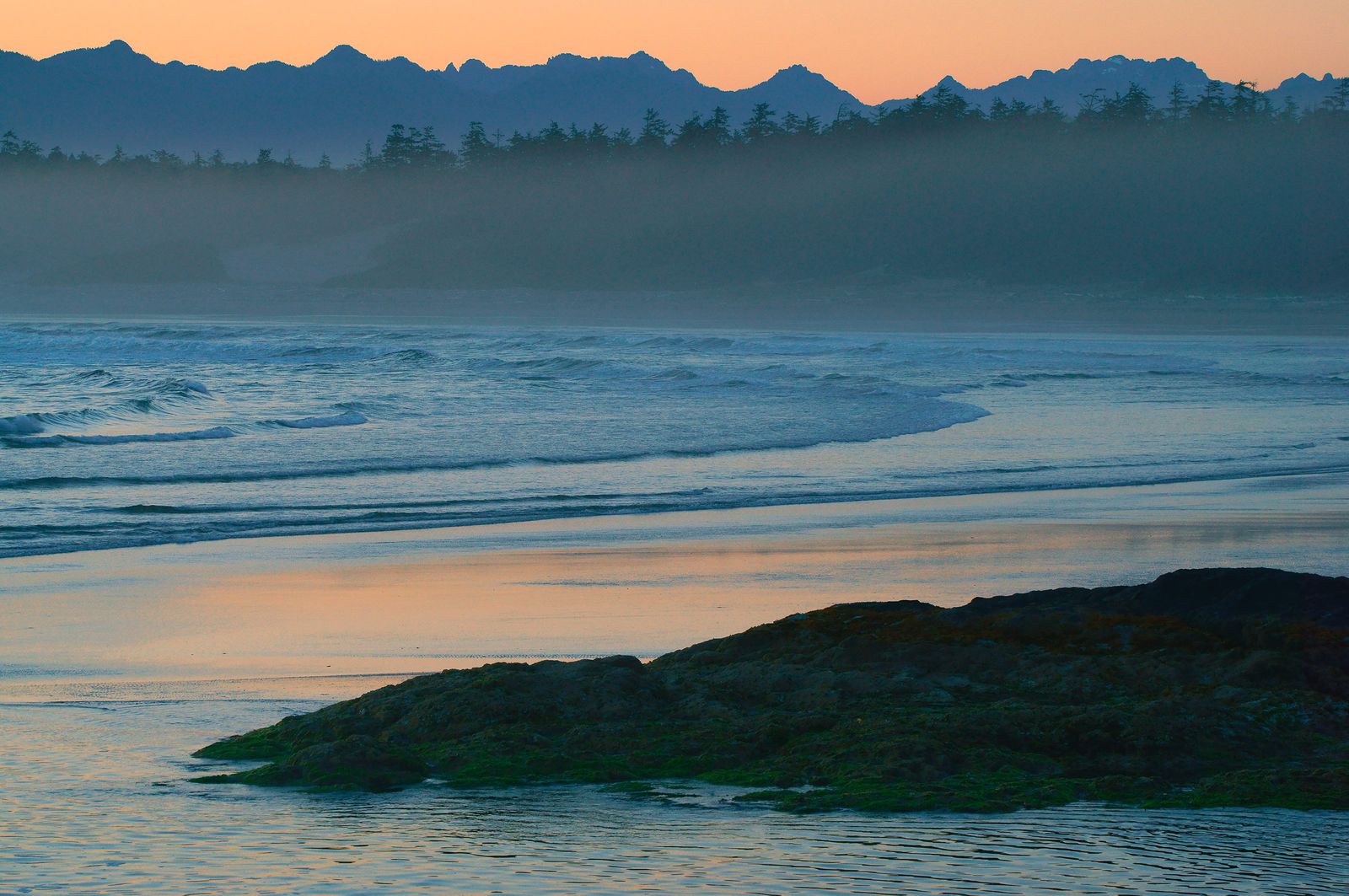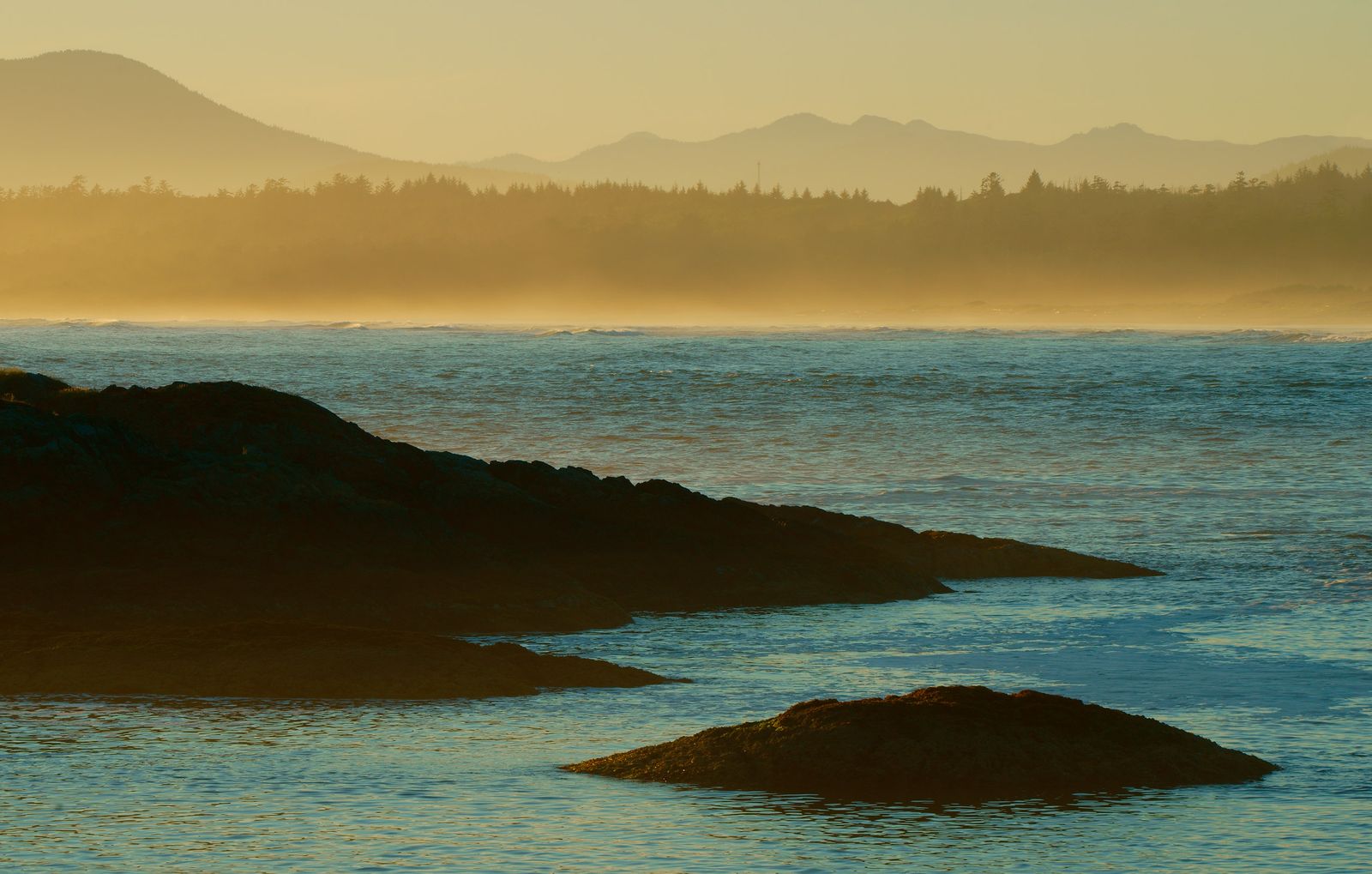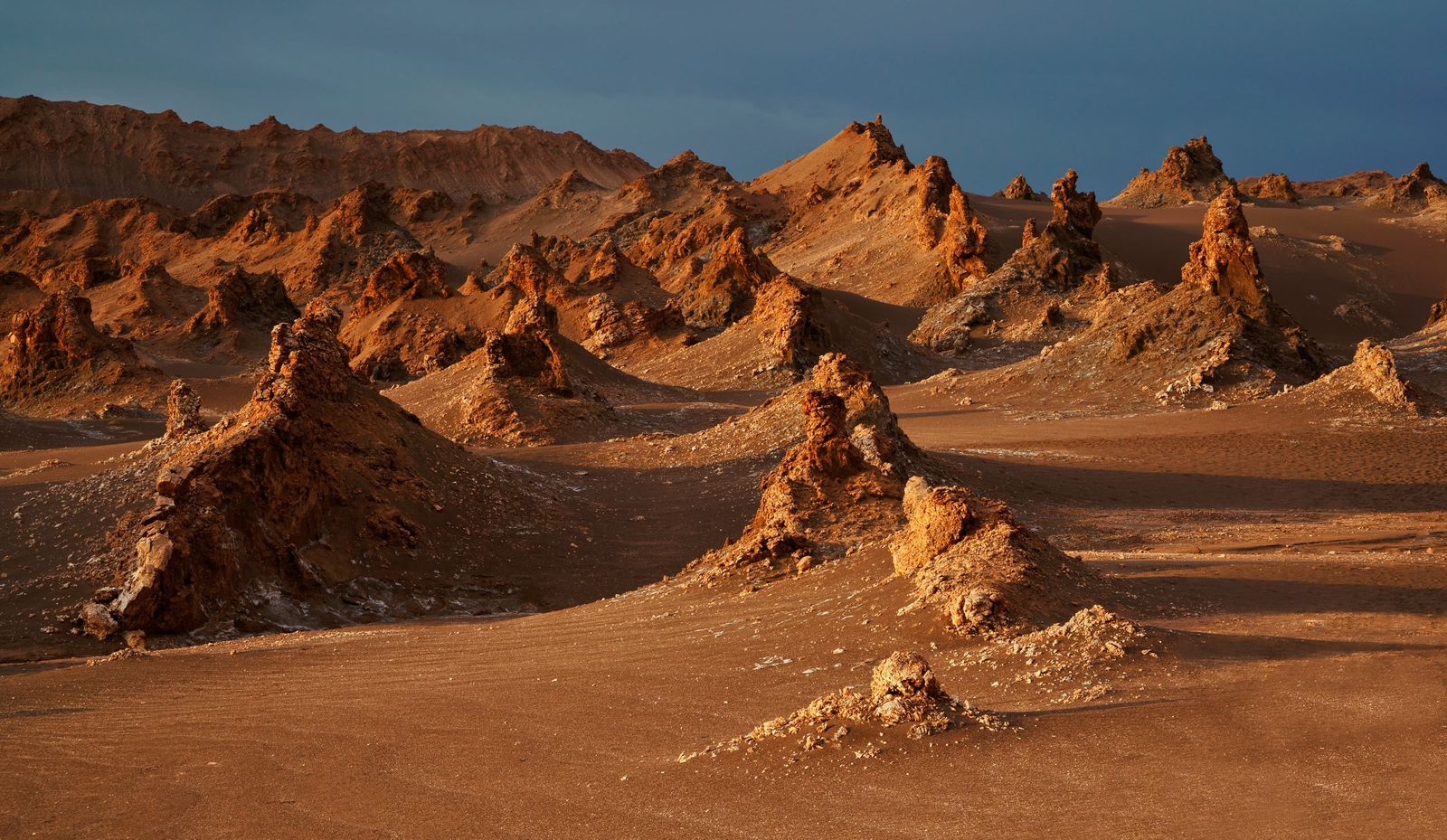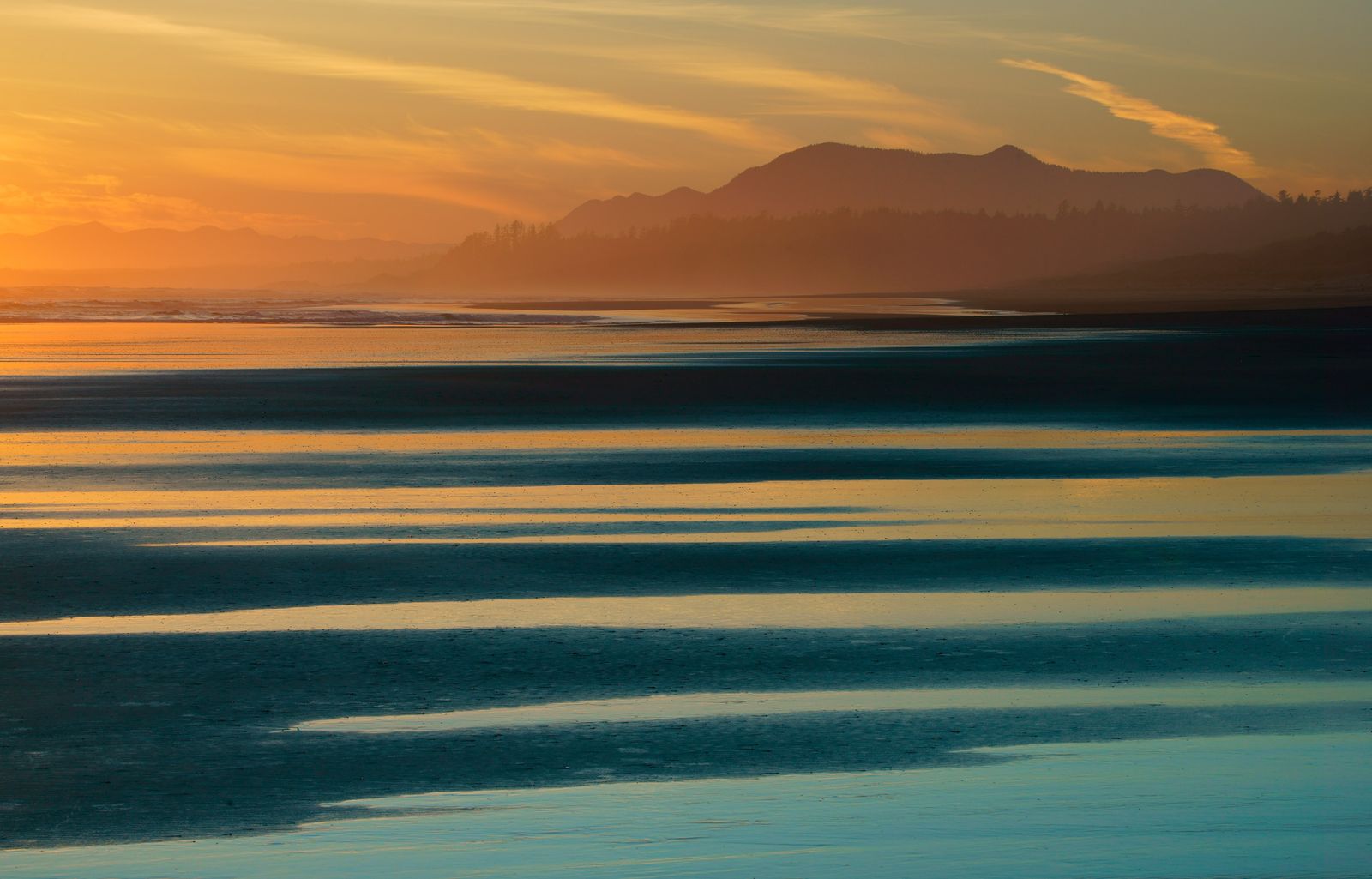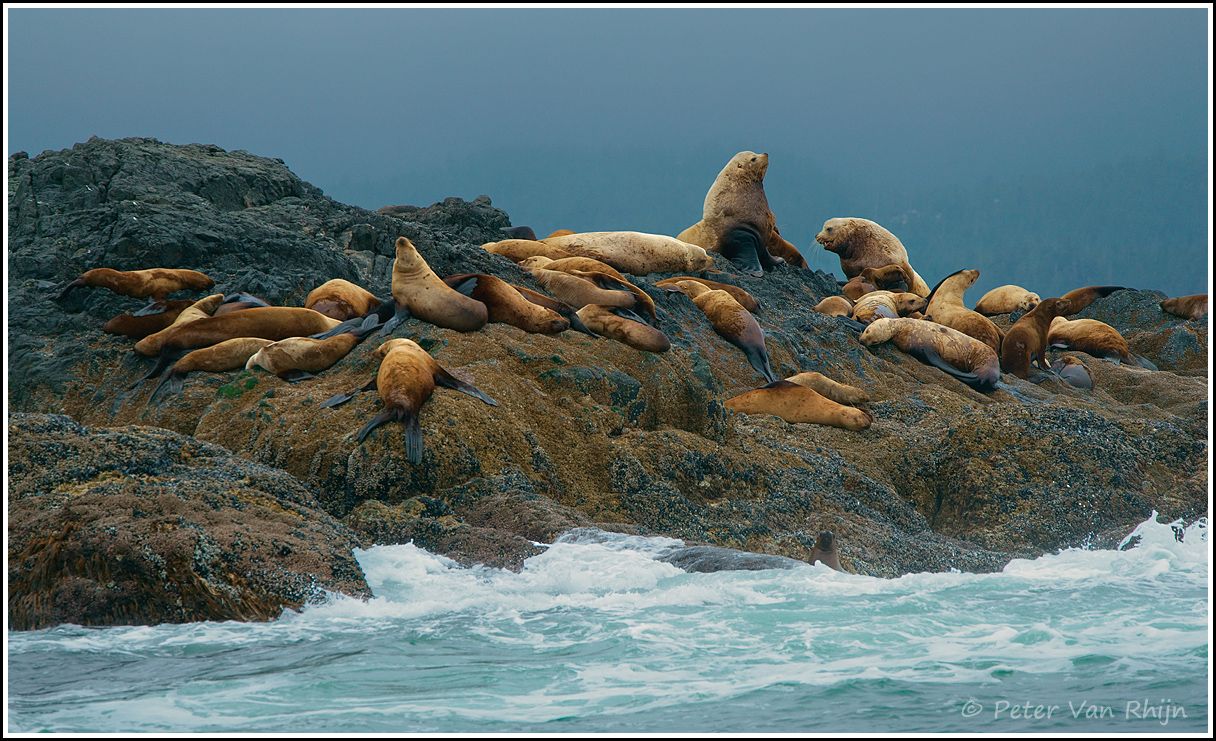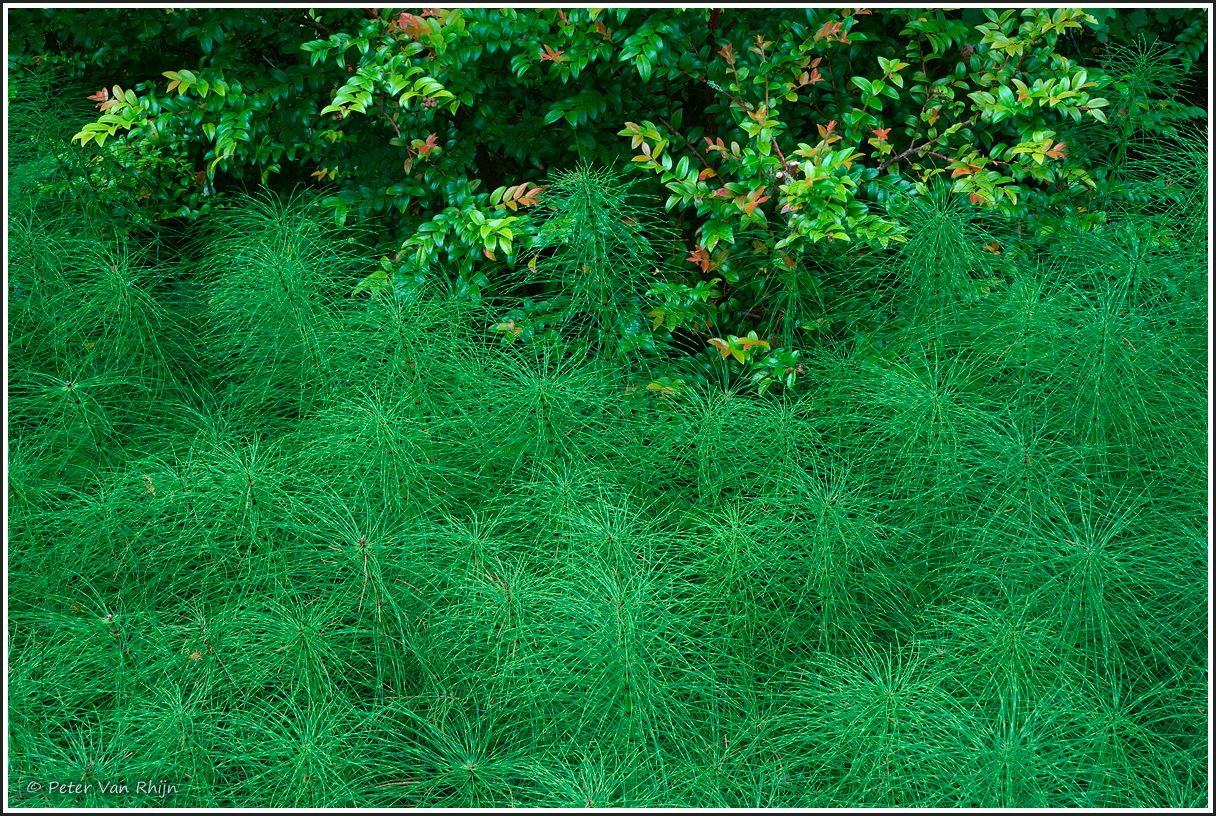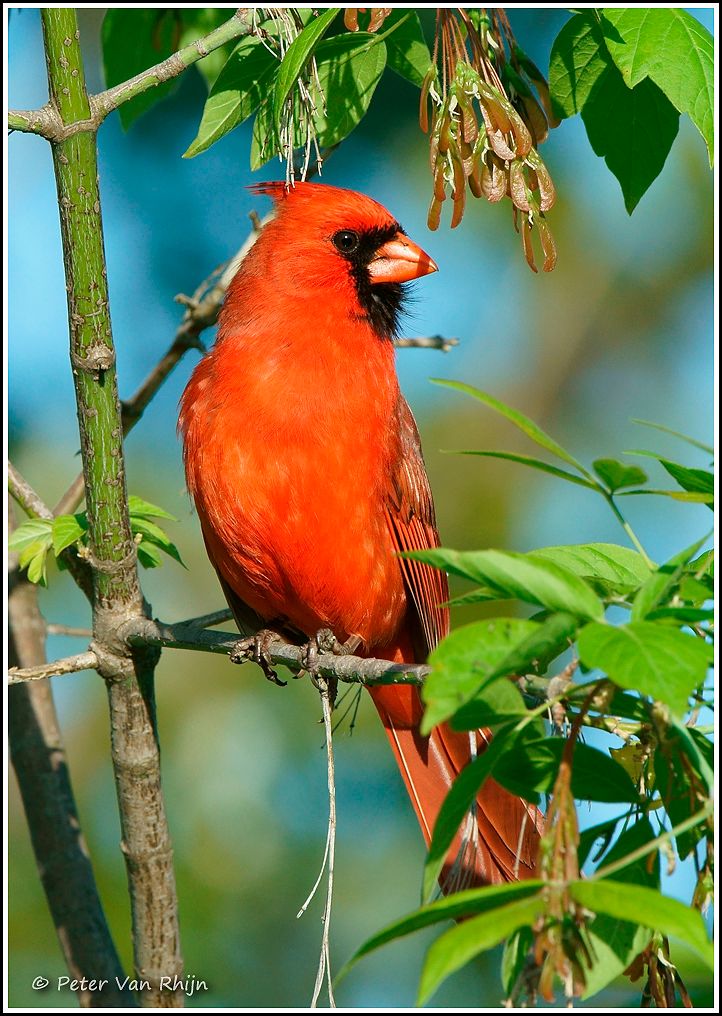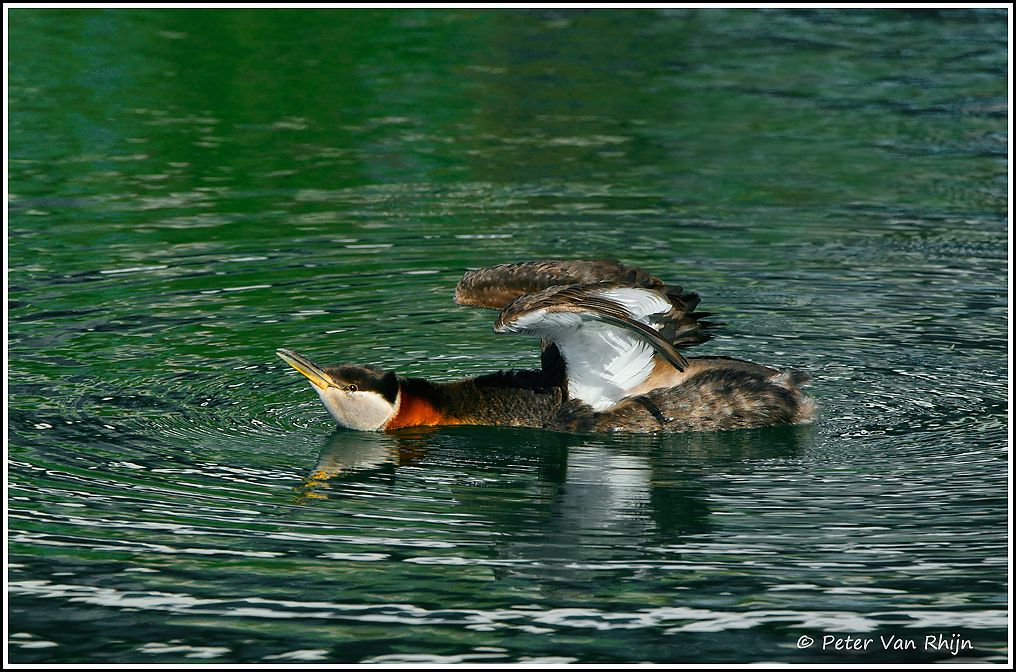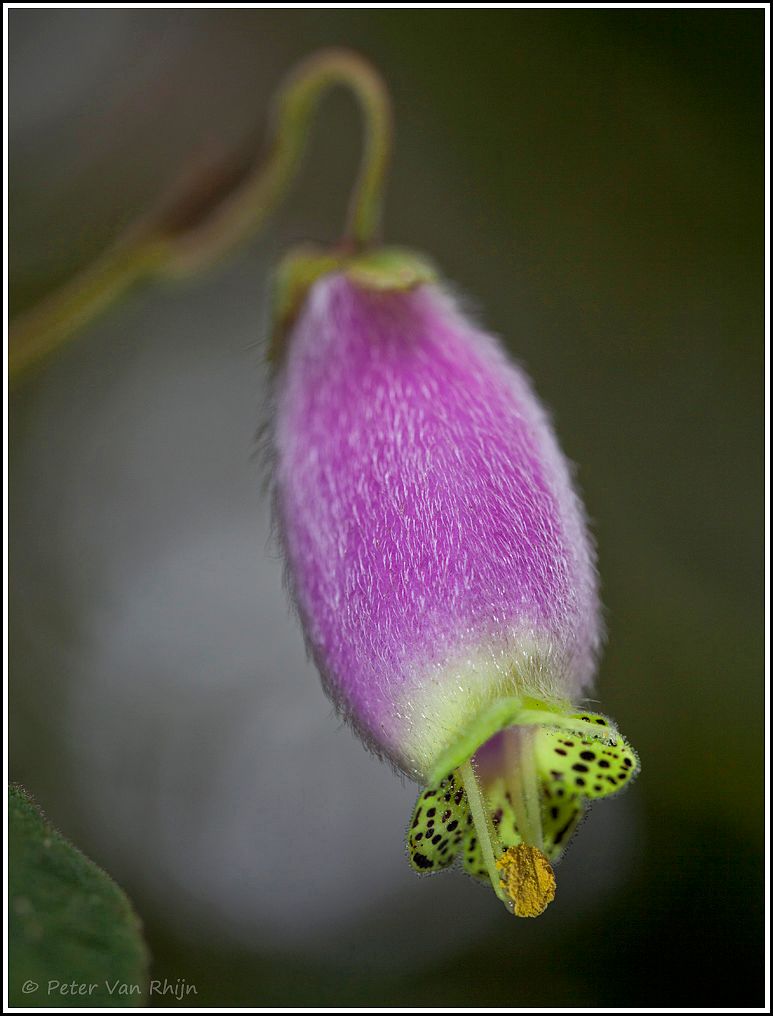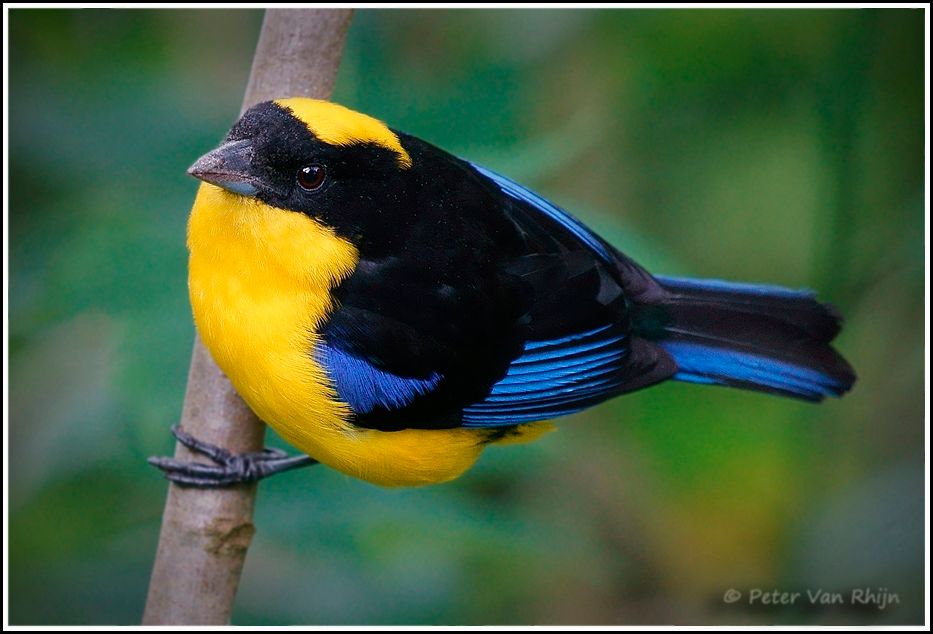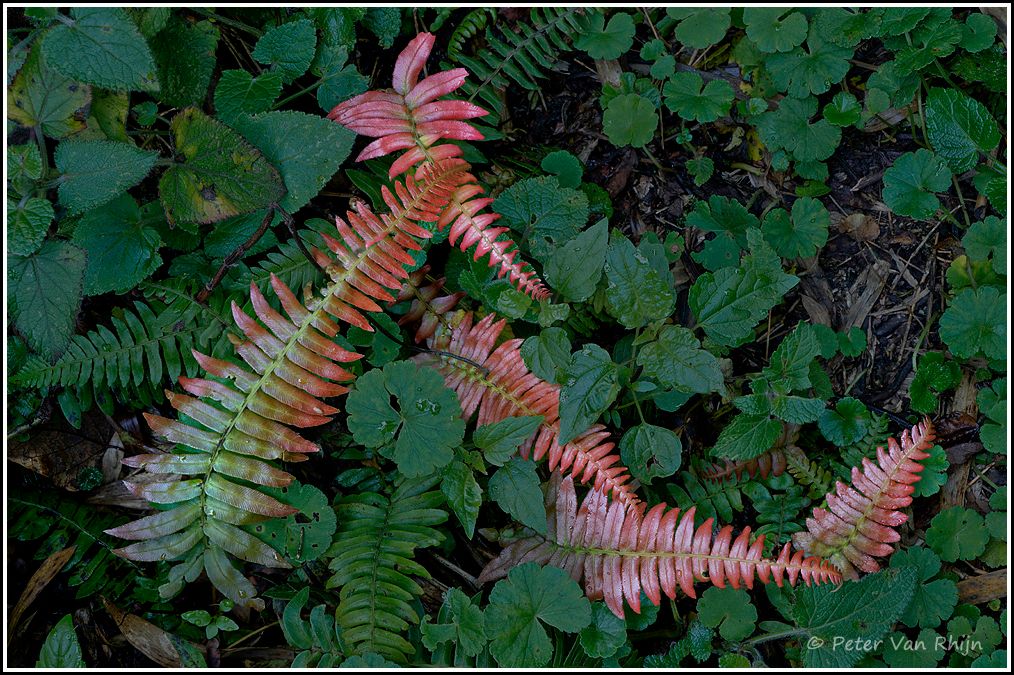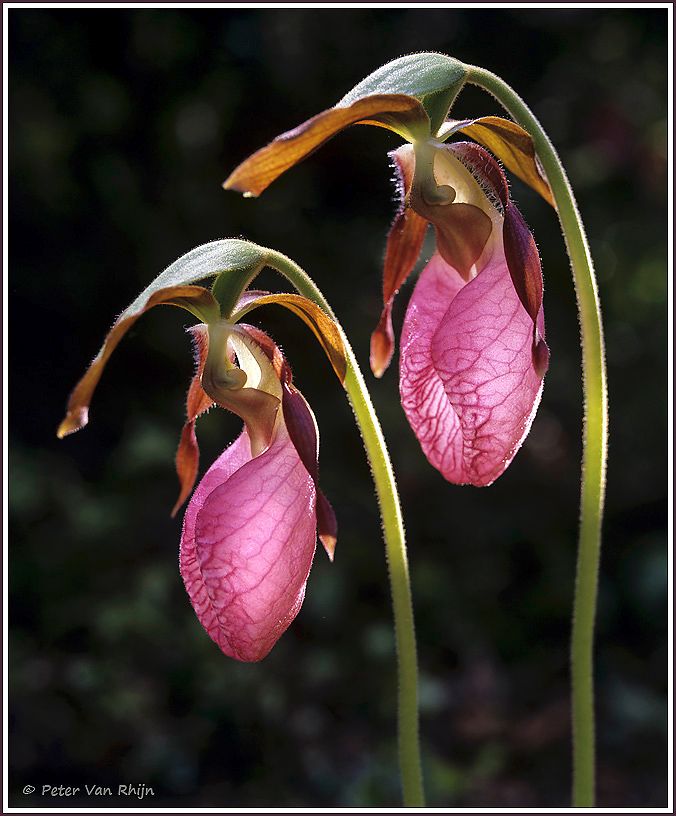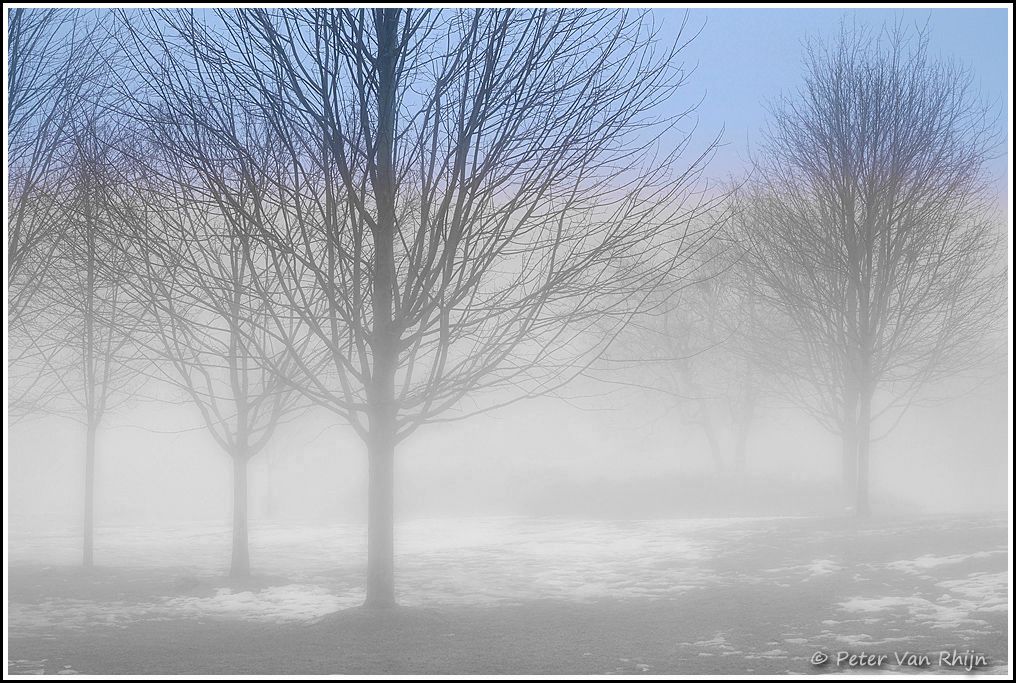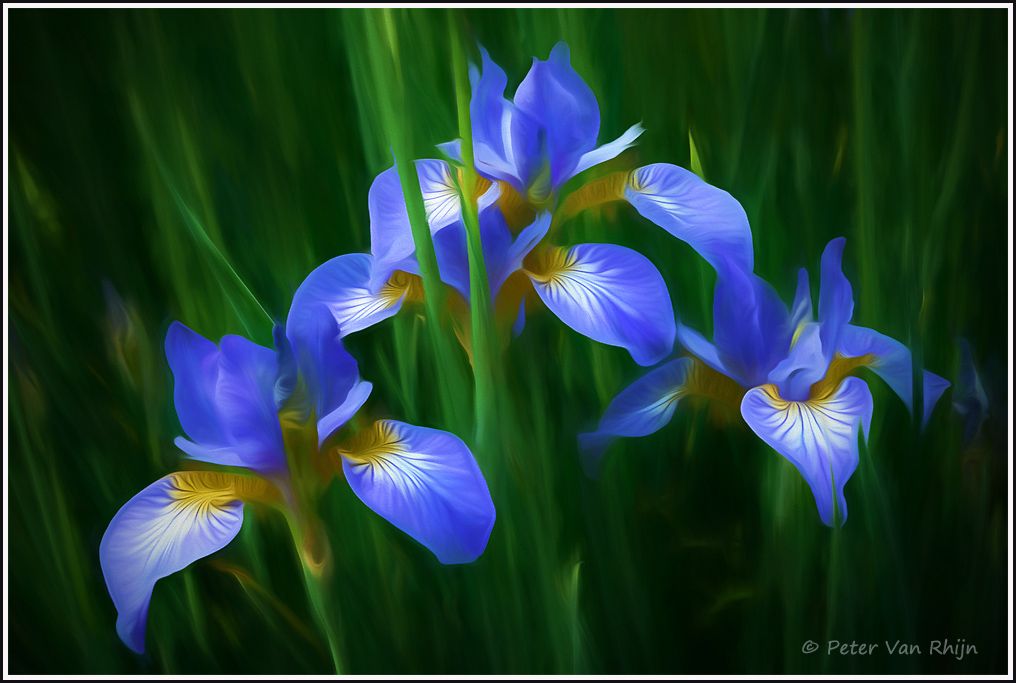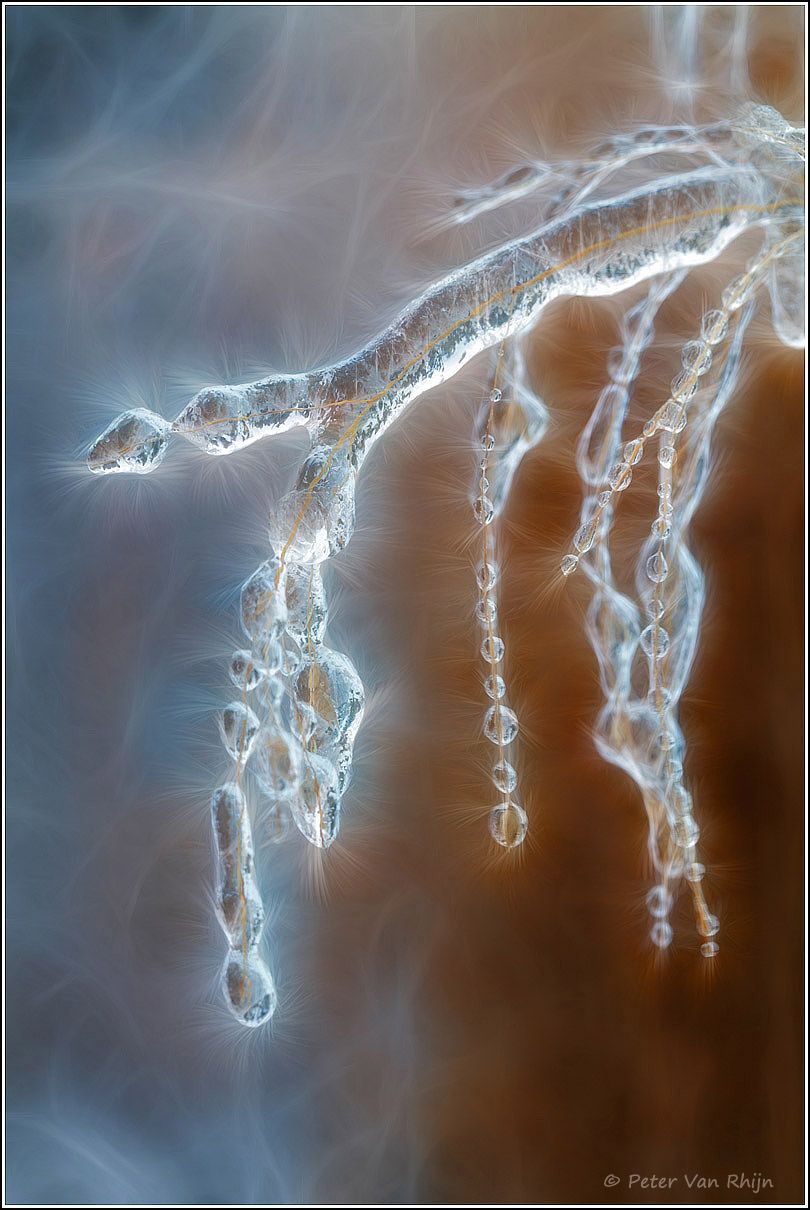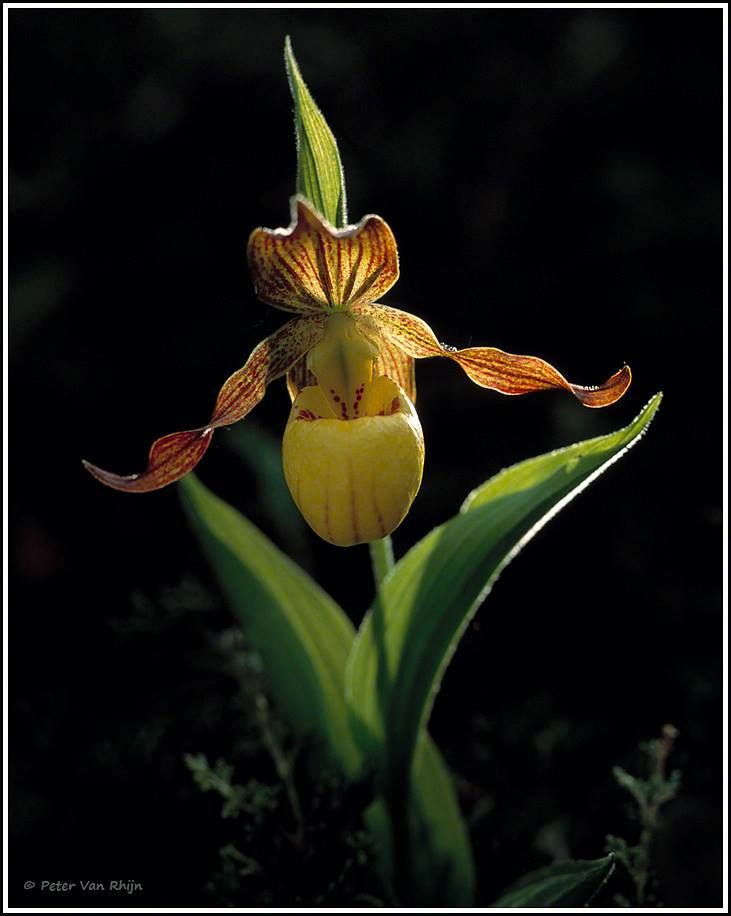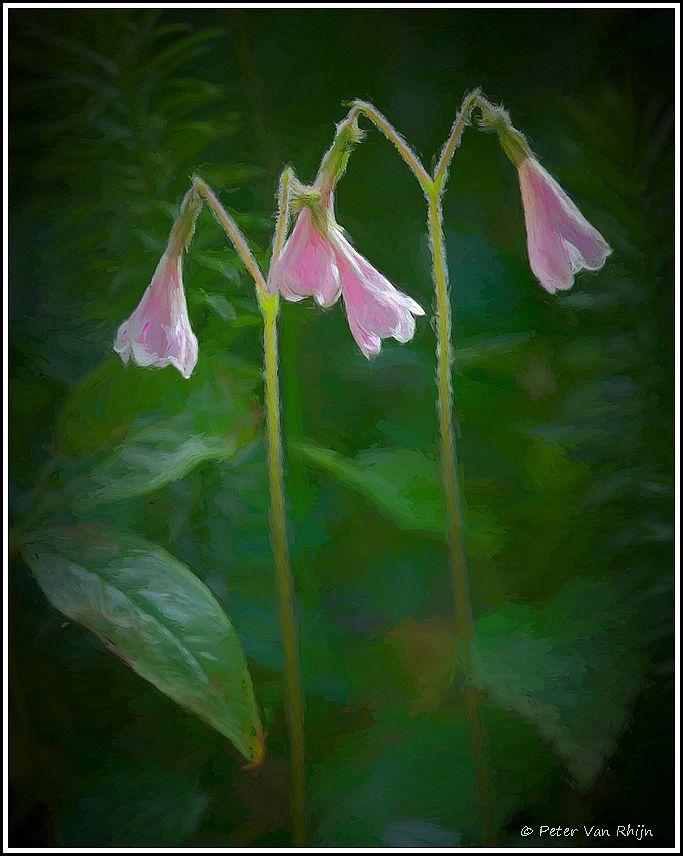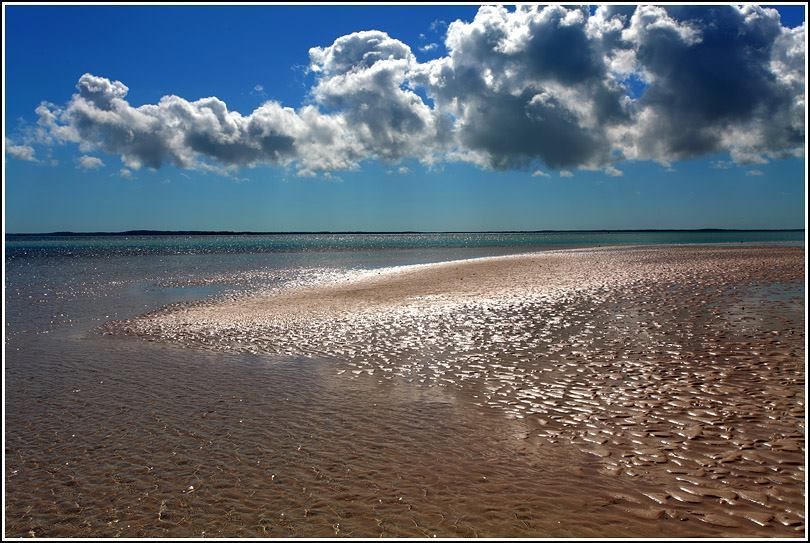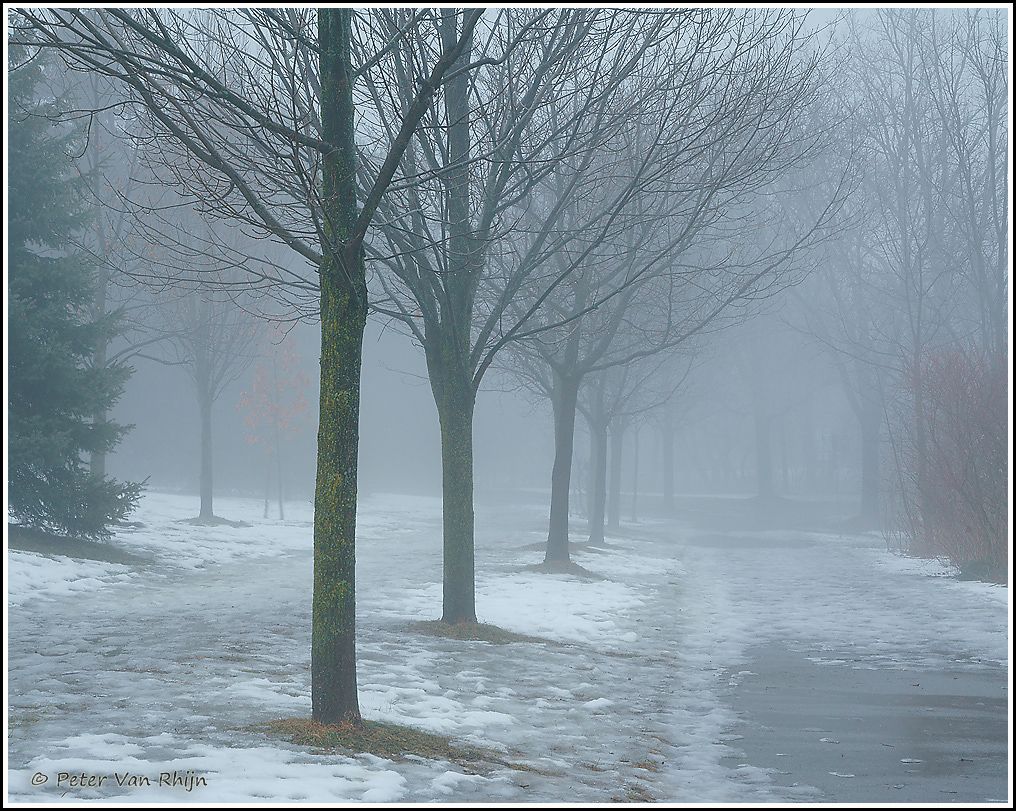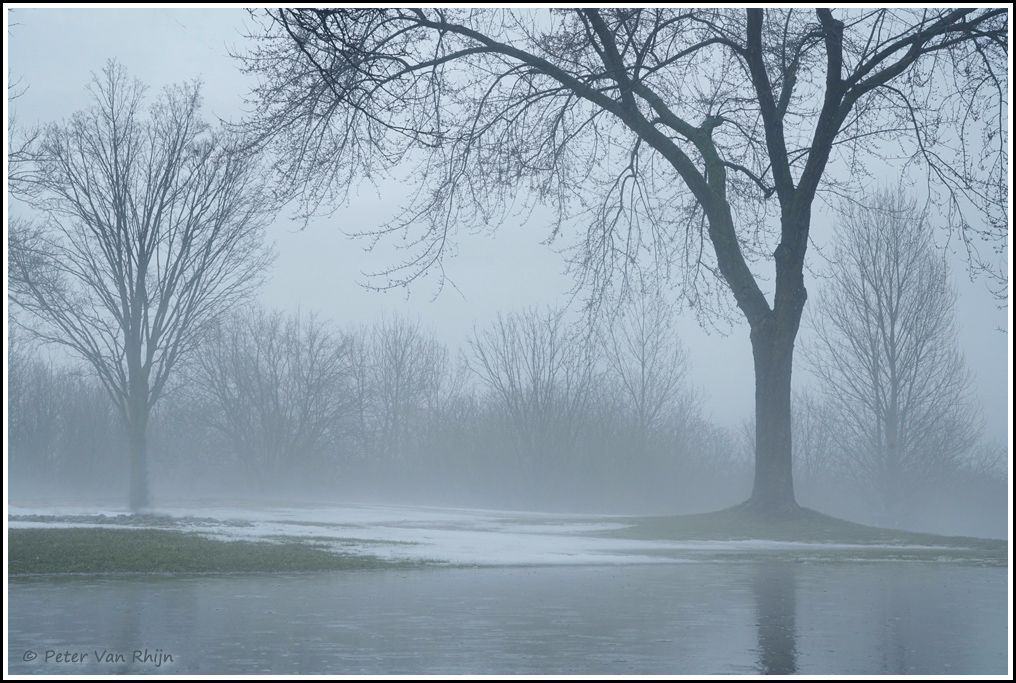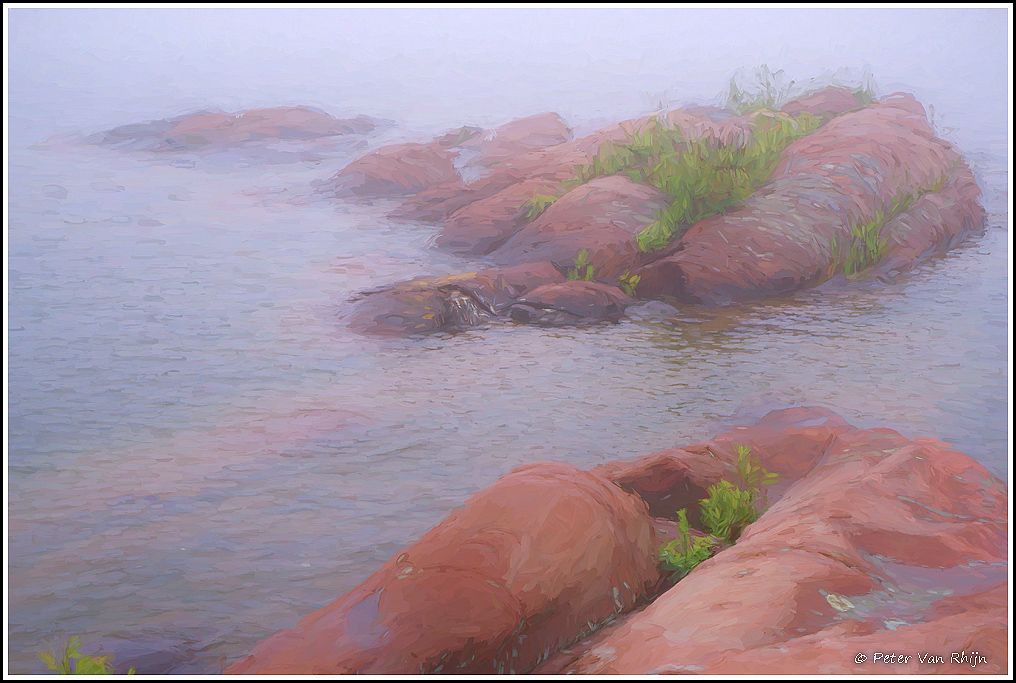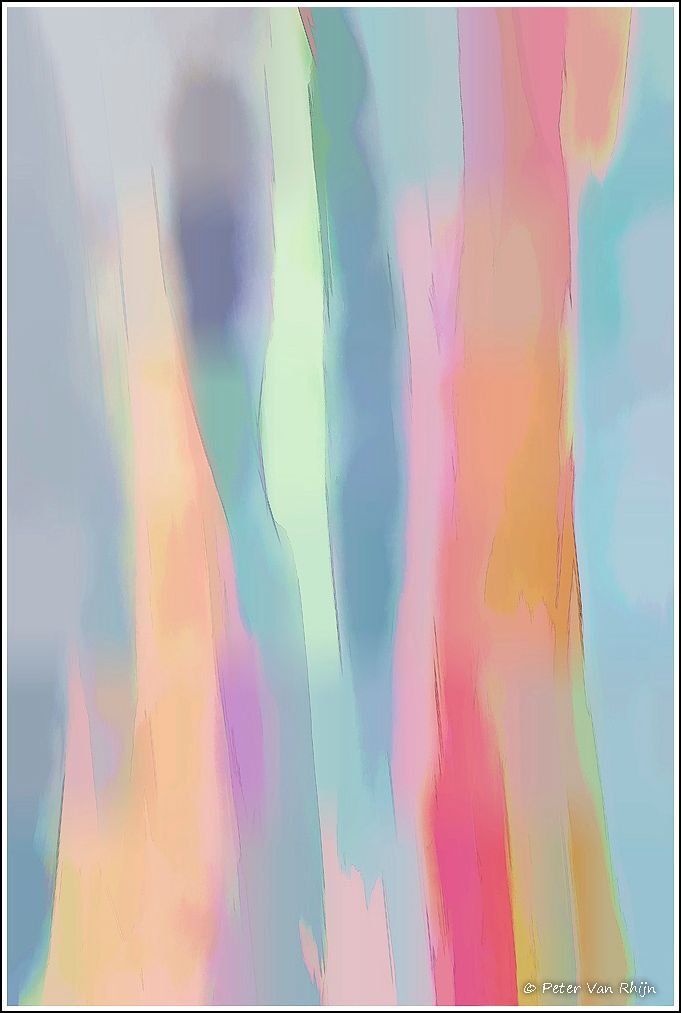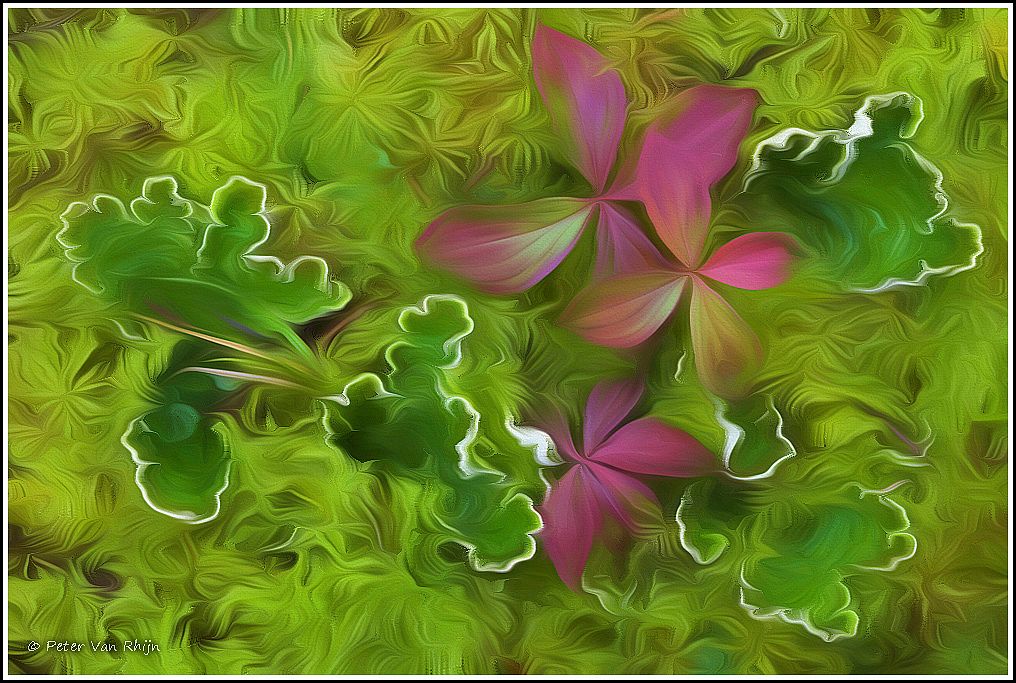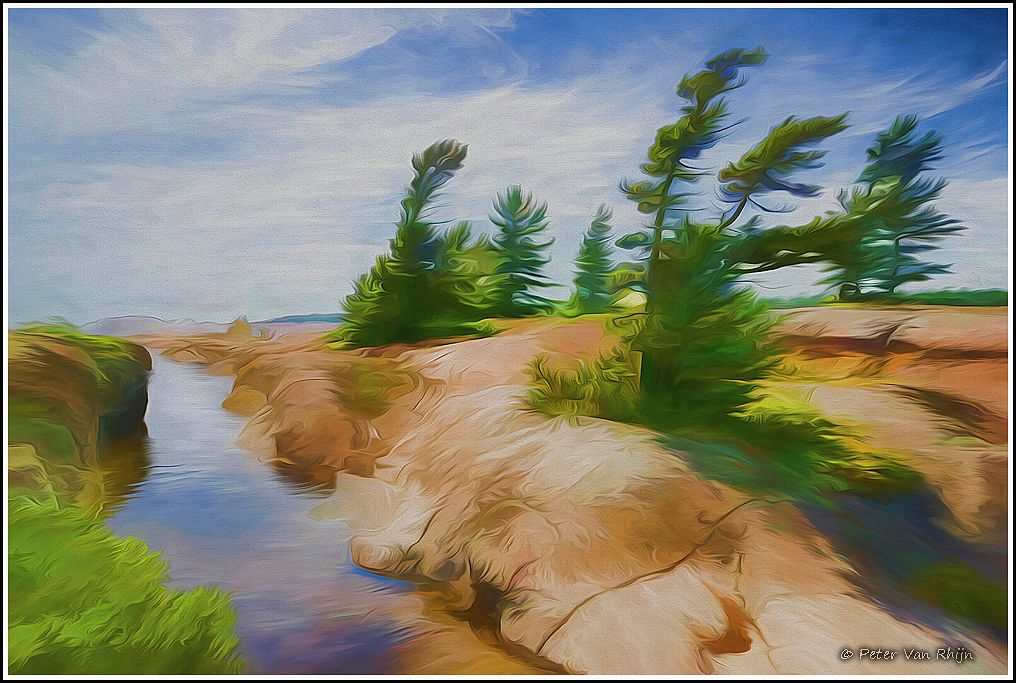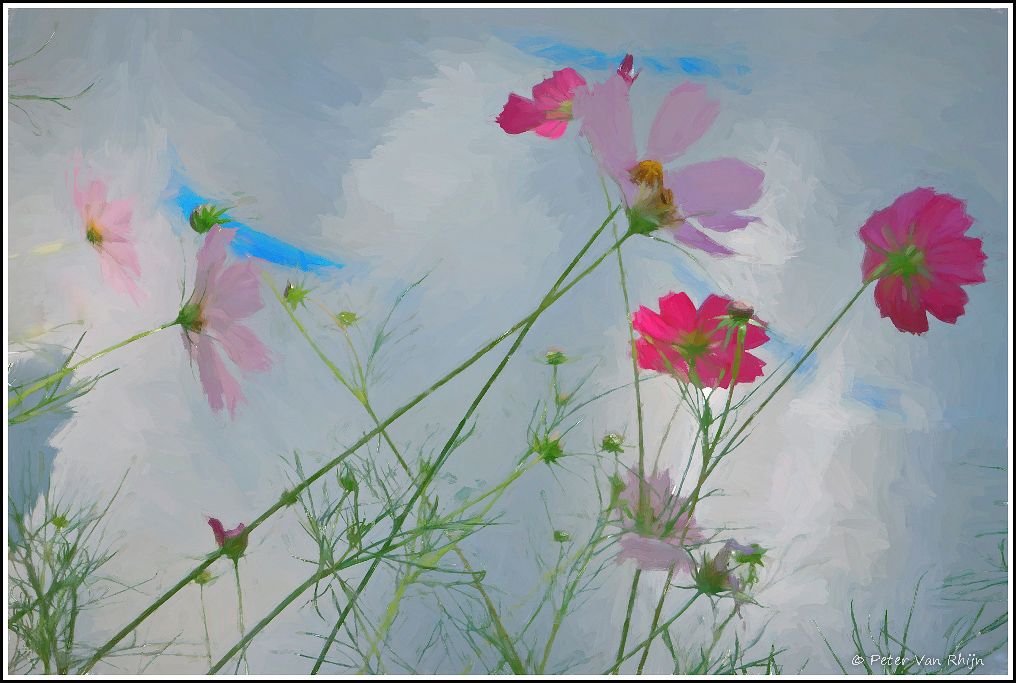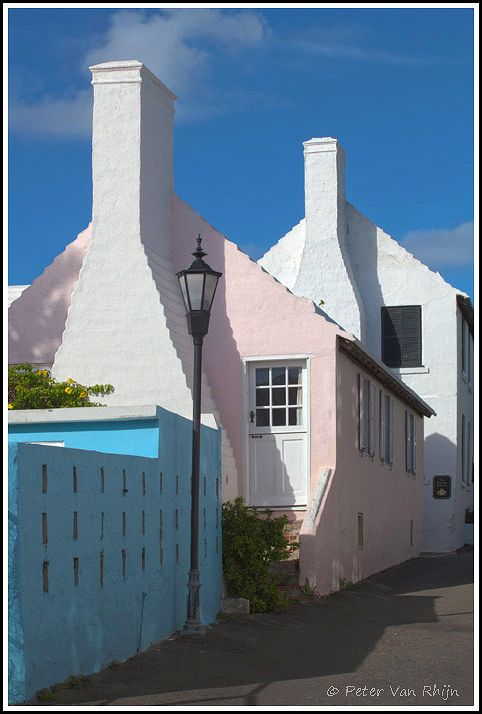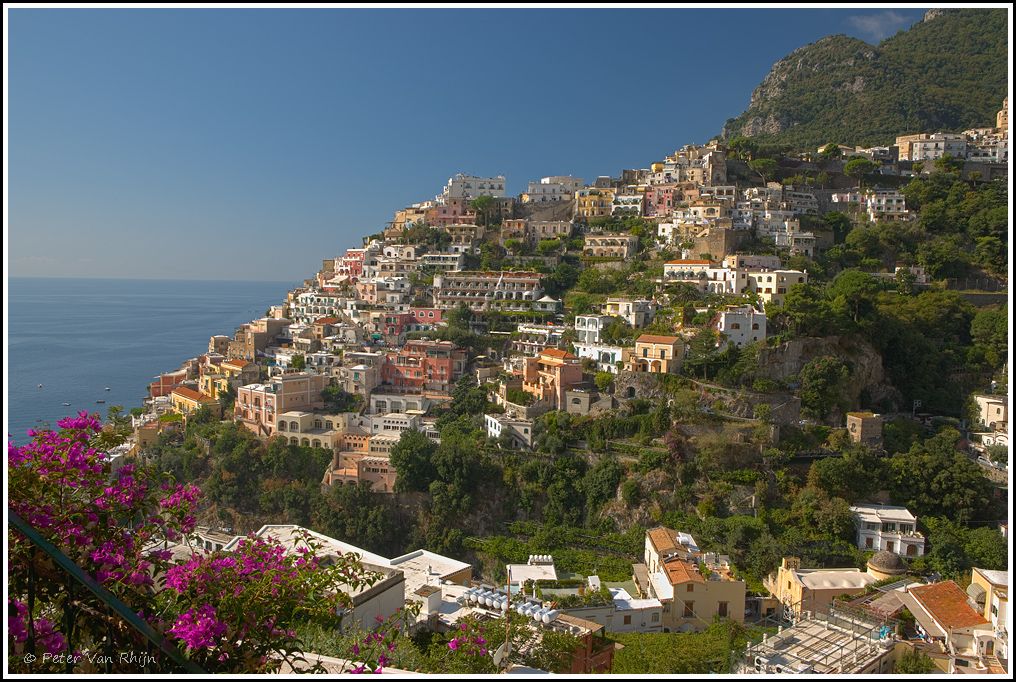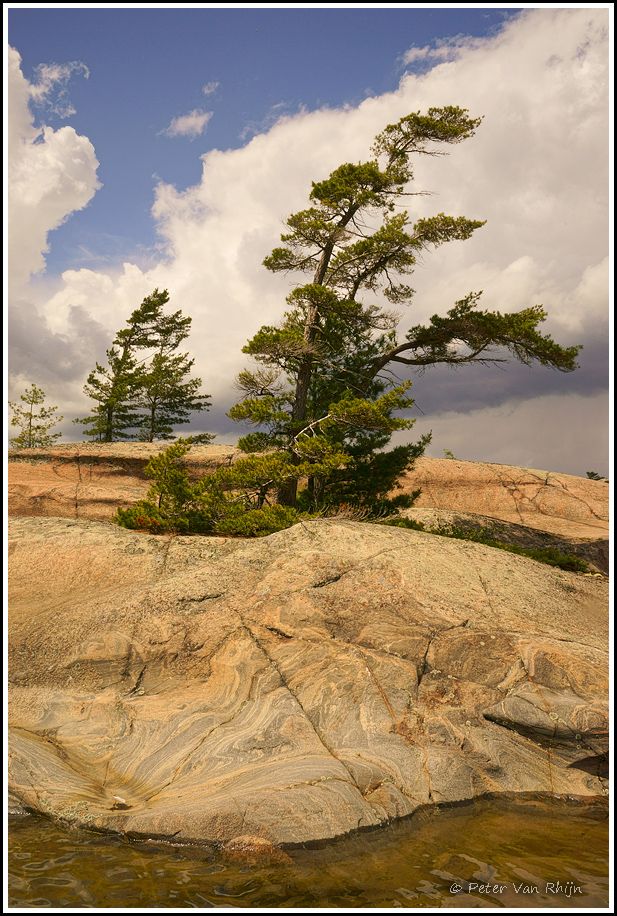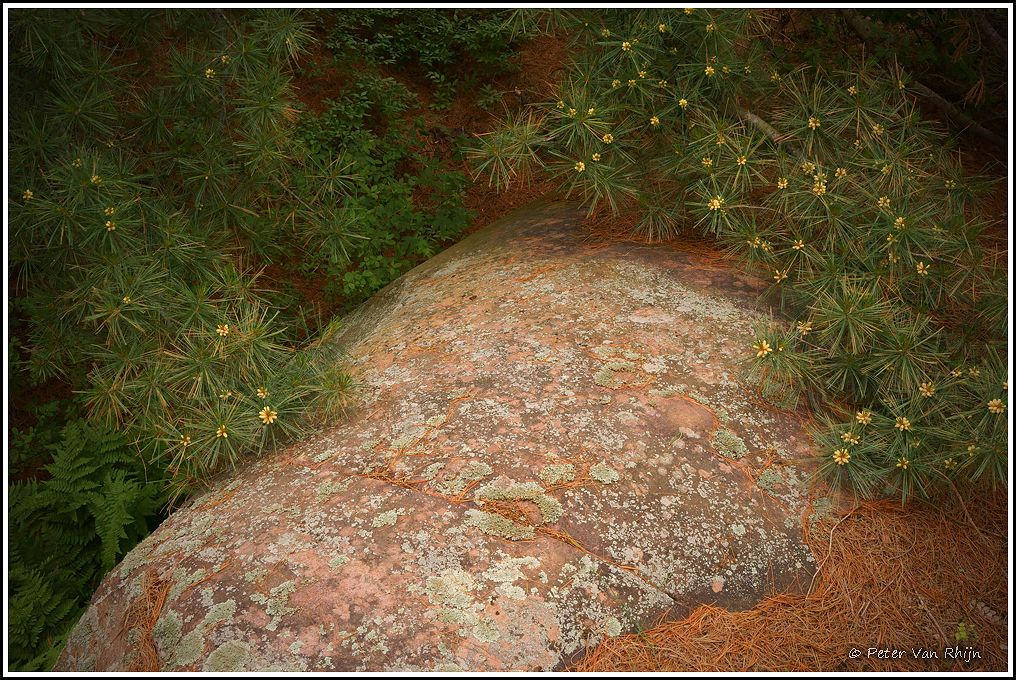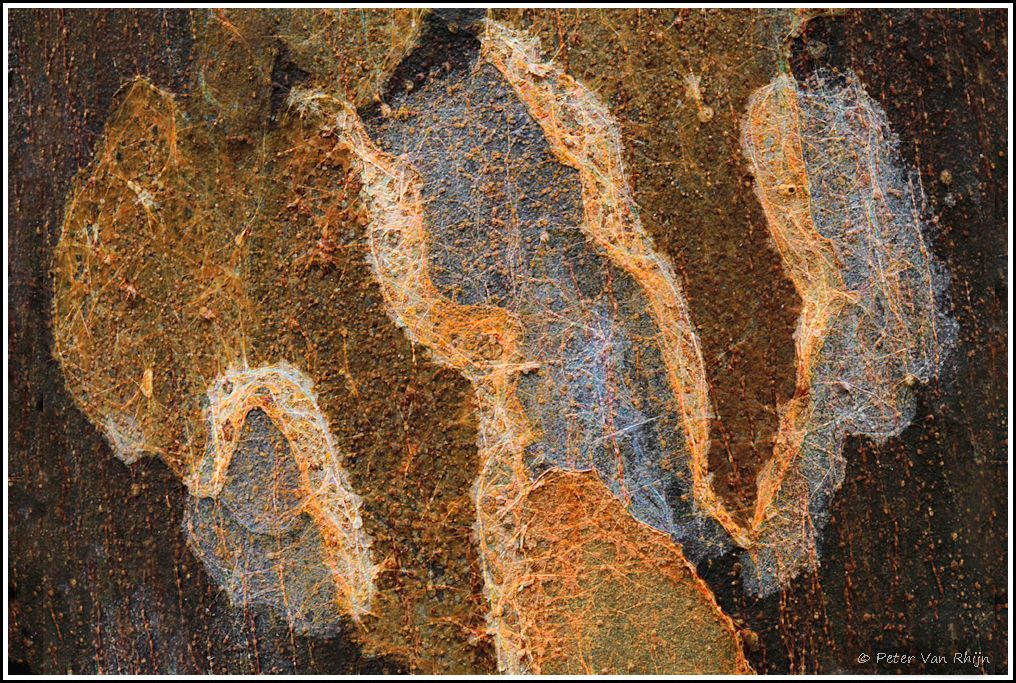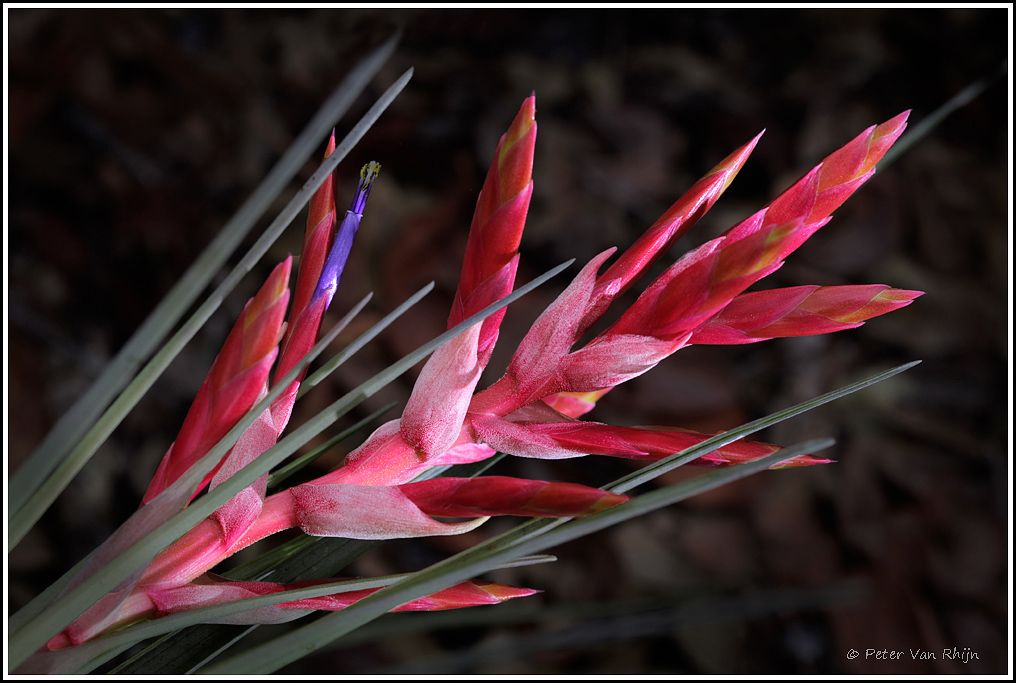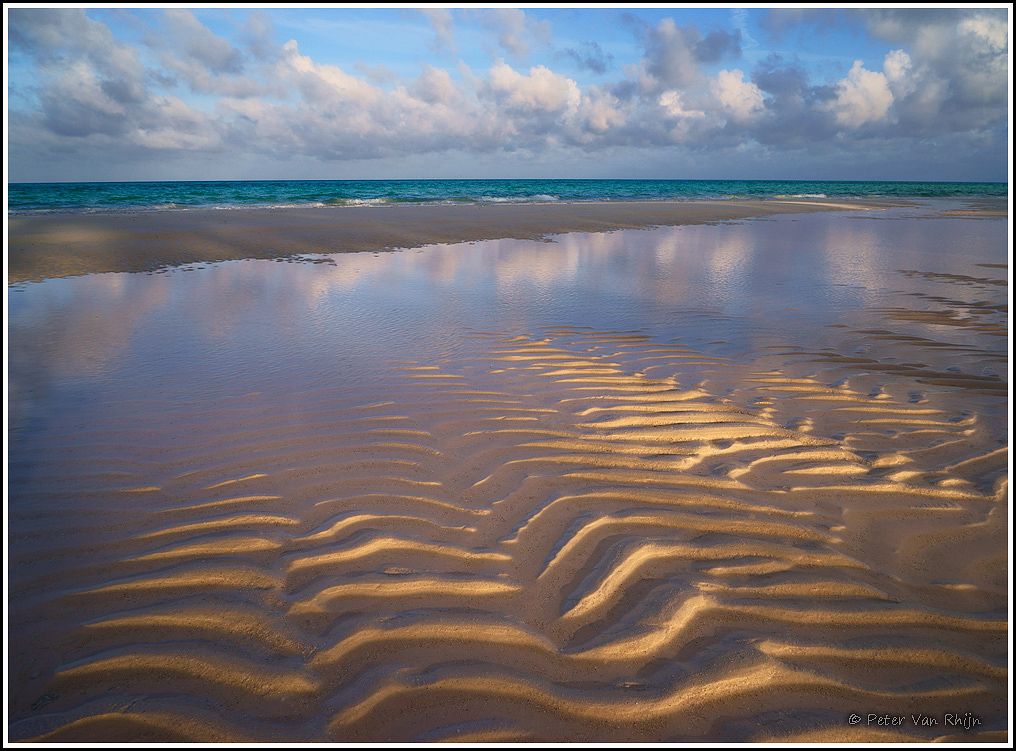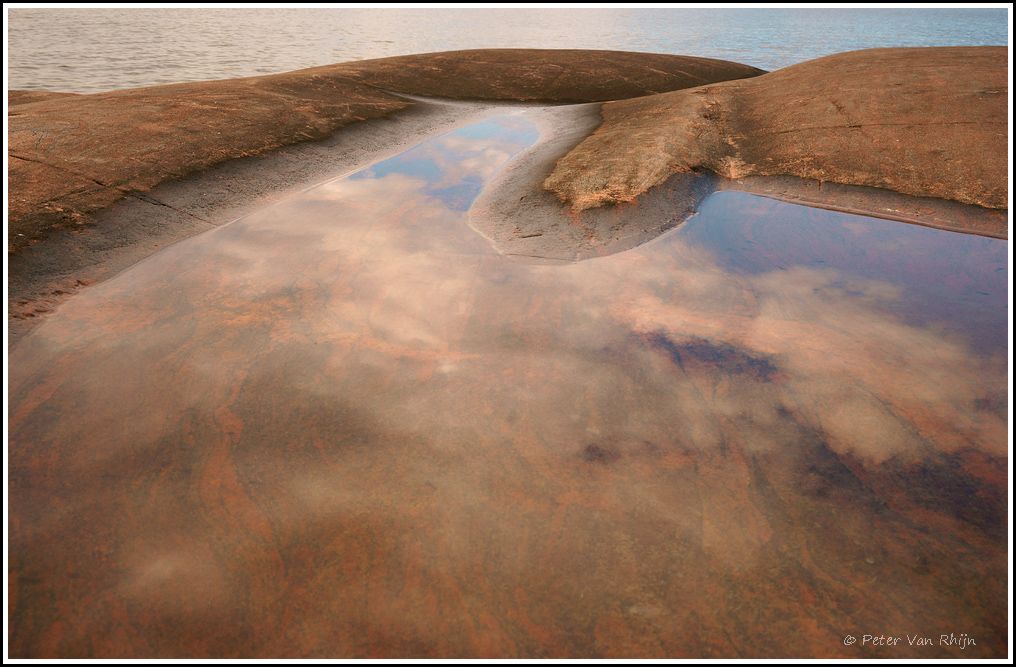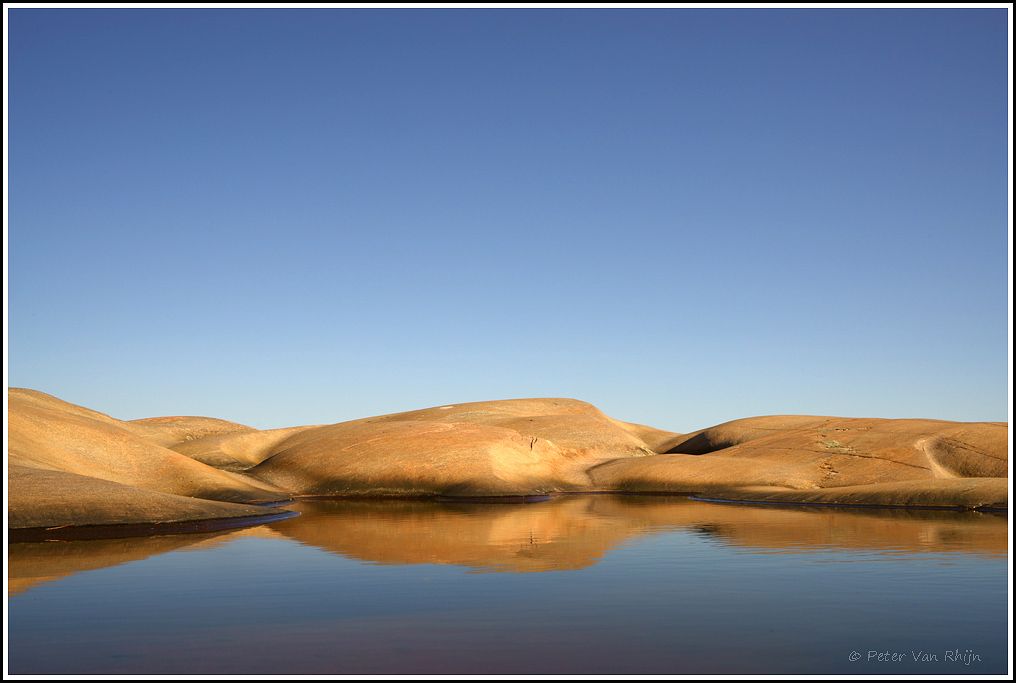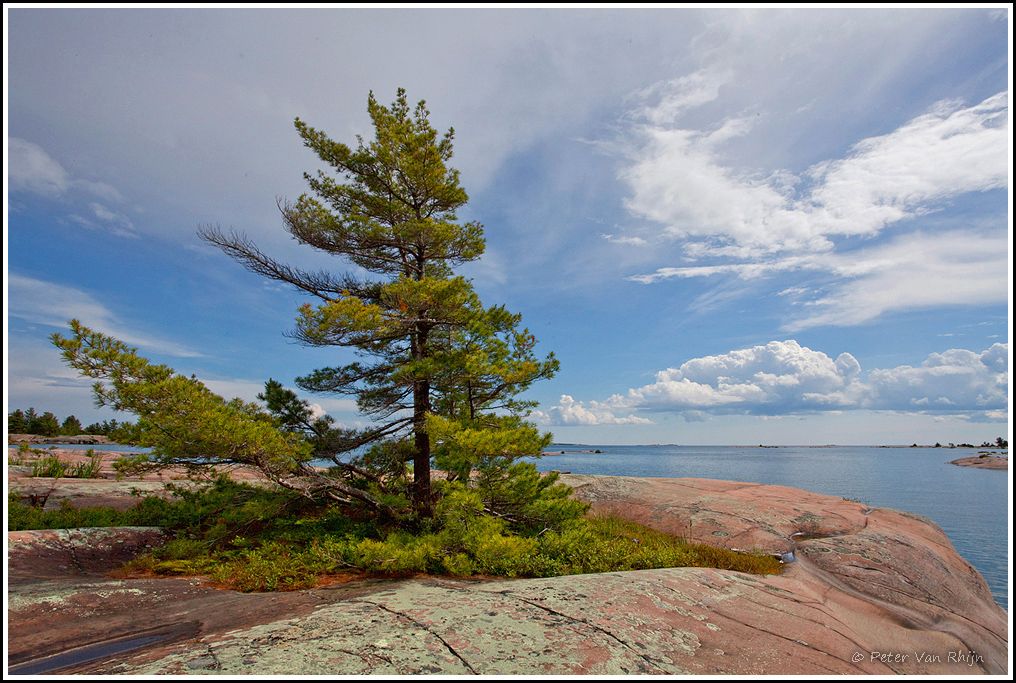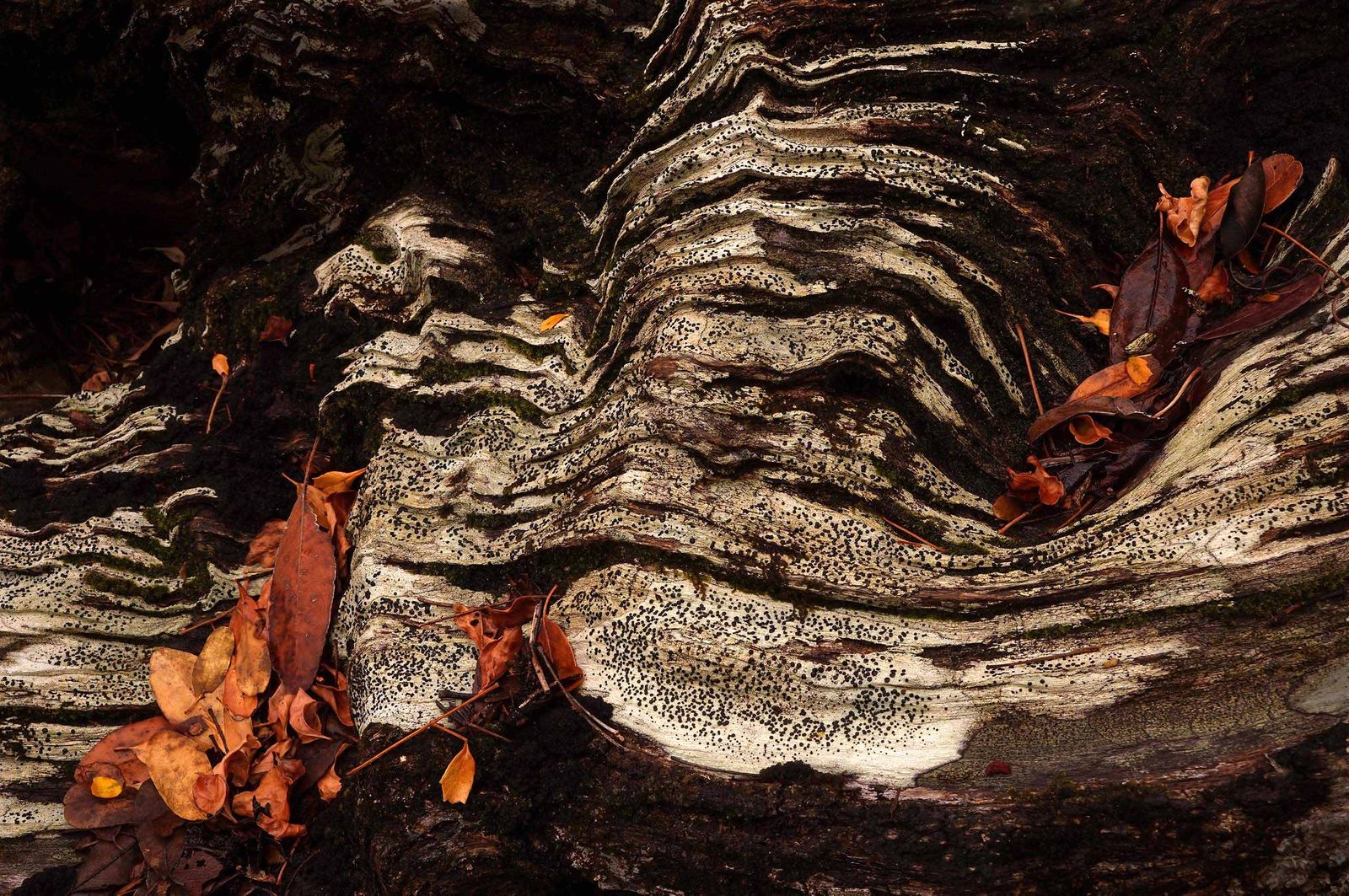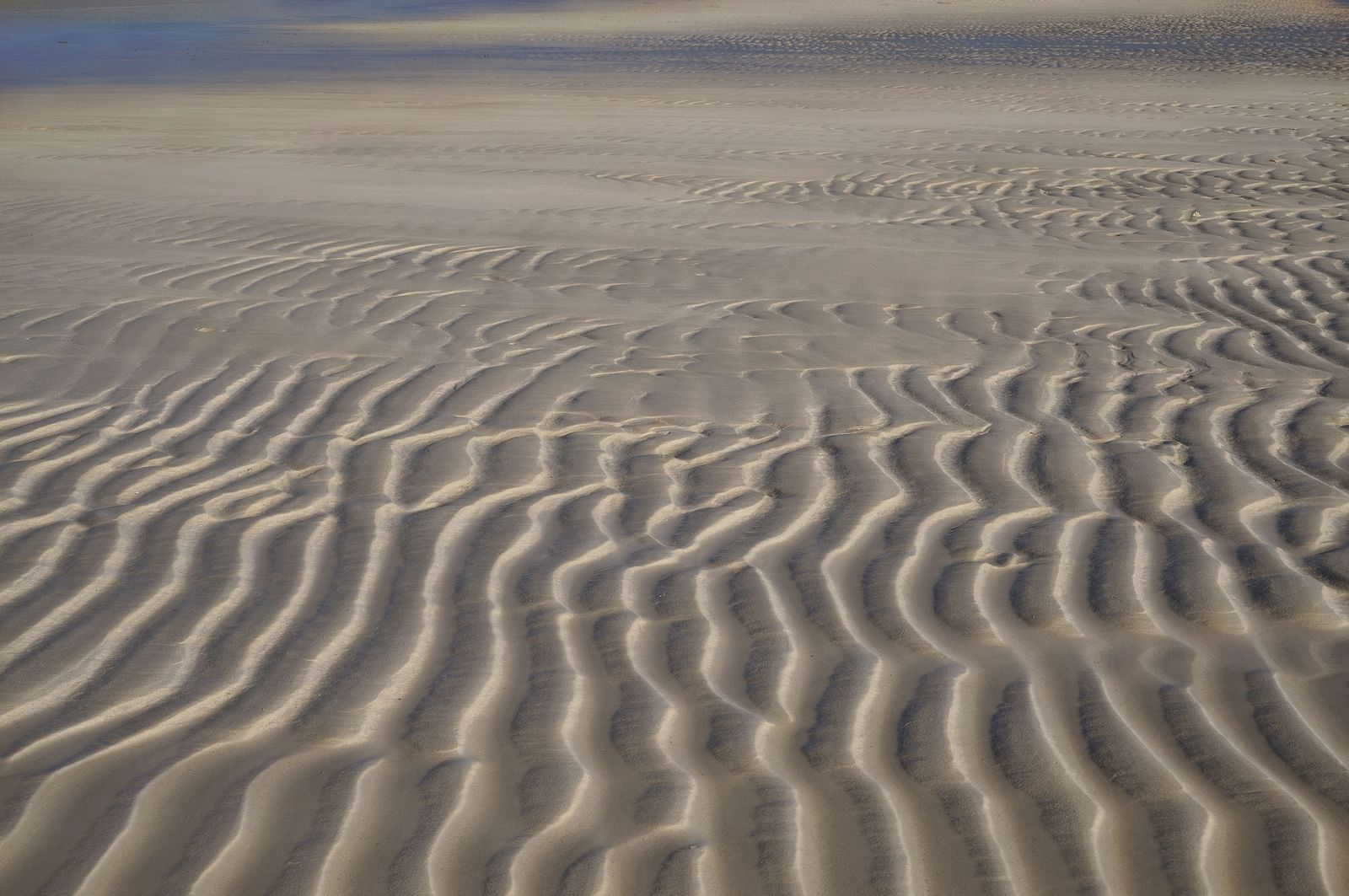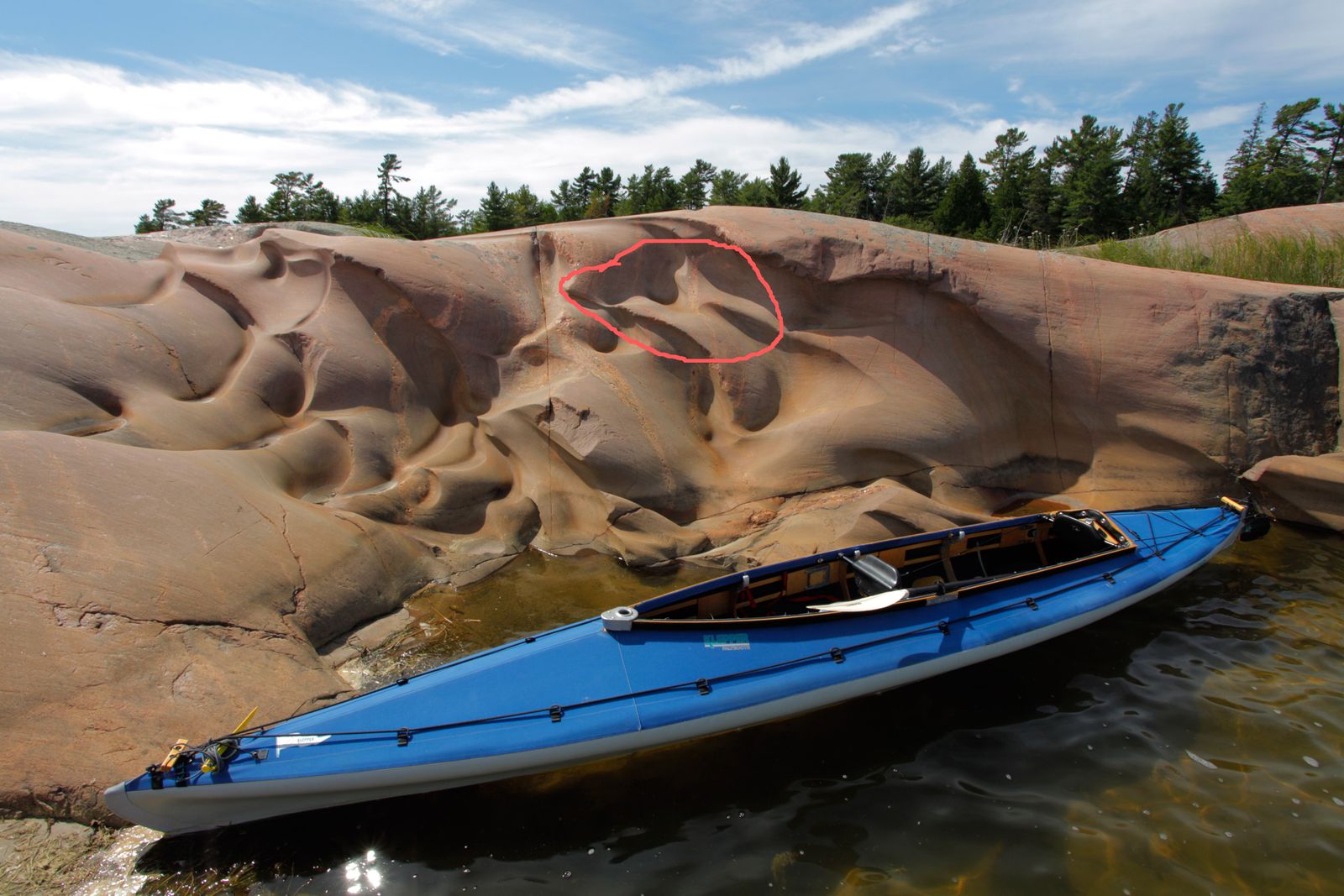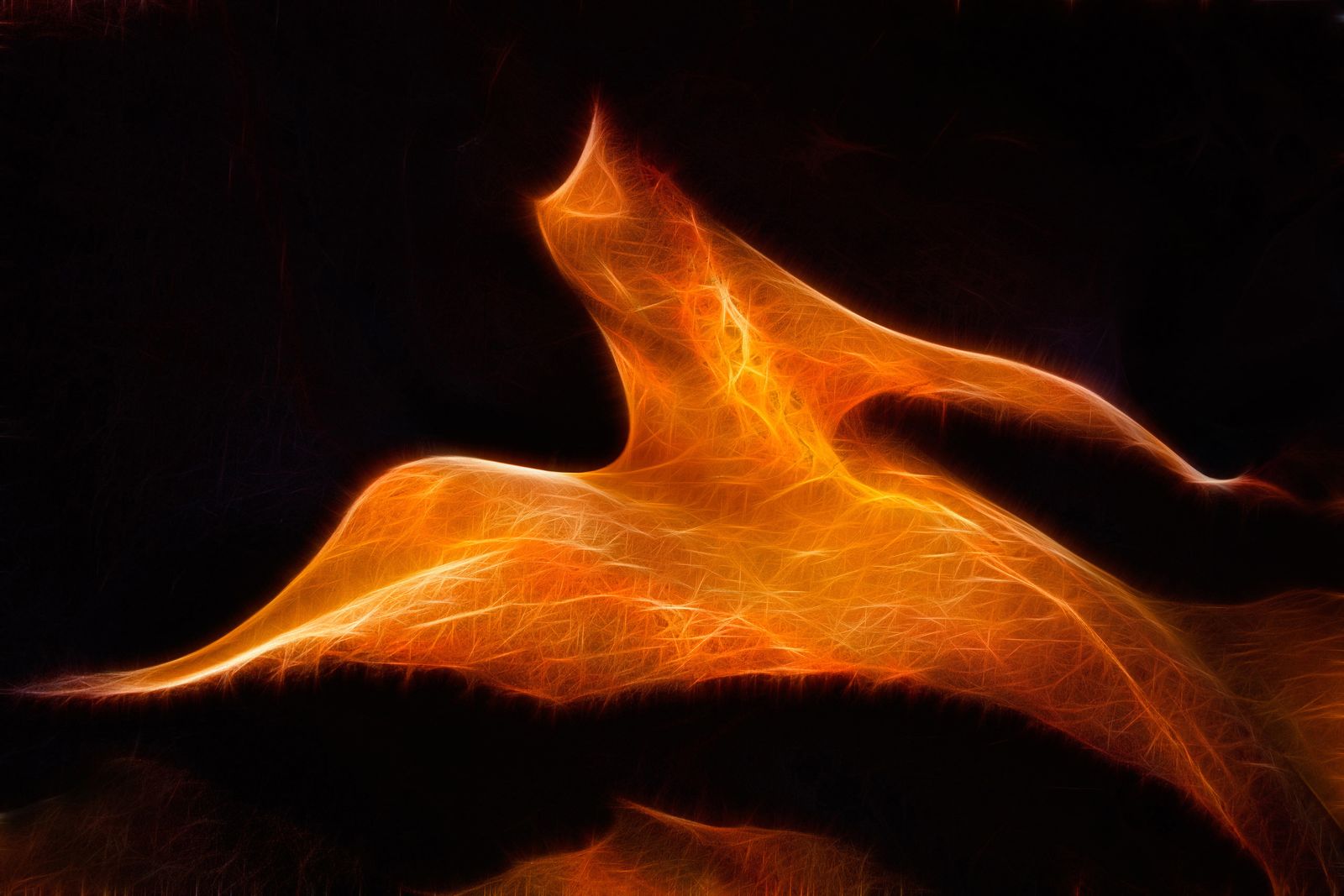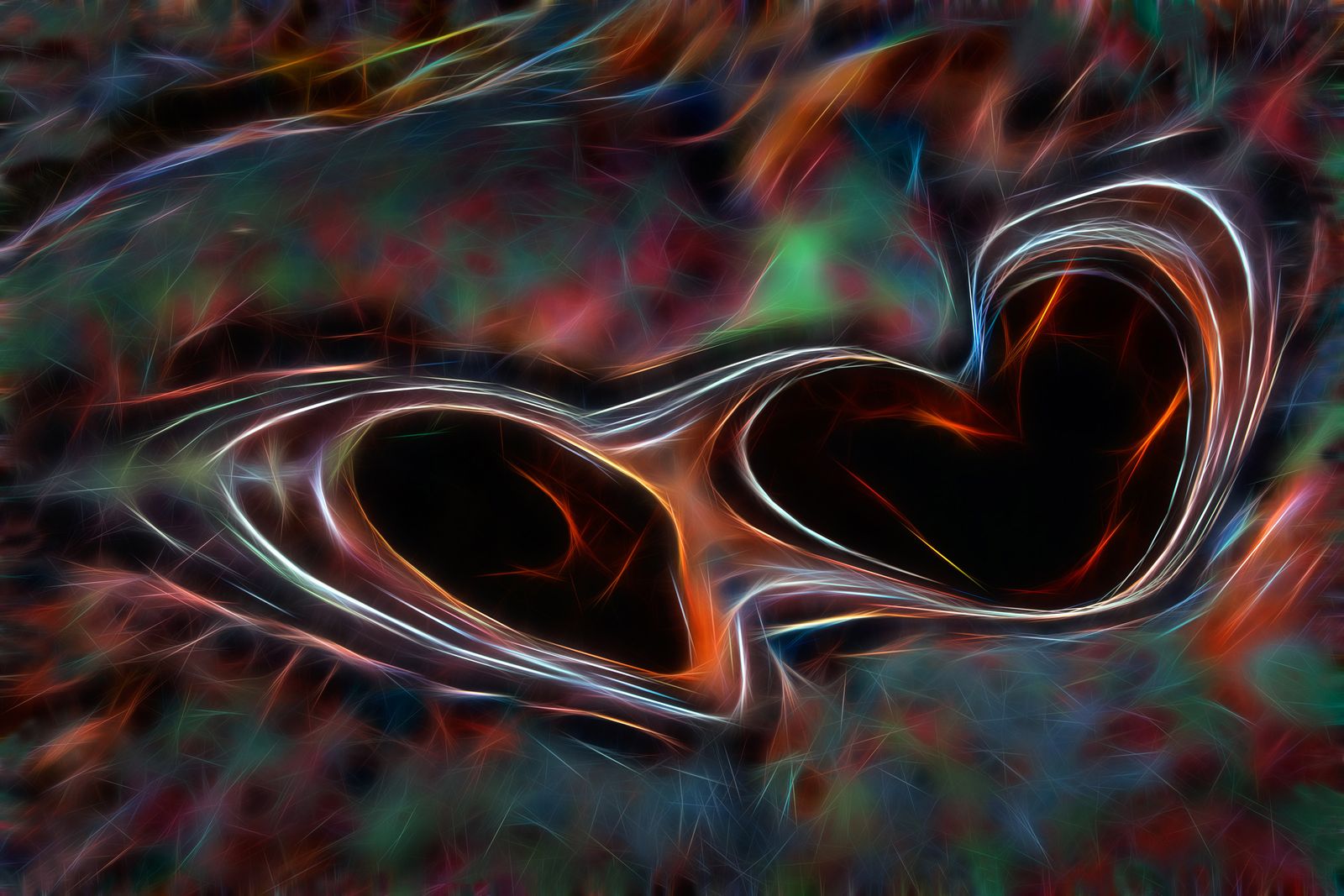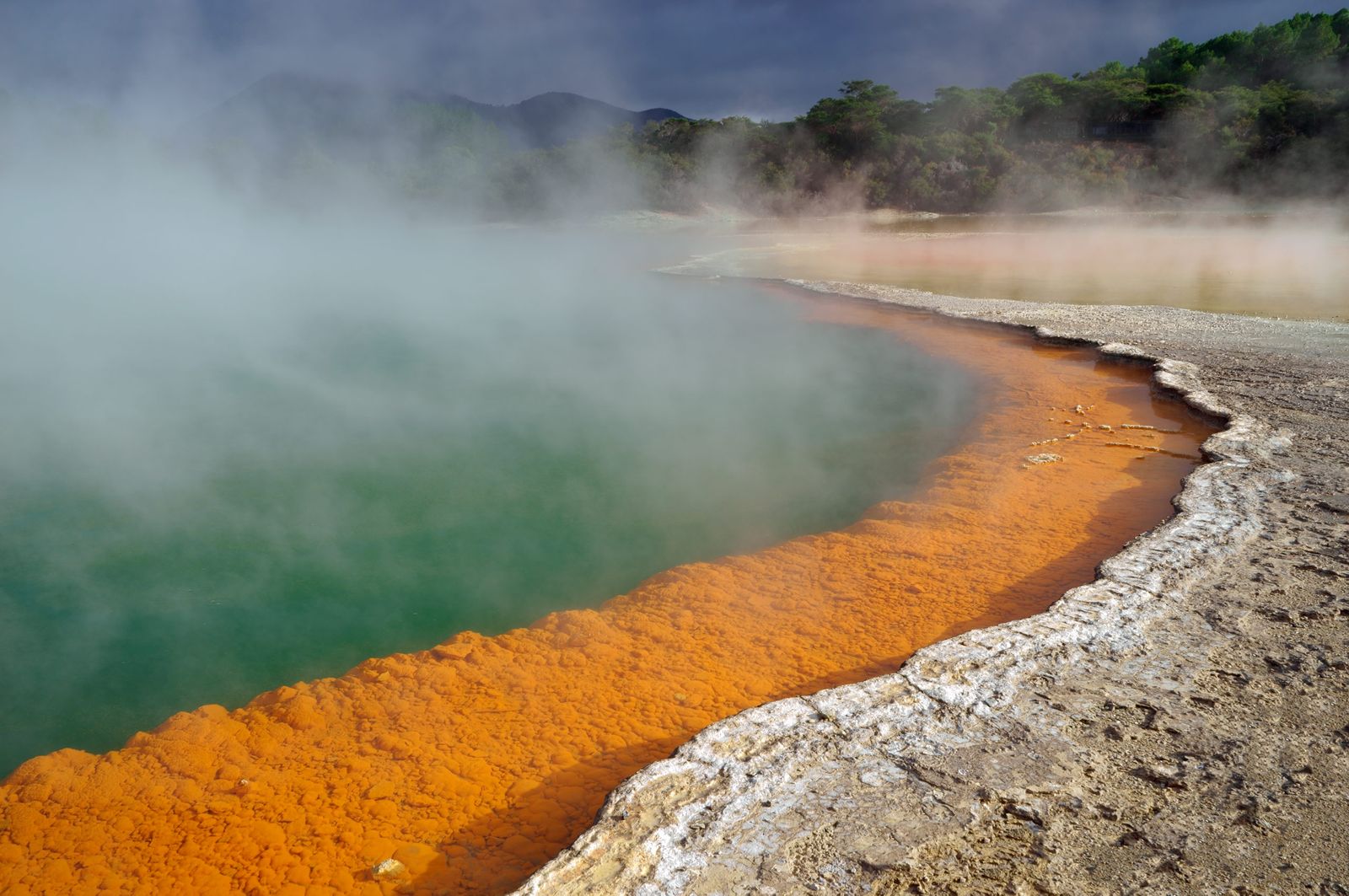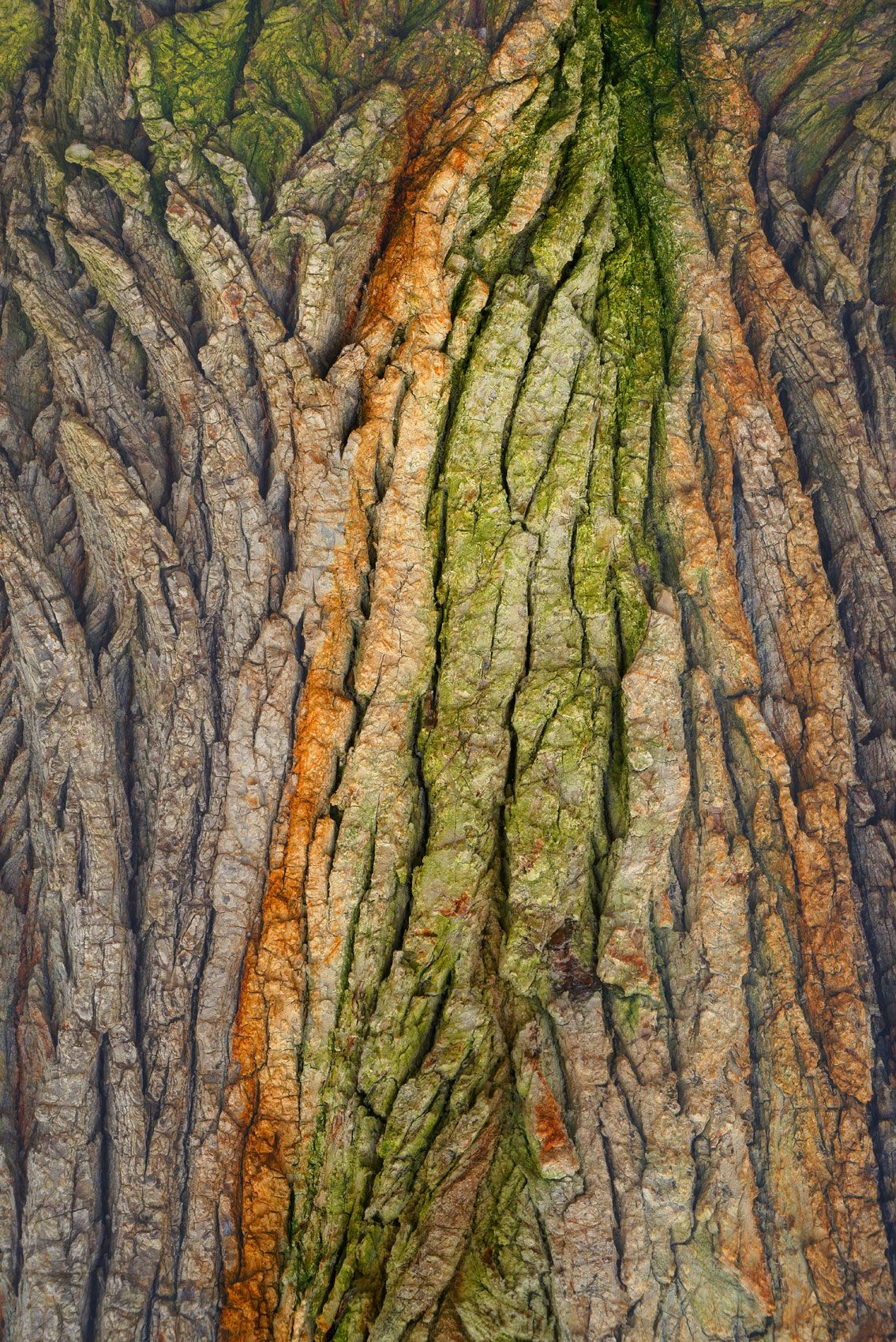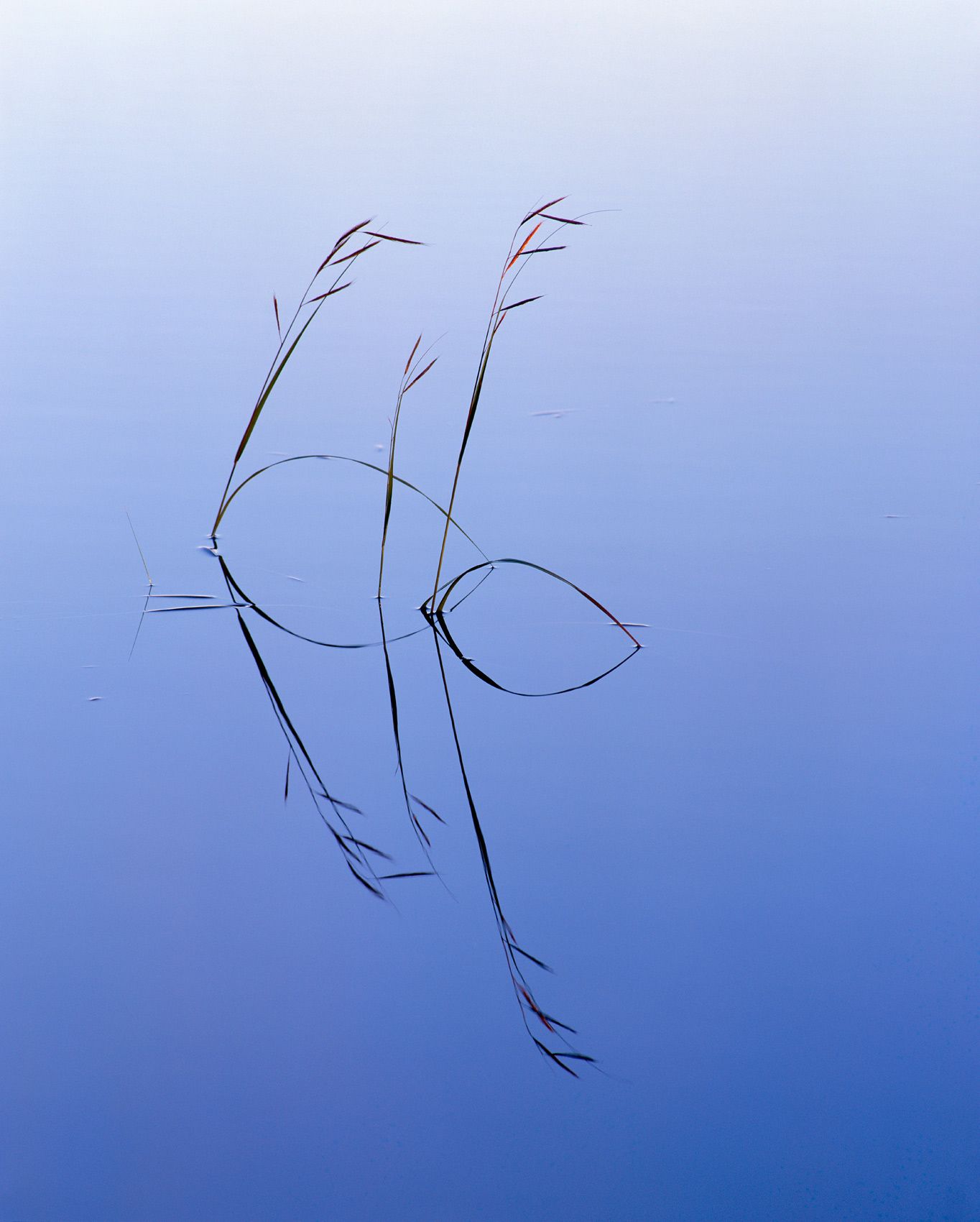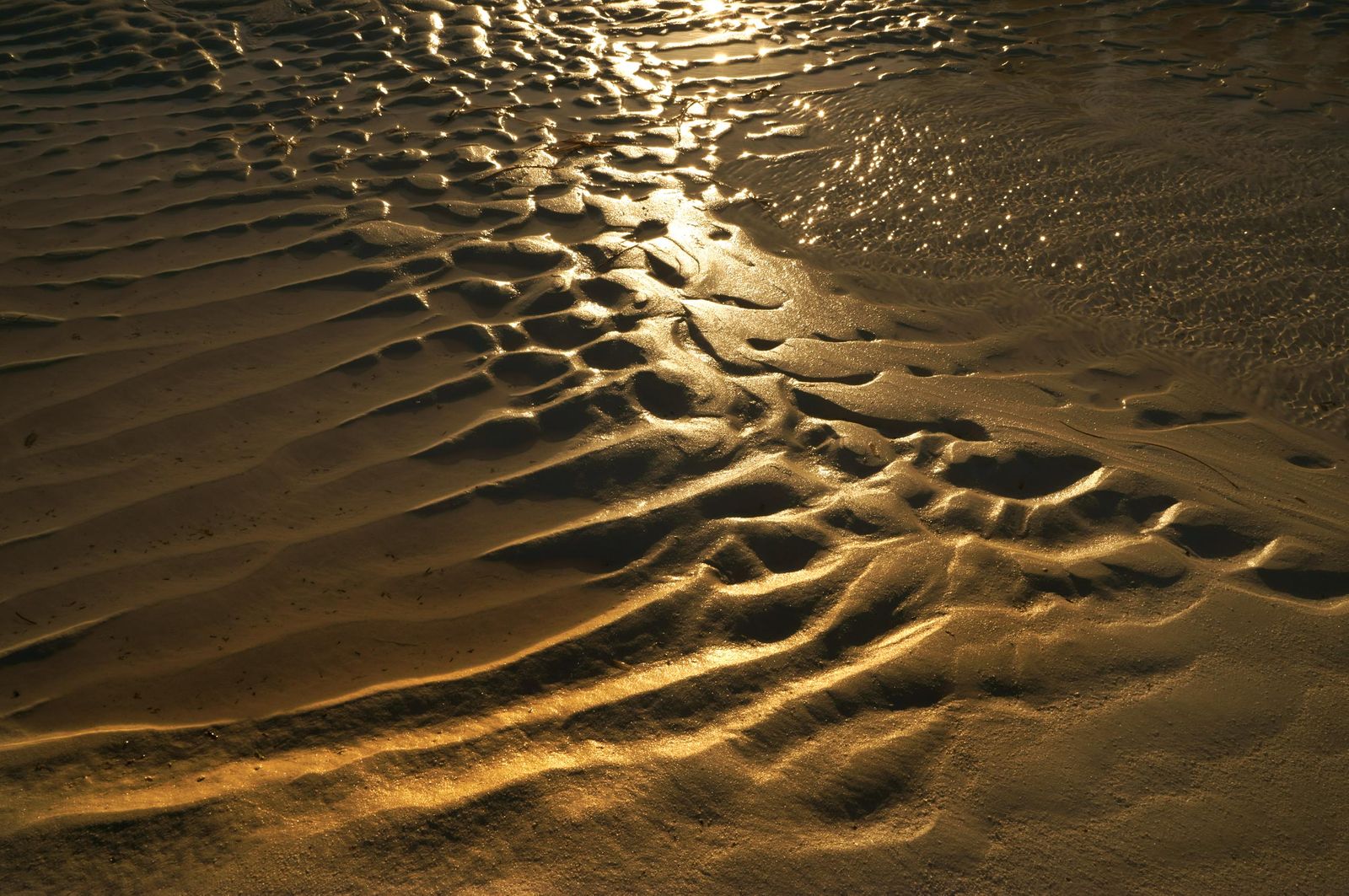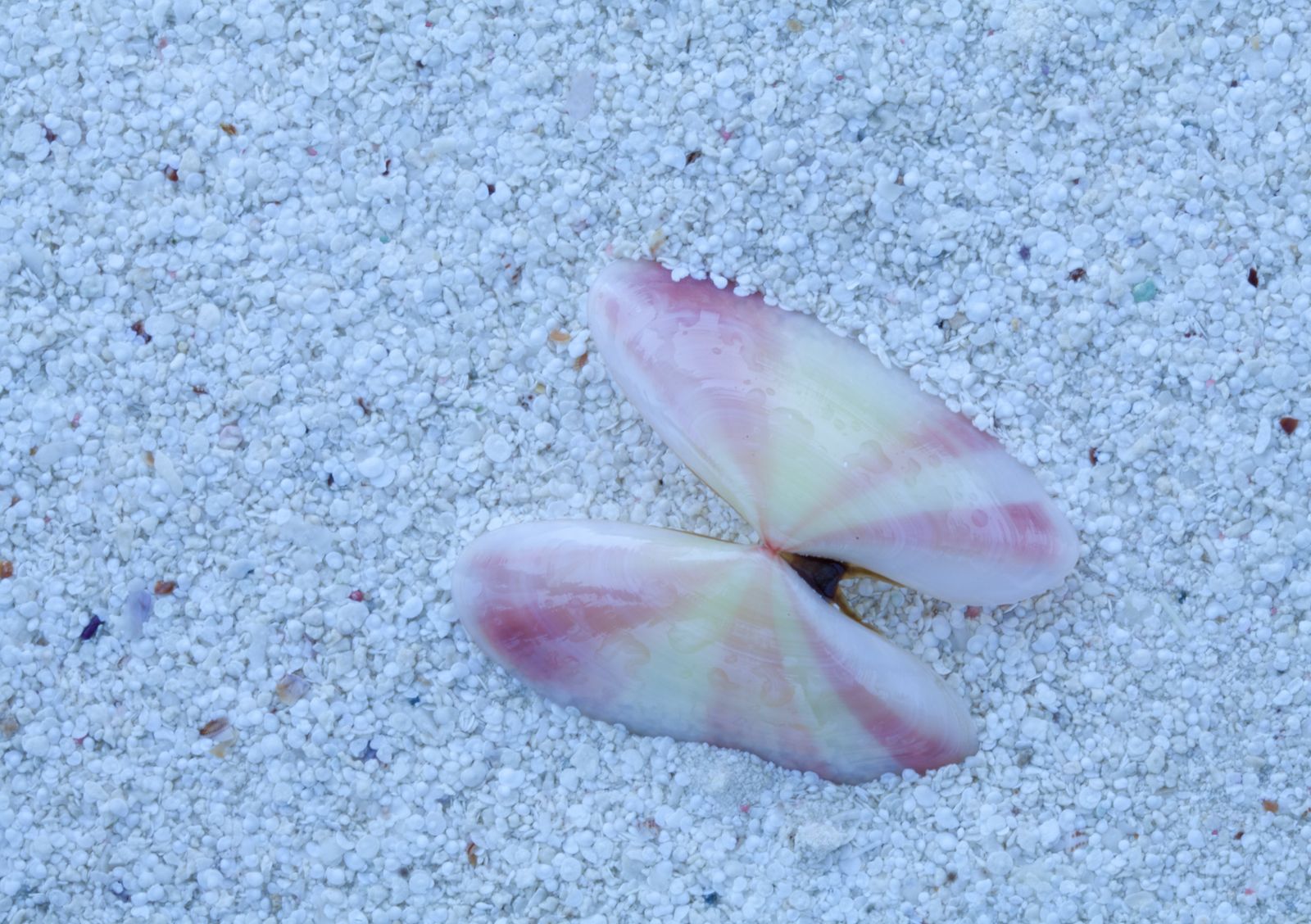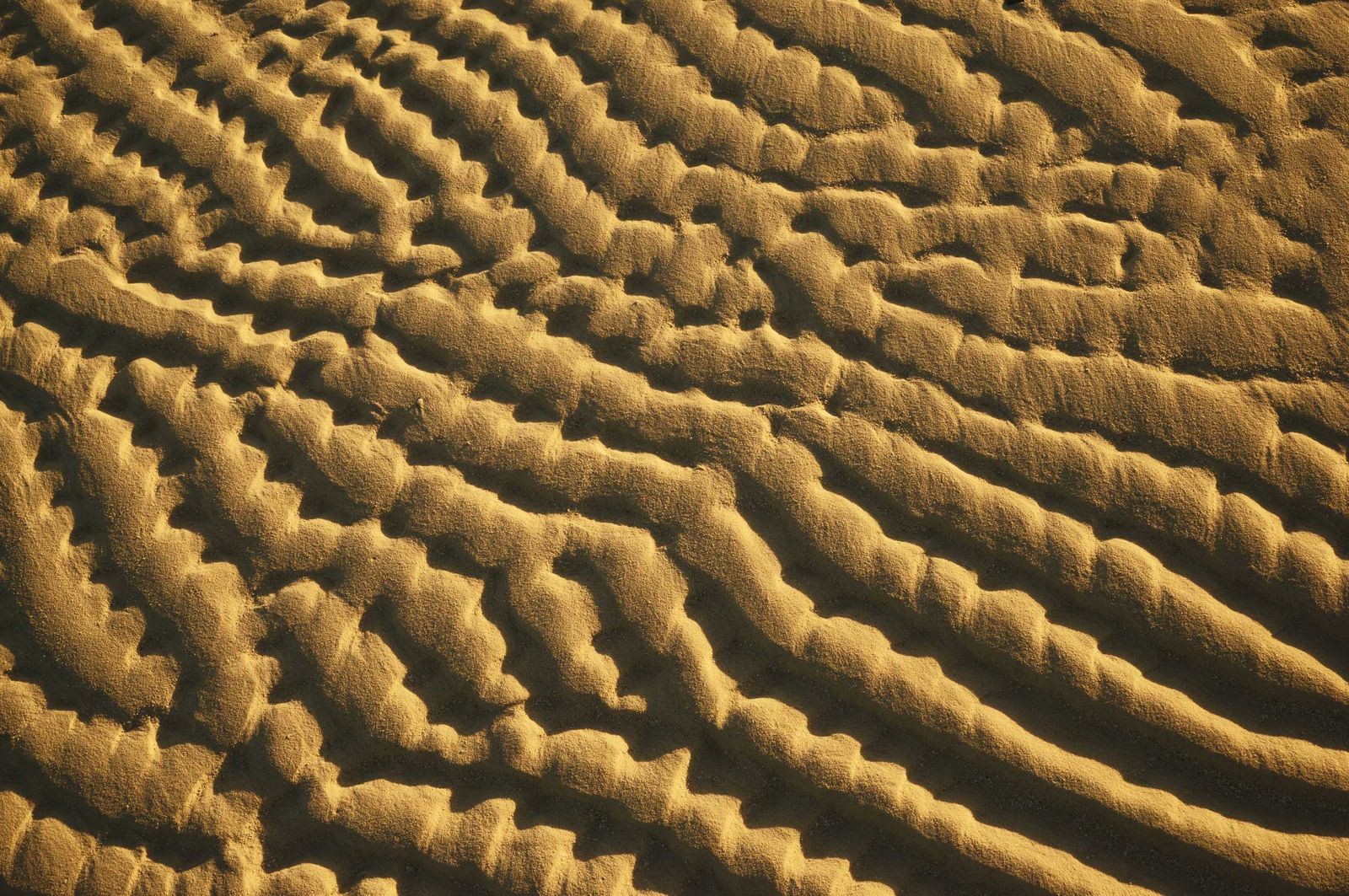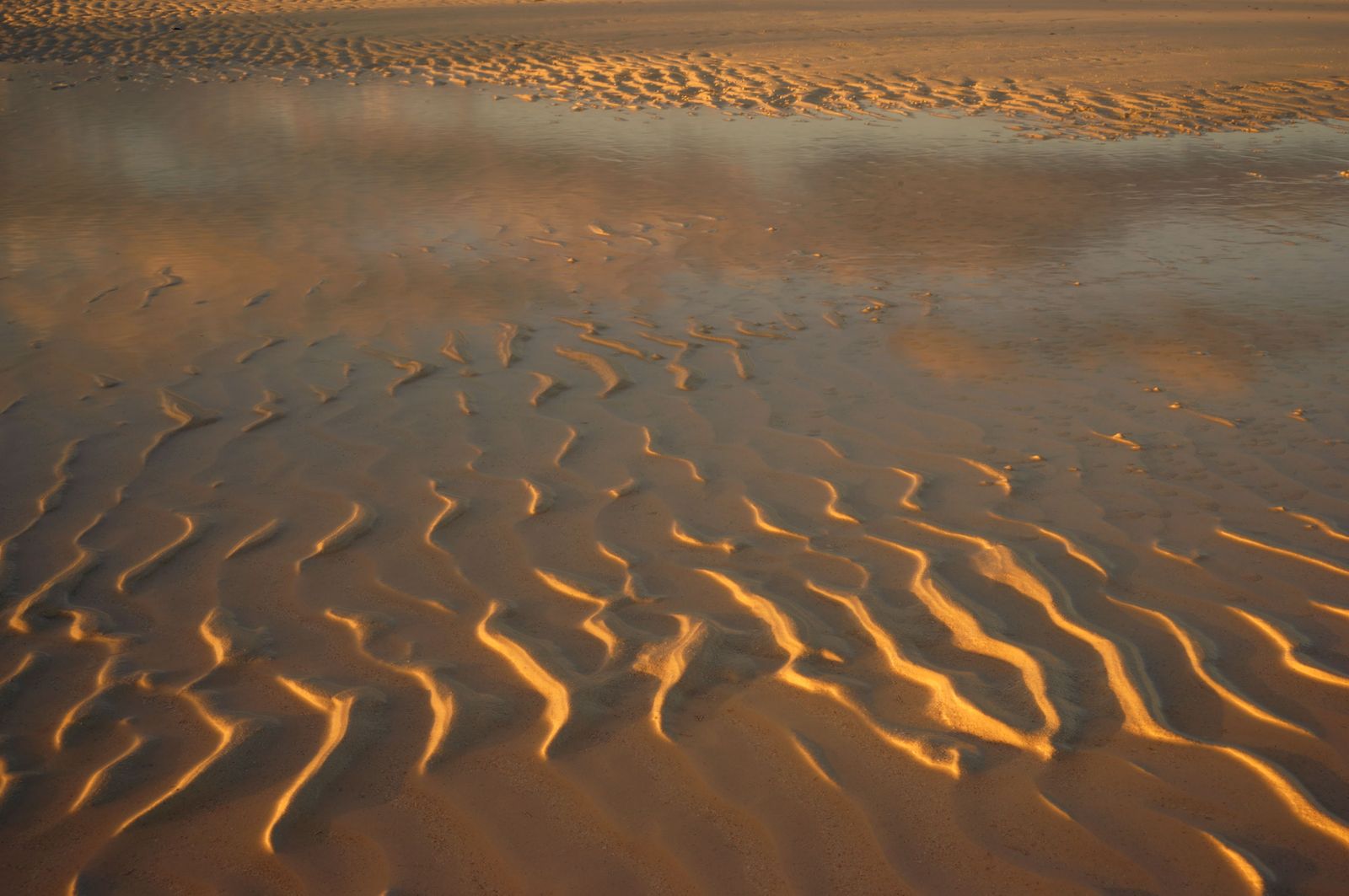BLOG
A collection of technical and inspirational posts by Peter Van Rhijn with reference to his INGREDIENTS.
Close-up Photography Backgrounds
Peter Van Rhijn
If a photographer decides to render a subject like a wildflower sharp and crisp, there is often the issue of a busy distracting background.
I have in the past dealt with this by carrying a spot-light and a white umbrella when I’m in the field. By highlighting the flower, the background could be subdued.
Some photographers seem to deal with this by carrying multiple prints with artificial soft backgrounds which they can place behind the subject while they photograph.
In the digital age there is another option. A photographer may store a collection of soft generic backgrounds in his computer (made by him or herself hopefully) and in the Digital Darkroom, replace the original background with a more pleasing choice.
The above image of the Stenomesson Ecuadorense flower, taken in Ecuador, was made on a dreary day in a dark Canyon near the Cotopaxi Volcano. There was no wind. I used my LED spot to cast some light on the subject.
I got more excited about this flower recently when I discovered it belongs to the Amaryllis family!
So I took an image of a blue Canadian sky with some out-of-focus vegetation at the bottom (a Weeping Willow) and inserted my Ecuadorian Amaryllis into this image. The light on the flower was fortunate as it looks like the flower was sun-lit. Orange and blue make great complementary colours.
Ingredients: Simplicity, Great complementary colours.
Selective Focus Photography
Peter Van Rhijn
Those of you who know me may think I’m a level-headed, no nonsense, analytical person. My favourite subject “The Ingredients” might lead you to believe so. But there’s another side of me: the side that loves images that are mostly out of focus. To describe the art of Selective Focus Flower Photography (an endangered species) I need to use flowery language. Flowery hyperboles. Hang on, here we go.
Selective focus photography can take the viewer to an enchanting macro dimension, which is hidden from the naked eye. In this dimension, an intimate and sensuous simplicity of nature is revealed, giving these images powerful emotional impact.
Selective focus can be particularly effective in showing the fleeting nature of wildflowers, as their ephemeral blooms are often a key aspect of their allure.
These images (like this one of Spring Beauties) are created by using a long, large-aperture macro lens, and moving in closely on the subject. The presence of similar flowers in a blurred background adds the strong ingredient of colour harmony. Ingredients: Extreme simplicity, The unusual, Emotional impact, Colour harmony.
Wood Duck (Aix Sponsa)
Peter Van Rhijn
This is an image of a Wood Duck (the drake), photographed by Mississauga photographer Susan Robertson.
The duck is captured mid-flight as it tries to get on the rock on the right. This image is quite unusual and the spectacular colours of this iconic bird give it great impact. There is a nice diagonal line in the composition as the eye follows the bird to the rock.
To achieve the sharpness, the settings were as follows: exposure 1/10000th (!) of a second. ISO was 4000, aperture was f5.6. Due to these extreme settings, there was significant digital noise in the original image. In the digital darkroom, state-of-the-art processing was therefore applied with Topaz DeNoise AI and the result proves that today the extreme settings Susan used here can still yield great results.
Ingredients: Simplicity, dynamic diagonal Composition, a Great nature Story, the Unusual and High Impact.
Thank you, Susan, for sharing this great image with us.
Swallowtail butterfly on Tithonia flower
Peter Van Rhijn
I am proud to present this image of a Swallowtail butterfly on a Tithonia flower, by Canadian photographer Patricia Griesser.
The most obvious Ingredient of this image is its nature story. But another is the combination of red and green which, in this image, makes for two types of colour harmony: the colour of the flower is repeated in the spots on the butterfly’s wings but red and green also happen to be complementary colours. These are colours situated opposite to each other on the colour wheel and they make for very pleasing images.
In terms of composition: one ingredient is the way the butterfly and flower are nicely balanced in the image space, but the most obvious Ingredient in that category is the delicious simplicity of the image. Simplicity is the cornerstone-ingredient of composition or ‘Visual Order’.
So, in one image we have six ingredients: a Nature Story, two types of Colour Harmony, Balance, Simplicity, and Visual Impact. That’s about as good as it gets. Thanks for your great contribution, Patricia.
Family Island - Example of an Optimizing Edit
Peter Van Rhijn
Editing to optimize the ingredients:
First: I try to do my edits soon after I have taken the photograph. Ansel Adams said: “A great photograph is one that fully expresses what one feels, in the deepest sense, about what is being photographed.” It would be hard to remember how you felt if you took 500 exposures in a week and waited 6 months to edit them.
Starting with the Raw image: if the overall exposure is problematic, I adjust that in ‘Brightness.’
Still in Camera Raw, I check the highlights and use the recovery slider to bring back some detail if there is over-exposure. Then I look at the dark areas and, if necessary, I try to get some detail in them
Next, I open the RAW image as a Tiff file, Adobe 1998 and 8 bit. First, I dust any sensor-dirt spots. If necessary, I straighten the horizon.
Then I fine tune the following: saturation, contrast, lighting on parts of the image which need brightening. I check balance of luminosity (tonal balance) left to right and top to bottom.
I remove obvious distractions which significantly affect Simplicity, the key Visual Order Ingredient.
Then I ask myself: does the image look like what I remember seeing and feeling? Then I ask myself about the ‘Ingredients’ in the image. In the image of this post, Tonal Balance from left to right is crucially important. The early morning light is also important.
Based on those two questions I may make final adjustments. (This included some minor cropping.) If I’m happy, I save it in an external hard drive folder “Family Island -final edits”. I also save the Raw file.
Once I decide to use the image for a show, for competition or for a website, I duplicate the original edit and work on the duplicate. Close the original edit.
Further steps are done to optimize for that type of use. The image is sized, compressed, (JPG) resolution adjusted, colour space probably changed to sRGB, and sharpened. Sharpening is always last.
Ingredients: Simplicity, Tonal Balance, The Unusual, Interesting Lighting and Colour harmony.
Legacy Spruce Trees
Peter Van Rhijn
This image is a good example of three important points.
- Try to remember the subject you were seeing and photographing, and how it made you feel. If you spotted a key ingredient in the subject which is not clearly visible in your image, you might be able to bring out that ingredient in your edit.
- Camera Raw images often look bland and flat and may not capture at all what we think the image should look like.
- Never throw out your Camera Raw images because the software is constantly improving. In 2009 Photoshop would not have been capable of processing this image properly. The more recent refinement of the ‘rapid edge selection tool’ made all the difference.
The top image is showing the original unedited Camera Raw image. This image was made with a Canon 1Ds about 13 years ago and for several years I convinced myself that the beautiful light on the trees that I saw was there only in my imagination. It was taken on an assignment, and I did not submit it to the company that hired me because I was sure it was a reject.
Very recently I had another good look at this Raw picture, and I tried some newly learned approaches. I played with the contrast and the saturation of the light hitting the trees. I then realized that Camera Raw was unable to properly render subtle colors like reddish evening light. Once I increased the saturation on the upper line of trees and reduced the brightness of the sky, the image, as I had seen it, showed up and did not disappoint. I am very glad the memory of that missing “Interesting Light Ingredient” stuck with me for 12 years!
Ingredients: Interesting lighting, Simplicity, Rule of thirds, Clear direction for the eye, Emotional Impact.
Desert Elephant - Example of an Optimizing Edit
Peter Van Rhijn
The main ingredient here is the Nature Story of the dining elephant. In the optimizing edit, the story was strengthened by zooming in tight on the feeding and the actual food the elephant consumes which is clearly a very prickly meal.
But there is another ingredient here which is Composition. The tusks of the elephant as well as its trunk and even its tongue create lines which lead the attention to the action in the left lower strong point where the mouth is located.
The more ingredients an image possesses the stronger it likely is. It will help your images if you spot the potential ingredients and manage to emphasize them in the edit.
Etosha Giraffe
Peter Van Rhijn
This handsome chap stood right along the side of the road.
The original image has the giraffe very central in the image. To improve the overall composition, I went to work in Photoshop and moved him slightly more to the left where he looked a lot happier. The grass near the bottom of the original image is very bright which seemed to draw the attention to the bottom of the image, so I darkened the grass slightly.
We now had an image with four strong ingredients: nice Composition, nice balance of brightness (Tonal Balance) nice Colour Harmony, (orange and blue) and a nice Nature Story of a feeding giraffe.
Camera: ILCE-7RM2, lens: FE 100-400mm F4.5-5.6 GM OSS. ISO 1000, f-9, 1/3200 sec.
Blood Moon in Georgian Bay
Peter Van Rhijn
This image of the blood moon and white pine tree in Georgian Bay was taken in the late 70s, as well as in January 2019. The original was a double exposure on Kodachrome 25 of the tree first and, a couple of hours later, the moon.
In January 2019, we had this gorgeous blood moon on a super cold night. I think it was -20 C. Because the moon turned out really well, I replaced the moon in the scan of the old slide with the blood moon.
However, in the blood moon image, stars were clearly visible. That was a problem. So I added stars separately to the original late 70s image. The digital age is magical.
My Pet Dinosaur
Peter Van Rhijn
Yesterday, as I was writing posts for this blog, my friend here pecked on the window. We live in Etobicoke close to the Humber river.
I don’t have any illusions that he was looking for me. He was checking out his rival in the window’s reflection.
He has been a regular visitor for a couple of years. We think he met a lady last year because we heard them calling each other. Earlier this year we met the fruits of their labour, three juveniles, but we have yet to meet his lady.
My daughter knows him as well through her work at the Toronto Wildlife Centre. She works the phones and she gets calls from our neighbours worried that there is a turkey stuck on their roof. My daughter replies: ”Ah, that’s my dad’s turkey. He’s fine.” My friend actually flies quite well and spends the nights in trees. Coyotes have a taste for turkey too!
He is very camera shy and I need to open the window before his arrival because he is easily spooked. I set the camera at Focal length 400 mm, f6.3, ISO at 250. I can support the camera. I only try this on cloudy days to keep the contrast low.
This crop shows him off nicely with a nice S-curve leading to his colourful head.
Bloodroot
Peter Van Rhijn
This is an image of bloodroot, one of the earliest blooming wildflowers in Ontario.
This image probably dates from the year 1995, so from late analog (film) age. Taken with Mamiya RZ 67 Pro on Fujichrome medium format. (However this was by no means my first bloodroot image as I was shooting bloodroot in the late seventies with my 35mm Canon system.)
Who influenced me? Mostly Mary Ferguson’s book Canadian Wildflowers and her wildflower calendars. But my main motivation was always the production of my next AV show, a job which took on average 5 years because it was done in my spare time. To my knowledge the show for which I took this image was the first 6x7 format nature AV show produced in North America. That was enough incentive to try and do it well.
I used a halogen spotlight in combination with a reflector for this image. This is a drum scan of the original slide which has increased the contrast somewhat.
The main ingredients are simplicity, interesting lighting, and clear visual order: a clear path for the eye to follow through the picture space.
Frog in Cyanobacteria
Peter Van Rhijn
Frog In Cyanobacteria.
This image is a stronger nature story and is also more appealing than the Ladybug image below.
It seems rather obvious that the green American Bullfrog is quite comfortable, enjoying great camouflage in the cyanobacteria slime in Georgian Bay. He appears to be lying in ambush, ready to strike if an insect gets caught in the slimy substance.
This is a strong nature story and a simple and effective composition.
A Hidden Story
Peter Van Rhijn
A hidden story.
Images can tell a strong nature story and this can be a powerful Ingredient.
The images that tell a nature story without requiring an explanation are probably best but they can also be rather gruesome.
The poor ladybug in this image seems to be the center of unwanted attention by the cyanobacteria. Is this ladybug the victim of microcystin poisoning? Has this cyanobacteria strain turned carnivorous?
Nature stories like this one, with stories that are cryptic, are not as strong in appeal. Most viewers prefer to know what’s going on even though in many cases it is a less flattering picture of Mother Nature.
"Fallen"
Peter Van Rhijn
This image was made in Hanalei Bay, Hawaii.
At first, I was quite taken with this image. I actually printed it. Sadly, it was recently relegated to the recycling bin.
We all have a natural tendency to fall in love with our images. To grow artistically/critically, we need to remember that sometimes love is blind. Infatuation can be very blind. It can block your artistic progress.
What opened my eyes?
First: although this image seems to have nice visual order, it lacks the key ingredient for visual order: simplicity. There are two subjects that compete for our attention: the yellow flowers and the two orange flowers.
Second: none of the colours are happy together. To check one by one: the complementary colour of green is red, the complementary colour of orange is blue and the complementary colour of yellow is violet. No colour harmony ingredient is present here. So the only Ingredient in this image is that it’s a bit unusual. ‘A bit’ is not enough in the absence of all other ingredients.
Pete's Peat
Peter Van Rhijn
My interest in photography grew from small beginnings.
It started with wild orchids and I spent a few years searching for Ontario’s most photogenic species. Then I moved to lichen. Because orchids and lichen often hang out in peat, peat was next. So here’s a pic from the years of Pete's peat passion.
I have moved on since then, but even today, hiking past a patch of peat with some brilliant Hygrophorus Miniatus mushrooms, I have to check it out… Invariably my darling rolls her eyes: “Come on Petey! Let's move!”
This was my first image that showed simplicity and balance of two subjects. I was just starting to figure things out.
Camera: Canon Ftb, 50 mm macro. Kodachrome 64. Settings unrecorded. Imacon/Hasselblad virtual drum scanner.
African Elephant
Peter Van Rhijn
Ansel Adams challenged us to express in our images how we truly feel, “in the deepest sense” about the subject being photographed.
Our image of an elephant might end up suggesting that he/she impresses us as GINORMOUS and that we feel pretty tiny.
That’s how I felt I should edit this image. The tight crop and the position within the frame says: I’m bigger than you…and you better not get me annoyed with you buddy…
I cropped the elephant high in the frame and increased the brightness of the body by about 1.5 stops. The position of the elephant was higher than from where I took the shot, resulting in a silhouette against the blue sky.
Sony ILCE-7RM2, 1/400th sec, ISO 800, Lens: FE 100-400mm F4.5-5.6 GM OSS at 100 mm, f20. Handheld.
Beach Still Life
Peter Van Rhijn
The rough story behind this still life was the storm that abused the beach the day before. And clearly not just the beach, but the ocean floor as well.
For me this was a bonanza. The wind had produced an abundance of sand patterns and plenty of washed-up marine life to be inspired by.
I am preparing a new talk on Macro Photography. This image was made with a Mamiya RZ 67 camera. With this camera the focusing mechanism is done with a bellows, which is part of the camera body. The lens design is simplified: none of my lenses needed the built-in focusing function. And all my lenses could be used as macro lenses!
This image was also treated with a Topaz creative digital filter. Topaz Labs Glow2, the preset ‘Wonderland’ was dialed in at roughly 10 %.
Peat Passion
Peter Van Rhijn
My plan for today’s post called for some spring flowers.
But I’m not in the mood for flowers. It’s too wet, dark and cold out there.
This is a picture from a few years back. I was very much a beginner and yet, something in this peat bog scene had been talking to me. At the time I did not know what it was. It’s clear to me now that it was the simplicity, the dark peaty pattern and last year’s frond of fern brightly off-set against it. Easy on the eye.
Settings unrecorded. Canon Ftb, K64. 50mm Macro.
Wombat Mother and Baby
Peter Van Rhijn
(Vombatidae)
Maria Island, Tasmania, Australia.
To be precise: Maria Island National Park. No access by car, pedestrians only. Famous rocks and lots of gum trees. And last but not least: the common wombat. There are also some not-so-common wombat-types in OZ but these are only in some very small areas on the main land. And in zoos. These two were wild.
Wombats are marsupials, and related to the Koala. They dig holes to hide and to eat tree roots. They also eat grass. They have, built into their posterior, a very hard cartilage shield which they use to block a tunnel and avoid becoming dinner for predators.
Their claim to fame is their poop. Their poop is square. Why? Your guess is as good as mine.
Sony ILCE-@7RM2, ISO 100 1/200thsec, Lens: FE 24-70mm F4 ZA OSS at f9.
Spring Beauties
Peter Van Rhijn
A well-known spring favourite in Ontario’s woods.
This flower should be blooming in a couple of weeks. It has to wait its turn. Skunk cabbage first, then coltsfoot, then bloodroot, then hepatica, then trout lilies, then spring beauties, next the cherry blossoms at High Park.
This image shows what I call the ‘dress-up technique.’ In reality I would never attempt to actually create such a composition. They need to be found as they are or they look unnatural. The thing to take away from this is: look at nature through the lens, and once in a decade you’ll run into something like this. All you need to do is recognize its potential and don’t mess with it. Photoshop had nothing to do with this image.
Ingredients: simplicity, good direction for the eye. The flower is close to the right upper strong point. Close but not quite. As a result this composition has some tension. Relax: there’s nothing wrong with a little bit of tension.
Settings unrecorded.
Nature's Fractal Design
Peter Van Rhijn
Although we are part of nature, mankind did not figure out Mother Nature’s mathematics until the last few decades. In nature there are few straight lines, few right angles and few even numbers.
Nature is very comfortable with the use of fractals. This image shows the fractal nature of clouds above the fractal nature of sand dunes. Humans have not understood fractals until about two human generations ago but we have always appreciated their beauty and design because fractal design has forever surrounded us everywhere we look, on earth and in the universe.
What are the ingredients in this image, besides the obvious complementary colours: blue and orange? May be it’s the soothing familiarity with nature’s design and its simplicity. It’s also why we enjoy the fractal nature of mountains and the ocean’s surf. It’s embedded in our double helix: our genes.
Sony ILCE-@7R M2 ISO 125, 1/50thsec, f 22. Lens: FE 24-70mm F4 ZA OSS
Cape Starling
Peter Van Rhijn
The e-coli count of the water in the Etosha waterhole must have been off the scale. A herd of elephants played in the water and seemed to delight in using it as their toilet.
This Cape Starling seemed to be the brightest spark around. The Etosha settlement has some green lawns which need watering frequently.
Ingredient in this image: clearly the nature story of a Corvid’s intelligence.
Sony @7R M2, ISO 1000, 1/1250 sec, Lens: FE 100-400mm F4.5-5.6 GM OSS, at f8, at 400 mm
An Acacia Forest
Peter Van Rhijn
An Acacia forest, Wolwedans, Namibia.
This image was made in October in Namibia. Wolwedans is the name of the resort; this name is originally Afrikaans.
There were not too many wolves there. Jackals and big cats, yes. Also giraffes, zebra, various antelope types, elephants, in short: the usual African suspects.
The Namib Desert features ancient dune landscapes. Because they’re ancient, the iron in the sand has oxidized and the dunes are a vibrant orange/red colour. Close to the ocean, they tend to be regular sand-colour because the dunes there are much younger.
Wolwedans is located in a more transitional landscape where mountains and red dunes are mixed and the result is pure magic.
Gemsbok Group
Peter Van Rhijn
A few gemsbok (Oryx) up close, in Wolwedans Namibia.
An attempt was made here to achieve a nicely balanced composition of the group of gemsbok with the background mountains. Editing consisted of simply dusting, exposure adjustment etc.
An Unbehaved Elephant
Peter Van Rhijn
This Christmas, our family played a trivia game. “Which mammal cannot jump?” was one question.
The answer: the elephant.
At a workshop last week, I demonstrated that even an elephant can be convinced to jump. It takes a bit of Photoshop magic and I rarely do anything this daft in public. But this Elephant was walking out of my picture. A well-mannered elephant is supposed to walk into the picture!
Never mention this to a naturalist because they don’t approve of Photoshop’s hanky-panky. They feel that things are the way they are because they were the way they were. And they have a good point.
I made a copy of the original and turned the entire copy 180 degrees. In the copy the elephant now faced left. I made a selection of the left facing elephant which included some surrounding bushes. Then I moved the better behaved elephant back into the original image, covering his original self. The merger line was virtually invisible. Photoshop is hard to learn, but it can be a lot of fun.
PS - this picture is the original with the "unbehaved" elephant! See above for the "behaved" version.
Namibia Dunes
Peter Van Rhijn
The dunes at Sossusvlei were our main destination in Namibia.
They did not disappoint. Photography is all about directing the “eye” (the attention) of the viewer. The eye has no trouble getting around in the heavy sand of the dunes. Just show it the way. Clearly and simply.
Ingredients in this image: simplicity, lines, tonal balance, impact, and special (early morning) lighting.
In post-production editing, special attention was given to optimizing the tonal balance between the areas in front of and behind the dunes.
Sony ILCE-7RM2, 1/200thsec, ISO 125, Lens: FE 100-400mm F4.5-5.6 GM OSS at f16, Tripod.
Namibia by Hot Air Balloon
Peter Van Rhijn
A bit north-west from Wolwedans is the town of Sesriem. This is the gateway to the famous red dunes in the Sossusvlei area of the Namib Naukluft Park.
From Sesriem one can book hot air balloon rides near the eastern edge of the red dunes. A balloon ride over the dunes themselves, while no doubt spectacular, would be problematic because the ground crew would have no access to pick up the balloon if it landed inside the dunes. So we’re told.
The journey starts shortly after sunrise and we float over spectacular mountain ridges similar to the Wolwedans area, with a ridge of red dunes visible to the west.
We were celebrating our 21st wedding anniversary. Mother Nature fully cooperated to make this a most memorable event. This pic shows what we were treated to.
Sony ILCE -7R-M2, 1/1600 sec, ISO 400, Lens: Zeiss FE 24-70mm F4 ZA OSS at f7.1. Handheld.
Agama Agama Lizard
Peter Van Rhijn
This is a Red-headed Rock Agama (Agama Agama) Lizard, a common African Lizard, found frequently in resorts around buildings. Its diet consists mainly of insects.
This specimen measured around 8 inches. This image was captured on the red rocks of Mowani Lodge, Namibia, as we walked from our cabin to the dining room.
You may appreciate its incredible colours. The orange and blue present great colour harmony even blending in with its red-rock environment. Mother Nature, here busy teaching a pop-up course in colour-theory.
Ingredients: simplicity, good direction for the eye, great colour harmony, the unusual, impact.
Sony ILCE-7RM2, ISO 640, 1/640th sec. Lens: FE 100-400mm F4.5-5.6 GM OSS at f18, 400 mm.
Wild Pacific Trail
Peter Van Rhijn
Ucluelet, Vancouver Island, BC.
The processed Raw image in this case showed a white featureless sky. The image suffered from tonal imbalance: white on top, dark at the bottom. I had all but written it off as a reject.
Then I tried the rapid edge selection tool on the tree. It seemed to work. Keep in mind: the tree was very sharp. There was actually very little wind… I inverted the selection (now the sky was selected) and reduced the exposure. This was done on a 240MB, 16 bit file, nearly 8000 pixels wide. To my surprise the image now showed a heavily clouded sky with great cloud detail. It really looked like seriously stormy weather, totally matching the expectation suggested by the shape of the tree.
When I zoomed in on the image I became more aware that the selection tool had missed some tiny spots in the middle of the tree. These remained bright like the original sky. I spent a bit of time touching these up since they might become visible in a large print. In web versions of the image it was impossible to see.
I finished the edit by brightening the green channel in the adjustment layer panel and then processed the image in Topaz giving it a foggy-rainy look. Before that the image was of course reduced to 8 bit. Wild weather on the Wild Pacific trail became a reality.
Remember what Uncle Ansel said: “Photographs are made. Not taken.”
Loxodonta Africana
PeterVan Rhijn
At Mowani Mountain Camp in Namibia we met our first elephants.
These are Desert-Adapted African elephants. They are a bit smaller than your average African elephant (but big enough!) and they have longer legs and flat feet. That gives them more traction in the sand.
This was a family with a baby and the baby desperately wanted to come with us. Sadly we had no room for her. But for now, her mama has the front page of my web site. Gone are the days I proclaimed: “I don’t shoot anything that moves.”
This image leans on simplicity, balance, impact and the unusual.
ILCE-7RM2 1/800th sec. ISO 800. Lens: FE 100-400mm F4.5-5.6 GM OSS at f-20, 130 mm. Handheld.
The Greater Flamingo
Peter Van Rhijn
(aka Phoenicopterus Roseus)
Huge numbers of these large birds (and also some smaller varieties) were feeding across the road from our hotel in Walvis Bay, West Namibia. They displayed feeding behaviour I had not seen before: they constantly shuffle their feet to stir up whatever they feed on, on the sea floor.
This image is also a neat nature story: the three birds seem to be gossiping about #4 who is preoccupied with catching breakfast.
Although this “nature story” is purely a projection of our human interpretation, it is neat to see how much this can nevertheless help an image. It is a powerful “Ingredient.”
Sossusvlei Dunes
Peter Van Rhijn
The dunes at Sossusvlei are probably Namibia’s best known tourist attraction. They are very old, very high, and very red. I could probably spend a month there and I would not run out of subject matter but more likely end up with a bad case of ‘Dune Mania’. I’m sure the prognosis for that condition is very poor.
So I lasted 5 days and by then the locals were getting very worried about me.
This image is an example of a dune abstract where two similar shapes balance each other nicely.
The ideal time to visit is early in the morning. The temperature is still bearable and tracks from previous visitors are mostly erased. Getting good shots involves climbing dunes. Doing so is not recommended after 10 am. It gets very hot.
Sony ILCE 7RM2, at ISO 125. 1/100 sec. Lens: FE 100-400mm F4.5-5.6 GM OSS at f-22. Tripod.
Springbok and Tree
Peter Van Rhijn
This Namibia image has a subtle composition.
The eye naturally starts reading images at the left. The tree branch at left leads it toward the main tree stem at the bottom from where another dominant branch leads the eye towards top right. The Springbok’s line of sight is in that same direction and its body language suggests that’s where it wants to go. Had the Springbok been facing the camera, the composition would not have been as pleasing.
Sony ILCE-7RM2, ISO 1000, 1/3200th sec. Lens: FE 100-400 f4.5-5.6 GM OSS at f/10 and at 306 mm. Handheld.
Wolwedans Viewpoint
Peter Van Rhijn
Here is another view of the dune landscape near Wolwedans. The ground here is mainly red dune sand. The yellow further back is sparse grass which hides the red colour.
Jason (our guide) told us that this was the favourite spot of the original landowner whose initiative started the formation of the Namib Rand Nature Reserve.
Sony ILCE-7RM2, ISO 80, 1/20 sec. Lens: FE 24-70mm F4 ZA OSS at f-20.
Wolwedans Dune Lodge
Peter Van Rhijn
To take this image I walked forward about twenty meters from the cabin we stayed in.
The composition you see here nicely illustrates that the eye can look at images in different ways. Here the eye has the choice between an S-curve starting left bottom, following the shadow to right middle and following the red dune left towards left upper corner and right again along the distant mountain ridge.
But the eye can also look at it as a simple triangle: follow the shadow shape to the right top dark mountain and turning left towards the mountain at the left top. It doesn’t seem to matter that there are multiple options. The eye really enjoys having choices. Was I aware of all this before I made the exposure? No. Spotting a picture is a reflex. Figuring it out is homework.
Sony ILCE-7RM2, ISO 80, 1/25th sec, Lens: FE 24-70 F4 ZA OSS at f/22. Tripod.
Oryx (or Gemsbok)
Peter Van Rhijn
These handsome antelopes are able to survive the desert heat without drinking.
They have several strategies for staying cool such as hanging out in the shade of trees or at the top of a dune where they catch a little breeze. Their physiology also evolved an extreme frugality with water.
In this pic, from the Wolwedans area, we have an Oryx under a tree. This seems a typical mid-day scene. When we first arrived in this location, the Oryx was right in front of the tree, facing left out of the picture. I told Jason - my guide - I preferred the Oryx to turn around and look into the picture. Jason promptly honked his Safari buggy’s horn and yelled something. The Oryx startled, ran 10 feet to the left, but then turned back. I was ready for him with camera on the tripod. He ended up just where I wanted him and I swear…without Photoshop. Jason speaks English, German, Afrikaans and about 13 Namibian tribal languages. I suspect he speaks a little Oryx as well.
Namibia
Peter Van Rhijn
Somebody once said: “Photography is hours of boredom punctuated by moments of terror.”
Travelling Namibia is a lot like that. Driving for hours through a dry and desolate landscape and suddenly you slam on the brake because an ostrich ambles across the road in front of you. Or a giant African Elephant. Or the road makes a turn and suddenly it feels like you went through a wormhole and you’re on a different planet.
There is scenery here you couldn’t dream up. Especially at Namib Rand Nature Reserve.
Like this pic. The bright-orange lower horizontal strong line (rule of thirds!) splits in the middle and an acacia tree has settled in there. “Jason, stop!” (Jason is my guide). Camera in hand, I hop out of the car. Jason says: “Watch for snakes!” Sidewinders and adders alert.
Photographers arriving at Wolwedans feel like they’ve died and gone to heaven. Without the help of any snake.
Merry Christmas
Peter Van Rhijn
Here is an older pic, made under an umbrella, along the side of the road, just outside Algonquin Park.
Canon 5D, 180mm Macro. My ‘creative’ lens. Used mostly for selective focus images.
As far as lenses are concerned: if you want super selective-focus images (Pictorial category!), the magic words that describe the lens are: long, close, and wide open.
It has a bit of the Christmas spirit. In my recent stuff from Namibia very little was reminiscent of Christmas… hoping for a few a flurries on Christmas Eve.
You may have noticed: the red vegetation seems to come from the right upper strong point.
Yew
Peter Van Rhijn
Large bushes of yew grow wild on North-East Hawk Island off the coast of Phillip Edward Island, Georgian Bay. Do not venture out there in a canoe unless you have a splash cover.
My kayak trips there are memorable for several reasons: first: those rare nature lovers who dislike cockroaches should avoid it, or at least avoid its most obvious camp spots which are infested. Secondly, on a happier note, there are numerous marine fossils here which have washed up on its pebble beaches. This is something one might expect on Green Island which is located another half hour’s paddling into the open water of Georgian Bay and is, like the Bruce Peninsula, geologically sedimentary rock. This is interesting in such close proximity to the Canadian Shield country of Georgian Bay’s east coast, which features rocks, a billion years old, dating back to the formation of the Laurentian Range. No fossils there.
There are two other interesting things. Birds. There is, in the tree tops, a small Blue Heron colony here as well as a seagull colony. Lastly: this island appears to have, in one protected spot, an old campsite where very juicy red currants bushes grow abundantly. No cockroaches there.
Altiplano Sculpture
Peter Van Rhijn
One of our excursions in the Atacama Desert took us to the high plains or the ‘Altiplano’.
On the hike to a viewpoint, we passed an area with these rock formations. Very little rain falls here and the erosion of these rocks is therefore primarily by wind.
It seems that the surface rock is harder than the layer below which is gradually removed by the wind which carries some dust and sand. Picasso said: ‘Art is the elimination of the unnecessary’. Very smart of Mother Nature to figure that out long before Picasso was born…
Clearly the main Ingredient here is ‘The Unusual’. The visual order is that of a diagonal line which starts at the visually most bizarre end of this roughly 4 meter tall hill.
Sony ILCE-7R Mll, ISO 64, f22, 1/50 sec, lens: Zeiss: FE 24-70mm F4 ZA OSS at 24 mm. Tripod.
Sunset on the West Coast
Peter Van Rhijn
Here is another west coast sunset. I set up for this one on some rocks and I had fun shooting until…the bugs found me.
The digital ‘revolution’ has been a seismic event for photographers. Costly film is all but gone. And yet, now there is a hidden cost we incur in the time we choose to spend editing our work. The editing has very much become part of the creative process of photography. The actual shoot is just the beginning of the creative process. The images can be and should be refined and polished in the digital darkroom. That is where we create the image that reflects how we truly felt about the subject.
Liquid gold flows from the sun, down the little channel between the rocks, towards the right bottom of the image. That is the main ‘Ingredient’ and visual design of this image.
In the original Raw image there is virtually no light on the water that flows along the bottom of the image. The realisation that this light was an important ingredient for this image, made me carefully increase the exposure on that area in Post Production.
Sony- ILCE7R Mkll, Lens: FE 24-70mm F4 ZA OSS, ISO 200, f20, 1/400th sec. Tripod.
Long Beach After Sunset
Peter Van Rhijn
This image is more of the red afterglow of sunset. At this time we get this interesting difference between light reflecting from the sky overhead which is cyan and the leftover red light from the sunset.
Again, there is no shortage of lines along the horizontal plane. Also no shortage of tonal balance.
The shutter speed was still 1/100th sec so the surf is still sharp. In later images it will blur.
Being keenly aware of the Ingredients before pressing the shutter and during editing will help the photographer create better images.
Sony ILCE-7RM2 at 1/100 sec, ISO 640.Lens: FE 100-400mm F4.5-5.6 GM OSS at f14.
Long Beach Near Sunset
Peter Van Rhijn
This is a fascinating image. It was special right from the start or I would not have taken it. But why? Everything is ‘figure-out-able’, so here we go.
After looking at it for some time, I realized what the special quality is and I have edited it accordingly: strengthening this unusual ingredient.
The distant mountain and the two close rocks have similar slopes on the right edge. These slopes create implied diagonal lines. The image looks best if these three implied lines are nicely aligned and balanced.
To make this happen the image needed slight stretching and slight cropping on the left and bottom.
Sony ILCE-7R M2 ISO 200, 1/80 sec. Lens: FE 100-400mm F4.5-5.6 GM OSS at f20 Tripod.
Valley of the Moon, Atacama Desert
Peter Van Rhijn
The Atacama Desert has been receiving plenty of media attention in the last few years. Located in northern Chile, it is the highest and driest desert in the world. There are many state-of-the-art telescopes here, with bigger and better ones planned for the future.
The Valley of the Moon owes its name to the fact that it appears to be totally lifeless and its beauty is truly “Out of this World”. Earlier this year I did three excursions in this area, to get some images that did it justice. Some areas in the Atacama have not received a single drop of rain for hundreds of year.
Ingredients: ‘The Unusual’ (great subject interest), Interesting light with great texture.
Sony ILCE-7RM2, ISO 125, 100th sec, Lens: FE 24-70mm F4 ZA OSS. f13, Tripod.
Tofino Sunset
Peter Van Rhijn
I don’t get very excited by sunset pictures. The obvious problem: we are inundated with sunset pictures.
But my Tofino trip changed that. Tofino sunsets can be spectacular. Especially at very low tide. This image was made around summer solstice when days and sunsets last ‘forever’. The area is a photographer’s dream: gorgeous coastal scenery, marine life, inter-tidal life, rainforests, foggy days, etc.
Ingredients: Clear Lines for the eye, Tonal (brightness) Balance, The Unusual, Tension.
The strong lines in this image, as well as the balance of brightness between left top and right bottom, may be the main reason for its appeal.
The brightest area in the original image, in the left top, strongly attracts the eye. The general lines in the image do not support that the eye should move in that direction. To soften this conflict (tension) in Post-Production, the difference in brightness between the left top and right bottom of the image was reduced significantly.
A graduated neutral density filter could have achieved the same effect.
Understanding how "The Ingredients" affects the success of your images will assist you in choosing the most effective post-production edits to strengthen the ingredients.
Sony ILCE-7RM2, Lens: FE 100-400mm F4.5-5.6 GM OSS, ISO 125, f-22, 1/30 sec., tripod.
Steller's Sea Lions (Eumetopias jubatas)
Peter Van Rhijn
Ucluelet, British Columbia.
Here’s a typical Steller’s Sea Lion rookery during the mating season. The dominant male is in the dominant position and a younger/smaller male is challenging his authority. The big bully is punished for this selfish behaviour by having to fast. In this society males can’t have both sex and food. They must choose.
The dominant males can weigh well over 2000 lbs.
On this trip, marine biologist and radiologist David Clow was my buddy and guide and I thank him and my daughter Vanessa for convincing me to shoot things that move. (in this case WE did most of the moving!) Movement makes things complicated. But with the CMOS sensors and fast shutter speeds and a rapid-burst camera setting luck may be on your side. I took 450 images of sea lions and seals. I have maybe four useful images to show for.
The Ingredient for success in this image is quite obviously the nature story and how testosterone can produce the ultimate bully.
Horsetails and Huckleberry
Peter Van Rhijn
This composition caught my eye along a trail near Tofino. Reviewing it at the end of the day, I had trouble explaining why this appealed to me as much as it did. The next day I took a picture of plain horsetails. A pattern shot. It was boring. So the huckleberry (also known as Vaccinium Ovatum) was critical to the success of the image.
Here’s what I think happens: the eye simply moves up and down in this composition. That’s Visual Order #1. Visual Order #2 is Simplicity. A further Ingredient that helps this image is “Happy Colours”. Red and green are “happy” complementary colours. (Colour wheel theory.)
Pablo Picasso said: “Art is the elimination of the unnecessary”. I would agree. But, as I just argued, art is also the accumulation of several helpful Ingredients. (Picasso leaned heavily on “The Unusual” as an ingredient.)
Knowing precisely what the Ingredients are will help with your editing decisions: during the editing stage your aim is to strengthen your Ingredients. In this image there were some huckleberry leaf mergers at the top corners which were subdued in brightness.
Sony ILCE-7R M2, Lens: FE 24-70mm F4 ZA OSS at 50 mm, ISO 200, f18, 1 sec exposure, tripod.
The Male Cardinal - a killer?
Peter Van Rhijn
We had a cardinal’s nest in the back yard this year. The parents were working hard raising two babies, and all seemed well. Until one day we heard a lot of commotion from the nest. A bit later, in the trees, two males were fighting: pursuing each other at breakneck speeds. We checked the nest and all seemed well.
The next morning two baby cardinals lay on the ground below the nest, deceased with obvious signs of trauma. The nest itself was not damaged.
The forensics of the case were suspicious. A competing male was the prime suspect. We checked with the Toronto Wildlife Centre and they confirmed that infanticide by competing males was not uncommon among pretty little dinosaurs.
Look at this male closely: pretty little birdy or ruthless killer?
ILCE -7R M2, FE 100-400mm F4.5-5.6 GM OSS, f-9, 1/800th sec. Tripod.
Red Neck Grebe
Peter Van Rhijn
This Grebe was captured along the Toronto waterfront, not far from the Air India memorial monument.
I’m not sure what he was doing but whatever it was, I did not notice any female nearby.
Grebes are known for their exotic courtship behavior and plenty of videos are on-line. One video is by the BBC about the Long Neck Grebe which does a paired mating dance while vertically running on the water surface. Quite incredible to watch. On one of the videos, I watched as a Red Neck Grebe takes on the position I photographed here. What I photographed lasted 15 to 30 seconds. If anyone knows what this is all about I’d love to know.
Ingredients: Simplicity, Nature story, Impact. Maybe “the Mysterious?”
Kohleria Affinis
Peter Van Rhijn
This image shows a little gem I ran into, hiking the trails at Bellavista Cloud Forest, Ecuador.
Bellavista was a fascinatingly damp place. In two days we ran out of dry clothes.
This is a pictorial selective focus image. The most attractive parts of the flower are sharp enough. The image gains artistic appeal due to the unusual subject, simplicity and pleasing softness of the background. I used an LED flashlight to light the subject and the balance of the light was adjusted by varying the light’s distance. Ingredients: Simplicity, Unusual, Interesting Lighting.
My objective when shooting is to create something artistic. Something that would look great on my wall. All other considerations, whether related to category or judge’s opinions I carefully forget.
Canon 5D Mll, 100mm Macro 2.8L ISO 500, f3.5, 1/200th sec. Tripod, LED spot.
Blue-winged Mountain Tanager (Ecuador)
Peter Van Rhijn
At Bellavista Cloud Forest Resort in Ecuador, I tried photographing birds. Birds, flowers and other odds and ends. I am probably too impatient to shoot birds. But Bellavista’s birds seemed to have the patience I lack. So we got along quite well. Here is the Blue-winged Mountain Tanager. Handsome fella I’d say.
This image was made with my 70-200 Sony zoom. ISO 1000, f4.5, 1/250 sec. Tripod. A longer lens might have come in handy here. Ingredients in this image: simplicity, high impact colour, a nice shape for the eye to follow and a highly unusual subject: a patient bird.
Refer to The Ingredients on my website.
Hummingbird
Peter Van Rhijn
This is the Buff-tailed Coronet - I think. I’m in the steamy Ecuador cloud forest but on very thin ice when it comes to knowing my birds.
But I’m learning. Photography and birds. Since I started in photography they’ve made things much easier. We no longer need to worry about the cost of film. We have autofocus. And a ‘Steady Shot’ button, an over-exposure warning, and ISO 60.000 and Photoshop.
I believe there’s even a button on our cameras which - if pressed - gives you the feeling you’ve taken the picture yourself. So, great, bring on the feathered dinosaurs.
In Ecuador’s cloud forest, the wild birds come free with the cost of a room. The birds will actually sit still for you. Well, briefly anyway.
This image was made with my Sony @7R M2 and my 70-200mm F4, G OSS zoom.
Ecuador Ferns
Peter Van Rhijn
On the way to Atacama (Chile) we stopped in Ecuador for a few days, partially to shoot local flora and fauna but also to get used to thin air. Several excursions in Atacama were at pretty high altitude.
This image was taken in the cloud forest of Ecuador. Colourful young ferns which I also remember seeing in Hawaii.
The composition of these ferns is precisely as found, but I did use Photoshop to give them a bit more punch. To do so means you need to be comfortable with the rapid edge selection tool and the panel for refining the edge selection.
This z-curve provides a simple shape for the eye to follow. In more northern climates we don’t see coloured ferns, so the ingredients include ‘The Unusual’, ‘Simplicity’, ‘Impact’, and very ‘Clear direction for the eye’.
Refer to “The Ingredients” on my website for more details.
Sony @7R Mll, Lens: FE 24-70mm F4 ZA OSS ISO160, F22, 0.3 sec.
Moccasin Flower
Peter Van Rhijn
This handsome lady slipper is not rare in the forests around the Great Lakes. On my kayak trips to Georgian Bay which I try to plan in May, June or July, I see them in the forest regularly but usually they have already finished blooming.
They are early bloomers. They are typically closely guarded by clouds of black flies. This activity is for Real Canadians only (marginal for a Dutchman.) If you want comfort, this is the worst time to be in the bush. Bring your Muskol, (DEET) but keep it off the flowers and off your kids (risk of seizures and dizziness.)
Change lenses quickly. You don’t want a black fly inside your camera.
The shape of this orchid is perfect for my lighting approach. The directional backlight of the spotlight really puts a fire in their translucent bellies.
This pair was captured in the Bruce Peninsula.
This was the good old days: Mamiya RZ 67, Fujichrome RDP film, 127 mm lens with one extension tube.
Ground Fog
Peter Van Rhijn
After a couple of weeks of cold and sunny weather, yesterday and today the rains were back. This morning, the fog was back too. Wiarton Willy was right on the money this year.
Because it’s been too cold for spring flowers I’ve been shooting some city stuff. I’m using two very different cameras so shooting keeps me on my toes. Need to remember what all the buttons are for. Cameras are only smart if you know where all the “stupid” buttons hide.
This will be my last fog pic I hope, for quite a while. Next week some city stuff; close ups of old graffiti or ‘second generation’ art!
Here is some fog with the ‘promise of spring’.
Sony @7R Mkll, Zeiss Zoom: FE 24-70mm F4 ZA OSS, ISO 650 1/320th sec. F 11, Hand held,
Spring is Late
Peter Van Rhijn
Spring is late this year. It should be here next week but the ground is still frozen.
But we can make our own spring. Such a lucky bunch we are.
This image is a couple of years old. I thought this was a reject but Topaz came to the rescue. Treated with Topaz Impression 2 and Georgia O’Keefe’s approach, this pic really came to life. A small vignette gave it the final touch.
Ingredients: nice visual order (triangle shape for the eye to follow), The Unusual (thanks to Topaz.)
As I mentioned before: keeping your borderline rejects is a good idea. Sooner or later you may discover some post-processing approach that will rescue them.
Sony @7R Camera, ISO 50, Carl Zeiss 24-70 Vario Tessar Zoom at 60 mm, f22, 1/6th sec, tripod, overcast day.
Selective Focus
Peter Van Rhijn
The essence of the selective focus technique is: we cannot see what we capture without looking through the view finder. What’s needed: a fairly long macro lens, a wide open aperture and a subject that is very close.
During the 2013 Toronto ice storm we had plenty of time to explore and try to think out of the box. The ice lasted for several days.
For this image I settled down in a small patch of grass and set up the tripod, attached the 100 macro and just looked around - through the viewfinder - at the ice-covered grasses. What I saw was pretty unusual. “The Unusual” is a powerful ingredient for great images. The image was also treated with a Fractalius digital filter dialed in at 25%. This helped to accentuate the alien appearance of this image.
We need more ice storms. They are more than worth the trouble.
Interesting Selective Lighting 2
Peter Van Rhijn
Selective lighting is an Ingredient that helps images succeed, reducing the need for strong composition.
This is an older image which dates back to my "orchid phase" - a yellow lady slipper.
It was made with a heavy duty halogen light plus blue gel to achieve daylight balance. I used a motorcycle battery to power it. Today this would be very easy to duplicate with a FENIX LED spotlight. These are much smaller, lighter, and more powerful. Use some epoxy to stick a female tripod mount onto one of them and with a tiny tabletop tripod you can aim the light very precisely.
The strength of the light can be varied with the distance of the spot and/or the position of a little reflector.
Mamiya RZ 67 127 mm lens.
Interesting Selective Lighting 1
Peter Van Rhijn
Selective lighting is another Ingredient that helps images succeed, reducing the need for strong composition.
These are some tiny twin flowers along the coast of Lake Superior, lit with a small but powerful LED spotlight.
We were kayaking and made a lunch stop on this little island and the wind was picking up so this image was created with some haste. The original has some flaws which might be correctable but with a lot of work. The painterly pre-set in Topaz Labs made it easy. It has a built-in vignette which darkens the periphery of the image.
Canon 5D, ISO 50, F-13, 1/8th Sec, EF100mm f/2.8L Macro IS USM
Interesting Lighting
Peter Van Rhijn
We landed our kayak on a sand-spit behind Harbour Island, part of Eleuthera, in the Bahama's.
We had an exciting start that day. Getting the kayak off the beach and through the surf we tipped the kayak and my camera bag landed in the ocean. Fortunately it was in a good quality wet bag and water did not get in. A second launch attempt worked and we (and the camera) were fine.
This image demonstrates clearly that images can succeed without strong composition. But we need to give images like this some other tasty ingredients to make them work. In this case it is “Interesting Lighting” which has its own place on my list of Ingredients. This Ingredient can very easily be obtained in close-up photography with the powerful LED lights presently on the market.
Foggy Perspective
Peter Van Rhijn
Compare this with the image in the last post.
This image demonstrates an additional way - perspective - with which fog can greatly enhance the three dimensional "feel" of an image, even though paradoxically the fog prevents us from seeing the most distant trees.
Reminiscent of the Dutch canals which I paddled as a teenager, this image was made along the bike path of the Humber River in Toronto.
The Ingredient most helpful for this image, perspective, also belongs to the larger ingredient of Composition / Visual design.
Sony @7r M2, Lens: FE 24-70mm F4 ZA OSS, at 70 mm, ISO 640, f 16, 1/200th sec., hand held. Rain.
Foggy Inspiration
Peter Van Rhijn
Fog is a photographer’s ally.
Fog provides the key Ingredient for great images: Simplicity. It hides distracting backgrounds.
Fog adds depth to an image because foreground subjects are sharp and crisp, while background subjects are veiled by mist.
Finally fog adds an emotional component which may vary from viewer to viewer. I spent much of my first life kayaking foggy Dutch canals, so cool fog makes me feel warm and fuzzy.
In this image the aforementioned Ingredients are present plus the big tree is in the strong right vertical line. On either side there are trees that add balance to the composition.
Sony @7r M2, Lens: FE 24-70mm F4 ZA OSS, ISO 500, f 14, 1/340th sec.; hand held.
Impact
Topaz Lab has allowed me to use images which did not make the cut before.
That is why I save all my Raw images and don't delete anything anymore. What is a reject today may be revived later if you learn a new way to edit it.
With the Topaz Lab’s creative edit, this image has gained Impact. It already had a decent composition (A Shape). But now it has additional tasty ingredients: The Unusual and The Mysterious.
In Topaz Lab, Impressions 2, I used the Georgia O’Keeffe ll pre-set. Several other pre-sets did nice things with it as well.
Canon EOS 5D Mark ll, ISO 200, f-14, 1/15 sec. Lens EF70-200mm f/4L USM at 180 mm.
Leading Line
Van Gogh in Georgian Bay.
It was a small and simple world that morning. The call of the loon was muffled by the mist.
The leading line started strongly but quickly faded in the fog.
Simplicity reigned and the eye was happy.
Vincent painted this scene for me. He did not ask what camera I used. He’s still a little odd, but very wise.
Sony @7R, ISO 400, f-13, 1/100sec. Lens: Zeiss, FE 24-70mm F4 ZA OSS
Colour Harmony
The original image is a close up of the bark of the Rainbow Eucalyptus tree. It was made along the Road to Hana, on Maui.
It was treated first with Fractalius and later with Topaz. The process altered the colours, reduced much detail and drastically reduced the saturation.
The end result has become an interesting example of Colour Harmony as described in my talk on "The Ingredients." When highly unsaturated colours are combined in an image, they often get along famously, much more than the original saturated colours would. In The Ingredients, this falls under the third type of colour harmony.
The first type is subject colours that repeat in the background, the second type is complementary colours.
This image was scanned from an original 6x7 slide made with Mamiya RZ 67 Pro.
Bunchberry and Leaf Lichen
What I like about Topaz, so far anyway, is that some images which I previously considered rejects can be revived and rendered in far more exciting ways.
The original of this image lacked something and I could not put my finger on it. The Topaz derivation shown here seems to have helped. It introduced a new ingredient: "The Unusual."
Like Fractalius, Topaz software feels a bit addictive and it is high time I give my new camera a good work out.
Creative Editing
This may not look like a photograph, but it is. It was a reject actually. This one is done with Topaz Lab. Go to Impressions 2 and select the pre-set Georgia O’Keeffe ll . The pre-set panel can be opened via an arrow at the right top.
Derivations of your images produced with digital plug-in software like Topaz Lab or Fractalius can produce surprising improvements of images which might otherwise be destined for the recycling bin.
It takes a bit of trial and error, time spent sitting on your behind, which is fine during the winter months.
After playing with these for a while, you will develop a sense for the type of images that are most likely to benefit. If you save the Topoz rendering, it ends up back in Photoshop from where further editing is possible.
Urban Variety
My birthday present to myself yesterday was a few hours shooting city stuff. A little change is always inspiring.
Starting in Toronto’s Graffiti Alley, I gradually wandered into the neighboring back alleys of Chinatown.
Against remnants of graffiti this person had planted some flowers along his garage. They looked like an impressionistic painting!
I have a new toy which was just what the doctor ordered for this: the Topaz Lab creative collection. It can turn your pictures into paintings.
Variety is the spice of life folks!
More on HDR
Here are 2 images - the Amalfi coast in 2008 and St. George, Bermuda in 2012. Both HDR.
The Amalfi coast image was made from two images, bracketed, on tripod. To combine them as an HDR image was an after-thought, a year later. The Bermuda image was a deliberate attempt at an HDR image with five exposures combined in Photoshop. It showed me what HDR could do, and it was definitely an eye opener.
Since then I have tried on a number of occasions to shoot my niche subject - nature - with the HDR approach but so far I have been disappointed. That’s not to say I will give up, but my initial enthusiasm has cooled.
The next cameras I will own will likely have built-in HDR features, making it easier to experiment.
In my talks about “The Ingredients,” I have pointed out that accent lighting is one of a number of tasty ingredients that can help spice up gourmet images. The HDR approach, if we think about it, tries to do the exact opposite: it would remove accent light. This also points to the need for caution with HDR in nature photography where accent light often is our greatest ally.
More on HDR
See above post.
Do we need HDR?
HDR = High Dynamic Range Photography
Newer camera models have built-in contrast-reducing capabilities. HDR is the buzz word. It helps to reduce excessive contrast which has been a long-standing problem both in film and digital photography.
This image was processed the old fashioned way, by bracketing exposures, picking an image that was just starting to lose some detail in the sky and recovering them in PS’s Camera Raw. The rest of the image was selected in PS with the rapid selection tool and brightened.
I have found HDR helpful in city images. In nature, especially with trees, foliage etc, it has been problematic. The latitude built-in with Raw images is sufficient in 99% of the time to get a decent image.
I will try some more once I get my next camera which will probably have HDR built-in. But I’m not holding my breath. Buildings can hold their breath, nature doesn’t.
Sony ILCE 7R, ISO 200, 1/250thsec., F22, Zeiss FE 24-70mm F4 : at 29 mm.
Vignettes
Peter Van Rhijn
There are occasional situations when creating an artificial vignette effect can help an image. This was the case with this image and it may be more common in similar situations which can be lumped together as “intimate landscapes”. These are typically small scale landscapes. The kind Elliot Porter pioneered.
A vignette should be subtle. It is a bit strong in this image for demo purposes. It may help to draw the attention to the center of an image where the action is and make it harder for the eye to accidentally ‘wander off’.
There is a quick way to do this in PS CS 5.1. With the image open, go to the 'Filter' panel > Lens corrections > Custom (at the top.) In this custom drop down box, near the middle is the 'Vignette slider'. Dial in a vignette until it looks fine, then click OK. This is the same slider that can be moved in opposite direction to fix unwanted vignette caused by lens design issues.
This was a shot taken in Georgian Bay. It shows the white pine during the time its pollen floats on the water surface like green (but healthy!) scum.
Sony ILCE 7R with 24-70 Zeiss Vario Tessar at f20, ISO 400, 1/15th sec.
Poison Wood
In Andros, my guide warned me about Poison Wood.
Poison Wood trees seemed very common and during the week I was exploring the bush, I bumped into it numerous times with no ill effects. It is possible that the sap from this tree is worse than merely brushing into it, just like our Poison Ivy requires more than light touch to release its toxic resin.
This abstract pic is a sample of it. The bright leading line creates a trail through the image space with small interruptions that create a bit of tension, which I like. The eye has to jump little gaps. A leading line that is too perfect can be dull.
This image is a mix of original (95%) and a fractalius derivation (5%).
Canon EOS 5D, ISO 200, f32; 1/4 sec, Lens: EF100mm f/2.8L Macro, Tripod, Mirror locked up to prevent mirror shake at this slow shutter speed.
Giant Airplant
This is the Giant Airplant or ‘Tillandsia Fasciculata’. An epiphytic bromeliad.
I found this plant around the inland Blue Holes of South Andros Island in the Bahamas. The most common habitat for Bromeliads, generally, is in the highlands of the Andes and in the cloud forests of South and Central America.
I had a job photographing this 20cm blossom because most flowers were almost on the ground with bright and sharp spikes of limestone surrounding them. I waited until late in the day and then used selective lighting to separate this one from its busy background.
In Photoshop I also added a mild vignette to further reduce distractions.
Canon EOS 5D Mark ll ; Lens: Canon EF100mm f/2.8L Macro. ISO 50, f9.0, 1/12th sec, mirror locked up,
I used a 1000 Lumen Fenix spotlight mounted on mini tripod at approx. 5 ft. to the subject.
The Ripples of Andros
I visited South Andros Island (Bahamas) twice this year: once in winter and once in spring.
Both times the beaches were totally deserted - except for some yappy dogs - and they were in their natural state with plenty of small tidal lagoons and sand spits exposed at low tide. Endless stuff to have fun with.
Here is a shot during ‘magic light’.
“Was this my favourite image ever? No, that’s the one I’m going to take tomorrow”. (Wise words from a Mr. Imogen Cunningham.)
Strongest ingredient: interesting lighting.
Sony ILCE 7R mirrorless camera. ISO 160, F22, 1/80th of a sec. Tripod used, 24-70 Zeiss Vario Tessar lens at 24 mm.
On the Rocks
Life on the rocks of Georgian Bay is rough. But rewarding.
Coming home from our last trip, David Clow and I were battered, bruised, bitten and burned.
This pic reassured me it was all worth the trouble.
Ingredients: Simplicity, the Unusual, the Mysterious, a nice composition with an accent in the right upper strong point, pleasing colour combination.
For this image I had my Sony ILCE-7R sitting on the rocks on the edge of a small puddle. We had lots of rain, so plenty of puddles to choose from. The clouds reflected and mixed with the reddish rock in the puddle. This image required low-angle viewing capability conveniently offered by the fold-out LED screen of this camera. I focused manually on the far ridge of rock. Autofocus might have become confused by the softness of the reflection in the foreground.
Focus stacking would be a great way to improve images taken this way. The challenge is to find a simple way to steady the camera, when it needs to be an inch above the water level. Working on it…
Sony ILCE 7R, Zeiss 24-70 mm zoom at f 22 ; 1/125thsec., ISO 400. No tripod.
Simplicity in Georgian Bay
“Simplicity is the ultimate sophistication.” (Leonardo Da Vinci)
What’s important for photographers is that simplicity can provide a very clear path for the eye to follow.
As such, it is the cornerstone of Visual Order.
This image contains at least two other tasty ingredients: good placement of the line of rocks and combination of two complementary colours. It also has a calming emotional effect.
Sony ILCE-7R, ISO 80, F22, 1/60th sec, Zeiss Vario-Tessar 24-70 mm zoom lens, tripod.
Philip Edward Island White Pine
The wind-blown white pine is iconic for the Canadian landscape. It is the Provincial Tree of Ontario. Wind-blown white pines are depicted in many Group of Seven paintings and in images by landscape photographers like Bud Watson.
The white pine is potentially the tallest tree in eastern North America. Its logs have been used for numerous purposes including masts for the British Royal Navy.
In recent years a lot of white pines along the Georgian Bay coast have been toppled by storms. After the last ice age, much of the topsoil along the coast had disappeared, scraped off the hard granite by the glaciers. Once the tree grows too tall, it ends up getting blown over.
Before they are blown over these trees often take on a very characteristic windblown appearance which can be very appealing visually.
In this image, lines seem to emanate from the left lower strong point into all directions. An unusual but welcome form of visual order. The wide angle view reinforces this composition.
Canon 5D Mark ll, 1/400th sec, F20, 17-40 Zoom at 17 mm. Tripod. ISO 200.
Growing On Me
My guide Barbara showed me the blue holes of Andros Island in the Bahamas.
Besides this blue hole, deep in the jungle, was a cave, featuring razor sharp spiky limestone and cute little bats. Like a sentinel at the cave’s entrance there was this huge gnarly root of an ancient horse-flesh tree.
To better feel the root’s vibe I asked Barbara to leave me alone with it for a while, which – reluctantly - she did. She was quite worried about me. This is the image I ended up taking.
Over the weeks, the more I look at this image, the more I like it.
This root, pardon the pun, is growing on me. There is a nice left-to-right leading line and the piles of leaves magically occupy the strong points.
Sony @7R, 24-70 mm Zeiss Vario-Tessar, at ISO 50, f22, 0.3 sec exposure. Tripod. Electronic viewfinder: therefore no mirror-shake to worry about.
Fake News Sandstorm
On the Andros Island beach the weather was actually calm, the wind had died down after a week of very stormy weather.
The sandstorm before your eyes is fake. It was a very quiet morning and there was hardly any wave action.
In this time of fake news we can’t blindly trust what we read, nor can we blindly trust the images we see. But you’ve suspected this for a long while.
Sand storms are very hard on camera equipment so it’s safer to create sandstorms digitally. The good news folks - believe me - naturephotos.com will tell you what’s fake and what’s real.
This effect was achieved by applying a fractalius digital filter. These filters can be ‘dialed in’ from 100% down to 1%. The best effect varies from image to image. Here this filter applied at about 10%.
Fire Dancer
Here's my ‘Fire Dancer’. He was carved in the stone of the Canadian Shield thousands of years ago. His birth had more to do with an ice age rather than with fire.
My previous post, ‘The Alien’, was an image taken in the same location, a few meters away, on top of the rock where this image was made.
Both are 100% Fractalius derivations but the exact settings of the Fractalius software are unrecorded.
The image above reveals the location on the rock (ciricled) where the ‘Firedancer’ was captured, shot about an hour earlier. I took that image to show the scale and the typical pattern of the glacier action on the rocks here in relation to a reference object: my kayak. The kayak is a Klepper which has proven to be the ideal vessel for photo shoots of several weeks in pretty wild places like this.
The Alien
The rocks of Phillip Edward Island (Georgian Bay) are a popular hang out for aliens.
You may think this is fake news again, but here is the evidence. You can’t argue with this.
There have been of course quite a few other intriguing apparitions and over the years I have shown you several…there was the petrified fire dancer, various birds and dogs, and a frisky couple between the blankets. May be I’ll post the fire dancer again next week. He’s a hottie.
As you can see my head has moved from Andros to Georgian Bay where my next trip will take me if it ever stops raining.
The Alien was shot with Canon EOS Mark ll, at f20, Lens: EF17-40mm f/4L USM. Model release on file.
The Thermal Wonderland at Wai-O-Tapu near Rotarua NZ
The North Island of New Zealand is, to a large extent, situated on top of a super volcano, the size and the threat of which is similar to Yellowstone. As a result there are many similar features such as bubbling mud, geysers, and thermal pools, some with striking colours.
Besides this, there are many fumaroles releasing hydrogen sulfide and there are several good-size volcanoes, such as Mount Taranaki, Mount Tongariro and Mount Doom.
The vibrant orange in this image is due to the minerals antimony and arsenic. The colour is not enhanced in Photoshop. The Ingredients that help this image are the clear leading line, the high impact colour and the very unusual nature of the subject matter.
Camera on tripod; Sony @7R with Zeiss Vario-Tessar 24-70 mm zoom. At f22.
"Necessity is the mother of invention" Plato
Peter Van Rhijn
In some winters there is a shortage of subject matter. This Toronto winter hasn’t given us any significant winter scenery. One way to deal with “subject drought” is to: try new creative approaches, way outside the old box.
This may not be as productive but we stay sharp and we prevent the shutter from rusting. We may actually invent something new, something we might not notice when things are green and in bloom.
Tree bark? Sure, why not. This image was made in Lambton Woods, Toronto.
Camera: Sony ILCE-7R, f22, 0.3 sec, 200 ISO, tripod.
In post-production the image was first flipped vertically, then horizontally. The dominant green discolouration now led from left bottom towards right top. Then the saturation was increased across the board by 15. Then a Fractalius 2 filter was applied, pre-set: ‘Lines’ 1, then this was reduced to 10 % of the final image. Finally the image was sharpened.
Blue Mind
Peter Van Rhijn
Here is a relaxing image … of water.
The grasses take the eye and gently show it around the water.
Human beings have a deep emotional connection with water. “Being at the water’s edge, looking at water, makes us healthier, happier, reduces stress and brings us peace.”
It is probably not the grasses that are important in this image. It’s the calming water. It is nourishing our minds and bodies on the Pale Blue Dot.
Mamiya RZ 67, 50 mm at f16
(Quotes from ‘Blue Mind’ by Walter J. Nichols)
I love beaches!
Peter Van Rhijn
I love beaches. I grew up on the beach. Big wide Dutch beach.
So I still love playing with sand. But with camera.
Here is another abstract from Andros’ beach, Bahamas.
Every day, at low tide, I’d head out with camera on tripod, aperture at f22 and exposure compensation at minus 1 stop. (For close-ups of backlit ripples mainly)
The Andros beach had many flat areas where water would stand and very slowly drain away during low tide. This created an endless variety of sand ripples to play with… arranged in every imaginable way.
Life’s a rippled beach. With ups and downs.
Beach Blooper?
Peter Van Rhijn
A pic of Andros’ Beach on a rainy day with the previous day’s camera setting: ‘Daylight’. Big mistake…
I was not quite awake that morning.
I conformed to the rules and changed to the ‘Cloudy’ camera setting.
Reviewing my stuff later I realised I liked this image more than any of the later images with yellow sand. The colour of the sand in this shot was in harmony with the nice colours of the sea shell. (Ingredients!) Somehow the yellow sand on a rainy day (the later images that day) looked wrong.
And there lies the problem: on a rainy day the beach just has a different colour… live and learn…
Andros Beach
Peter Van Rhijn
This bit of beach at Andros Island was different. Something about the pattern of ripples was appealing but I cannot explain why.
I could not get myself to sign inside the image, fearing it might disturb the natural chaos.
Sony ILCE 7R ISO 200, f-22, 1/50 sec. (On tripod)
Andros Island
Peter Van Rhijn
We were on Andros Island (Bahamas) and stayed with Jesse and Chelsea Leopold, our hosts at Andros Beach Club.
Andros is a photographer’s paradise. The beach in front of the resort was an infinite source of inspiration at low tide.
We sailed, paddled our kayak, did some scuba, and snorkeled around blue holes. We explored the inland paradise on foot and already plan a return trip to see the countless air plants: the bromeliads and orchids bloom in a couple of months.
Here is your ‘amuse bouche’: the beach, close to sunset. Sony ILCE 7R, ISO 100, F-22, at 1/15th sec.
